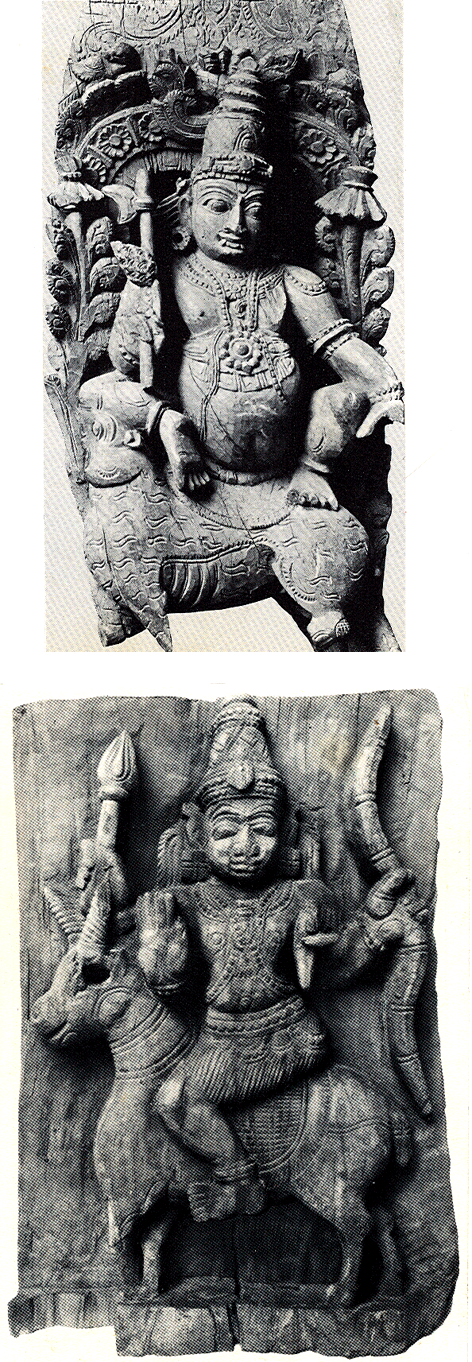You must not go wrong either in the enunciation or intonation of a mantra. If you do, not only will you not gain the expected benefits from it, the result might well be contrary to what is intended. So the mantras must be chanted with the utmost care. There is a story told in the Taittiriya Samhita (2.4.12) to underline this. Tvasta wanted to take revenge on Indra for some reason and conducted a sacrifice to beget a son who would slay Indra. When he chanted his mantra, "Indrasatrur varddhasva ", he went wrong in the intonation. He should have voiced "Indra" without raising or lowering the syllables in it and he should have raised the syllables "tru" and "rddha"(that is the two syllables are "udata"). Had he done so the mantra would have meant, "May Tvasta's son grow to be the slayer of Indra". He raised the "dra" in Indra, intoned "satru" as a falling svara and lowered the "rddha" in "varddhasva". So the mantra meant now: "May Indra grow to be the killer of this son (of mine)". The words of the mantra were not changed but, because of the erratic intonation, the result produced was the opposite of what was desired. The father himself thus became the cause of his son's death at the hands of Indra. The gist of this story is contained in this verse which cautions us against erroneous intonation.![]()
Mantrohinah svarato varnato va Mithya prayukto na tamarthamaha Sa vagvajro yajamanam hinasti Yathendrasatruh svarato' paradhat
What was the weapon with which Tvasta’s son was killed? Not Indra's thunderbolt but the father's wrongly chanted mantra.
Tvasta wanted to take revenge on Indra for some reason and conducted a sacrifice to beget a son who would slay Indra. When he chanted his mantra,"Indrasatrur varddhasva. . ", he went wrong in the intonation. He should have voiced "Indra" without raising or lowering the syllables in it and he should have raised the syllables "tru" and "rddha"(that is the two syllables are "udata"). Had he done so the mantra would have meant, "May Tvasta's son grow to be the slayer of Indra". He raised the "dra" in Indra, intoned "satru" as a falling svara and lowered the "rddha" in "varddhasva". So the mantra meant now: "May Indra grow to be the killer of this son (of mine)". The words of the mantra were not changed but, because of the erratic intonation, the result produced was the opposite of what was desired. The father himself thus became the cause of his son's death at the hands of Indra. The gist of this story is contained in this verse which cautions us against erroneous intonation. If the mantra differs by intonation, letter or another way while chanting, that mantra will become VajrAyudham(thunderbolt) and torment the YajamAnan(performer of sacrifice) who chants the mantra, just as the wrong recital of the 'indrashatru' phrase did. What was the weapon with which Tvasta 's son was killed? Not Indra's thunderbolt but the father's wrongly chanted mantra.
Taittiriya Samhita 2.4.12Vritra enveloped these worlds. Indra feared him. Tvastri dipped his bolt for him; the bolt was fervour; he could not restrain it.
Vritra is the belly; hunger is man's enemy; he who knows this, slays the enemy hunger.
Keith, Arthur Berriedale, tr: The Veda of the Black Yajus School: Entitled Taittiriya Sanhita. Vols. 1 and 2. Cambridge MA: The Harvard University Press, 1914.
ii. 4. 12.Tvastr, his son slain, offered Soma excluding Indra.
Indra desired an invitation to the rite, but he did not invite him, (saying), Thou hast slain my son.
He made a disturbance of the sacrifice, and forcibly drank the Soma.
The remains of it Tvastr cast upon the Ahavaniya (fire), saying, Hail! wax great, Indra s foe.
While (the fire) was flaming upwards to strike, just then of itself it stayed; whether so much was before [1], or so much was over the fire, be sprang up alive and came into union with Agni and Soma.
He grew on all sides an arrow(shot), he enveloped these worlds.
Because he enveloped these worlds, therefore is Vrtra, Vrtra.
Indra feared him, and Tvastr too; Tvastr dipped his bolt for him; the bolt was fervour; he could not restrain it.
Visnu [2] was another god; he said, Visnu, come hither; we will grasp that by which he is this world.
Visnu deposited himself in three places, a third on the earth, a third in the atmosphere, a third in the sky, for he was afraid of his growth.
By means of the third on earth Indra raised his bolt, aided by Visnu.
He said, Hurl it not at me; there is this [3] strength in me; I will give it to you.
He gave it to him, he accepted it, and (saying), Thou didst further me gave it to Visnu.
Visnu accepted it (saying), Let Indra place power (indriya) in us.
By means of the third in the atmosphere Indra raised his bolt, aided by Visnu.
He said, Hurl it not at me; there is this [4] strength in me; I will give it to you.
He gav it to him; he accepted it, and (saying), Twice hast thou furthered me gave it to Visnu.
Visnu accepted it (saying), Let Indra place power in us.
By means of the third in the sky Indra raised his bolt, aided by Visnu.
He said, Hurl it not at me; I will give to thee that by which I [5] am this world! He said, Yes.
(He replied), Let us make a compact; let me enter thee.
If thou dost enter me, in what way wilt thou enjoy me? I will kindle thee; I will enter thee for thine enjoyment he answered.
Vrtra entered him.
Vrtra is the belly; hunger is man s enemy; he who [6] knows this slays the enemy hunger.
He gave it to him; he accepted it, and (saying), Thrice hast thou furthered me gave it to Visnu.
Visnu accepted it (saying), Let Indra place power in us.
In that thrice he gave and thrice he accepted, that is the reason of the threefold character of the threefold.
In that Visnu aided him and he gave (it) to Visnu, therefore the offering belongs to Indra and Visnu.
Whatever there is here he gave to him, the Rcas, the Samans, the Yajuses.
A thousand he gave to him; therefore there are a thousand gifts.
On “Indrasatrur varddhasva” as faulty utterance, Patañjali's Mahābhāshya pradIpa for paspaśāhnika says it is "indrashatrurvardhasva". The tippaNI says its in Śatapatha 1/6/3.
The following is the relevant portion from pradIpa:
"tatra indrasya shamayitA shAtayitA vA bhava - iti kriyAshabdo atra shatrushabda AshritaH, tadAshrayaNe hi bahuvrIhitatpuruShayoH arthabhedaH. tatra indra-amitratve siddhe sati 'indrasya shatrurbhava' ityatrArthe pratipAdye antodAtte prayoktavye, AdyudAttaH R^itvijA prayuktaH iti - arthAntarAbhi dhAnAt indra eva vR^itrasya shAtayitA saMpannaH."
... indra-shatrur vardhasva (Note indra-shatru in prathamA and vardhasva as in "grow")
The pradIpa says:
In this matter, 'become the quencher or slayer of indra', that is the verb basis of this 'shatru'-word, and it is for that reason that the bahuvrIhi and tatpurushha compounds have different meanings. Given that the enmity to indra is beyond doubt, while wanting to signify that '(grow to) become the slayer of indra', where an udAtta final accent should have been used; the priest used an initial udAtta accent. So - because it carried the other meaning, it was indra that came to be the slayer of vR^itra.
indrḥ इन्द्रः [इन्द्-रन्; इन्दतीति इन्द्रः; इदि ऐश्वर्ये Malli.] 1 The lord of gods. -शत्रुः 1 an enemy or destroyer of Indra (when the accent is on the last syllable), an epithet of प्रह्लाद; इन्द्रशत्रो विवर्धस्व मा चिरं जहि विद्विषम् Bhāg.6.9.12. बलिप्रदिष्टां श्रियमाददानं त्रैविक्रमं पादमिवेन्द्रशत्रुः R.7.35. -2 [इन्द्रः शत्रुः यस्य] one whose enemy is Indra, an epithet of वृत्र (when the accent is on the first syllable). (This refers to a legend in the Śat. Br., where it is said that Vṛitra's father intended his son to become the destroyer of Indra, and asked him to say इन्द्रशत्रुर्वधस्व &c. but who, through mistake, accented the word on the first syllable, and was killed by Indra; cf. Śikṣā.52; मन्त्रो हीनः स्वरतो वर्णतो वा मिथ्याप्रयुक्तो न तमर्थमाह । स वाग्वज्रो यजमानं हिनस्ति यथेन्द्रशत्रुः स्वरतो$पराधात् ॥ (Apte, p. 386)
इन्द्र--शत्रु [p= 167,1] mfn. (/इन्द्र°) one whose enemy or conqueror is इन्द्र , conquered by इन्द्र RV. i , 32 , 6 TS. S3Br.; m. " इन्द्र's enemy (in this sense the accent is इन्द्र-शत्र्/उ cf. Introd. p. xviii)" , N. of प्रह्लाद Ragh. vii , 32 BhP. vi , 9 , 11 (with both the meanings) (Monier-Williams).
Tvashta was performing a sacrifice to produce a person (or device) capable of killing Indra (in revenge of Indra killing his son). Accordingly 'indrashatruH vardhasva' is a sacrificial pronouncement. The sacrifice was creating indrashatru (device) or indrashatruH (this is more correct since the outcome was vrittra). So Tvashta is just pronouncing 'tvaM vardhasva' or the equivalent 'indrashatruH vardhasva' ='(tvaM) indrashatruH vardhasva' .(also 'v^Ridh' is used only in Atmanepada but with exception can be used as Parasmaipada in the madhyama future, aorist, conditional and desiderative.)
https://www.mail-archive.com/sanskrit@cs.utah.edu/msg00348.html
A quote from H.H. Hock (Hans Henrich Hock, A critical examination of some early Sanskrit, in: Bela Brogyanyi, Reiner Lipp, 1993, Comparative-historical Linguistics: Indo-European and Finno-Ugric, John Benjamins Publishing, p.222). Note that Hock correctly notes that त्वष्टृ Tvaṣṭṛ who mispronounces, is a Divnity -- deva -- and not an Asura:
Excerpts from Eggeling's translation of SBr. 1.6.3:
THIRD BRÂHMANA. 1:6:3:1 1. Tvashtri had a three-headed, six-eyed son. He had three mouths; and because he was thus shaped, his name was Visvarûpa ('All-shape'). 1:6:3:2 2. One of his mouths was Soma-drinking, one spirit-drinking, and one for other kinds of food. Indra hated him and cut off those heads of his. 1:6:3:3 3. Now from the one which was Soma-drinking, a hazel-cock (francoline partridge) sprang forth; whence the latter is of brownish colour, for king Soma is brown. 1:6:3:4 4. From the one which was spirit-drinking, further, a sparrow sprang; whence the latter talks as if stammering, for he who has drunk spirits, talks as if he stammered. 1:6:3:5 5. Then from the one which served for other kinds of food, a partridge sprang; whence the latter is much variegated in colour: on its wings, namely, butter-drops, as it were, have dropped in one place and honey- (or mead-) drops in another, for suchlike, as it were, was the food which he consumed with that (mouth). 1:6:3:6 6. Tvashtri was furious: 'Has he indeed slain my son?' he exclaimed. He brought Soma-juice from which Indra was excluded; and just as the Soma-juice on being produced had Indra excluded from it (apendra), so it remained (when it was offered up). 1:6:3:7 7. Indra thought with himself, 'They are now excluding me from Soma!' and though uninvited, he consumed what pure (Soma) there was in the tub, even as the stronger (consumes) that of a weaker. That (Soma) however, injured him; it flowed in all directions from (the openings of) his vital airs; from his mouth alone it did not flow, but from all the other (openings of the) vital airs it flowed; hence (was instituted) at that time the ishti, called Sautrâmanî: on the occasion of that (ceremony) it is explained how the gods healed him 1. 1:6:3:8 8. Tvashtri was furious, and exclaimed, 'Has he indeed consumed my Soma uninvited?' However, he himself desecrated the sacrifice, for what pure (Soma) there was left in the tub he let flow (into the fire), saying, 'Grow thou, having Indra for thy foe 2!' The moment it reached the fire, it developed (into human shape), or, as some say, it so developed whilst on its way (to the fire). It became possessed of 1 Agni and Soma, of all sciences, all glory, all nourishment, all prosperity. 1:6:3:9 9. And since it so developed whilst rolling onwards (vrit), it became Vritra; and since he sprang forth footless, therefore he was a serpent. Danu and Danâyû received him like mother and father 2, whence they call him Dânava. 1:6:3:10 10. And because he (Tvashtri) said, 'Grow thou, having Indra for thy foe!' therefore Indra slew him (Vritra). Had he said, 'Grow thou, the foe (slayer) of Indra!' he (Vritra) would certainly have forthwith slain Indra. 1:6:3:11 11. And because he (Tvashtri) said, 'Grow thou!' therefore he (Vritra) grew an arrow's range sideways and an arrow's range forward: he forced back both the western ocean and the eastern one; and in proportion as he extended did he devour the food. 1:6:3:12 12. In the fore-noon the gods offered him food, at mid-day the men, and in the after-noon the Fathers. 1:6:3:1313. Now while Indra was thus moving on (in pursuit of Vritra), he addressed Agni and Soma, 'Ye belong to me and I belong to you! That one is nothing to you: why then do ye support that Dasyu against me? Come over to me!' 1:6:3:14 14. They replied, 'What is to be our reward in that case?' He offered them that Agni-Soma cake on eleven potsherds: this is the reason why there is a cake on eleven potsherds for Agni and Soma. 1:6:3:15 15. They went over to him, and after them went forth 1 all the gods, all the sciences, all glory, all nourishment, all prosperity: thus by offering that (cake to Agni and Soma) Indra became what Indra now is. Such then is the significance of the full-moon offering; and he who, knowing this, performs the full-moon offering in this wise, attains to the same state of prosperity, becomes thus endowed with glory, becomes such a consumer of food (as Vritra). 1:6:3:16 16. Now Vritra, on being struck, lay contracted like a leather bottle drained of its contents, like a skin bag with the barley-meal shaken out. Indra rushed at him, meaning to slay him. 1:6:3:17 17. He said, 'Do not hurl (thy thunderbolt) at me! thou art now what I (was before) Only cut me in twain; but do not let me be annihilated!' He (Indra) said, 'Thou shalt be my food!' He replied, 'So be it!' He accordingly cut him in twain; and from that (part) of his which was of the Soma nature 2, he made the moon, and that which was demoniacal (asurya) he made enter these creatures as their belly; hence people say 3: 'Vritra was then a consumer of food, and Vritra is so now.' For even now, whenever that one (the moon) waxes fuller, it fills itself out of this world 4; and whenever these creatures crave for food, they pay tribute to this Vritra, the belly. Whosoever knows that Vritra as a consumer of food, becomes himself a consumer of food. http://sacred-texts.com/hin/sbr/sbe12/sbe1228.htm
See: https://bharatkalyan97.blogspot.in/2017/01/tvasta-tvastr-ancestor-of-meluhha.html
Tvaṣṭā, Tvaṣṭṛ, ancestor of Meluhha artificers = Tuisco, Tuisto, ancestor of Germanic people. Emerges from Viśvakarma (Puruṣa sūktam)
This concordance may explain the presence of Proto-Indo-European words in Meluhha speech. A Meluhha speaker is signified on an Akkadian cylinder seal of Shu-ilishu, interpreter.
Akkadian. Cylinder seal Impression. Inscription records that it belongs to ‘S’u-ilis’u, Meluhha interpreter’, i.e., translator of the Meluhhan language (EME.BAL.ME.LUH.HA.KI) The Meluhhan being introduced carries an goat on his arm. Musee du Louvre. Ao 22 310, Collection De Clercq 3rd millennium BCE. The Meluhhan is accompanied by a lady carrying a kamaṇḍalu.
tvakṣ त्वक्ष् 1 P. (त्वक्षति, त्वष्ट) 1 To pare, hew, peel -2 To make thin. -3 To cover. tvakṣas त्वक्षस् a. Strength, might, power; उदावता त्वक्षसा पन्यसा च Rv.6.18.9. tvaṣṭa त्वष्ट p. p. Made thin, pared, peeled &c.त्वष्टिः tvaṣṭiḥ त्वष्टिः f. Carpentry. -m. N. of a mixed tribe (?).त्वाष्ट्र tvāṣṭra त्वाष्ट्र a. [त्वष्टा देवता अस्य अण्] Belonging to Tvaṣṭṛi; U.6.3. (v. l.). -ष्ट्री 1 The asterism चित्रा. -2 A small car. -ष्ट्रम् The creative power. त्वष्टृ [p= 464,1] m. a carpenter , maker of carriages (= त्/अष्टृ) AV. xii , 3 , 33;
" creator of living beings " , the heavenly builder , N. of a god (called सु-क्/ऋत् , -पाण्/इ , -ग्/अभस्ति , -ज्/अनिमन् , स्व्-/अपस् , अप्/असाम् अप्/अस्तम , विश्व्/अ-रूप &c RV. ; maker of divine implements , esp. of इन्द्र's thunderbolt and teacher of the ऋभुs i , iv-vi , x Hariv. 12146 f. R. ii , 91 , 12 ; former of the bodies of men and animals , hence called " firstborn " and invoked for the sake of offspring , esp. in the आप्री hymns RV. AV. &c MBh. iv , 1178 Hariv. 587 ff. Ragh. vi , 32 ; associated with the similar deities धातृ , सवितृ , प्रजा-पति , पूषन् , and surrounded by divine females [ग्न्/आस् , जन्/अयस् , देव्/आनाम् प्/अत्नीस् ; cf. त्व्/अष्टा-व्/अरूत्री] recipients of his generative energy RV. S3Br. i Ka1tyS3r. iii ; supposed author of RV. x , 184 with the epithet गर्भ-पति RAnukr. ; father of सरण्यू [सु-रेणु Hariv. ; स्व-रेणु L. ] whose double twin-children by विवस्वत् [or वायु ? RV. viii , 26 , 21 f.] are यमयमी and the अश्विन्s x , 17 , 1 f. Nir. xii , 10 Br2ih. Hariv. 545 ff. VP. ; also father of त्रि-शिरस् or विश्वरूप ib. ; overpowered by इन्द्र who recovers the सोम [ RV. iii f. ] concealed by him because इन्द्र had killed his son विश्व-रूप TS. ii S3Br. i , v , xii ; regent of the नक्षत्रचित्रा TBr. S3a1n3khGr2. S3a1ntik. VarBr2S. iic , 4 ; of the 5th cycle of Jupiter viii , 23 ; of an eclipse iii , 6 ; त्वष्टुर् आतिथ्य N. of a सामन् A1rshBr. ); a form of the sun MBh. iii , 46 Hariv. 13143 BhP. iii , 6 , 15
त्वक्ष् [p= 463,2](= √ तक्ष् and related to 2. त्व्/अच्) cl.1. °क्षति , to create , produce Nir. viii , 13 ; to pare Dha1tup. ; to skin ib. ; to cover ib. ; ([cf. प्र-त्वक्षाण्/अ ; Zd. thwakhsh , ÏÏ
κ , ÏÏ
Ï.])
|
The Germans themselves I should regard as aboriginal, and not mixed at all with other races through immigration or intercourse. For, in former times, it was not by land but on shipboard that those who sought to emigrate would arrive; and the boundless and, so to speak, hostile ocean beyond us, is seldom entered by a sail from our world. And, beside the perils of rough and unknown seas, who would leave Asia, or Africa, or Italy for Germany, with its wild country, its inclement skies, its sullen manners and aspect, unless indeed it were his home?In their ancient songs, their only way of remembering or recording the past, they celebrate an earth-born god, Tuisco, and his son Mannus, as the origin of their race, as their founders. To Mannus they assign three sons, from whose names, they say, the coast tribes are called Ingævones; those of the interior, Herminones; all the rest, Istævones. (Complete Works of Tacitus. Tacitus. Alfred John Church. William Jackson Brodribb. Lisa Cerrato. edited for Perseus. New York. : Random House, Inc. Random House, Inc. reprinted 1942, p.2). http://www.perseus.tufts.edu/hopper/text
"In ancient days, their only type of historical tradition, they celebrate Tuisto, a god brought forth from the earth. They attribute to him a son, Mannus, the source and founder of their people, and to Mannus three sons, from whose names those nearest the Ocean are called Ingvaeones, those in the middle Herminones, and the rest Istvaeones. Some people, inasmuch as antiquity gives free rein to speculation, maintain that there were more sons born from the god and hence more tribal designations—Marsi, Gambrivii, Suebi, and Vandilii—and that those names are genuine and ancient." (Germania, chapter 2;Tales of the Barbarians: Ethnography and Empire in the Roman West, p. 40, Greg Woolf, John Wiley & Sons; loc. cit. https://en.wikipedia.org/wiki/Mannus).
Tuesday (n.) third day of the week, Old English tiwesdæg, from Tiwes, genitive of Tiw "Tiu," from Proto-Germanic *Tiwaz "god of the sky," the original supreme deity of ancient Germanic mythology, differentiated specifically as Tiu, ancient Germanic god of war, from PIE *deiwos "god," from root *dyeu- "to shine" (see diurnal). Compare Old Frisian tiesdei, Old Norse tysdagr, Swedish tisdag, Old High German ziestag. http://etymonline.com/index.php
It is significant that, according to Tacitus, the Germanic peoples celebrate the earth-born god, Tuisco (variant Tuisto), a name derived from Rigveda, Tvaṣṭā, Tvaṣṭṛ, the divine artificer, born of Viśvakarma, the divine architect, artisan.
![Image result for Tuisco e Moni (divinità germaniche) From Manusk, 1774 book.]()
Tuisco e Moni (divinità germaniche) From Manusk, 1774 book.
![]() Tuisco from Promptuarii Iconum Insigniorum cf. Proto-Indo-European Society of ca. 2000 BCE (Simek, Rudolf (2007) translated by Angela Hall. Dictionary of Northern Mythology. D.S. Brewer) Tuisco from Promptuarii Iconum Insigniorum cf. Proto-Indo-European Society of ca. 2000 BCE (Simek, Rudolf (2007) translated by Angela Hall. Dictionary of Northern Mythology. D.S. Brewer)
![]() Tuiscon (Tuisto) as depicted in a German broadside by Nikolaus Stör c. 1543, with a caption by Burkard Waldis. Tuiscon (Tuisto) as depicted in a German broadside by Nikolaus Stör c. 1543, with a caption by Burkard Waldis.
Tuisto. First German. Ancestor of Germanic People. God. ![Image result for tuisto]() Tuisco Tuesday After Figure 1 shows a seventeenth-century imagining of the Germanic god Tuisco. Many in the seventeenth century believed that the Germans and their language (Deutsch, then often spelled Teutsch) were named after this supposed Germanic god. Tower of Babel in the background. https://blogs.nottingham.ac.uk/clas/2013/08/16/germania-remembered/ Germania Remembered 1500–2009. Commemorating and Inventing a Germanic Past, co-edited byDr Nicola McLelland (German) and Dr Christina Lee (English)Narrating the history of events in an extensive area of Eurasia ca. 3rd millennium BCE is a challenge. Many words undergo phonetic changes, e.g. Tvastr, Taksa as Tyr, Teshub, Tuisco, Tuisto. The narratives related to such persons however is related to their contributions in metallurgy and making of armour of the Bronze Age. It is possible to reasonably reconstruct the narrative out of the Tower of Babel thanks to decipherment of Indus Script Corpora as catalogus catalogorum of metalwork.Mirror: http://tinyurl.com/q2h4k7t "The Sanskrit Manu (both the name and the common noun for "man"), has given, in particular, the Germanic Mannus (-nn- from *-nw- regularly), mythical ancestor of the Germans." (Georges Dumézil, 1939, Mitra-Varuna, An Essay on Two Indo-European Representations of Sovereignty, New York, Zone books, p. 87; 1988 edition. Translated by Derek Coltman). Tuisco Tuesday After Figure 1 shows a seventeenth-century imagining of the Germanic god Tuisco. Many in the seventeenth century believed that the Germans and their language (Deutsch, then often spelled Teutsch) were named after this supposed Germanic god. Tower of Babel in the background. https://blogs.nottingham.ac.uk/clas/2013/08/16/germania-remembered/ Germania Remembered 1500–2009. Commemorating and Inventing a Germanic Past, co-edited byDr Nicola McLelland (German) and Dr Christina Lee (English)Narrating the history of events in an extensive area of Eurasia ca. 3rd millennium BCE is a challenge. Many words undergo phonetic changes, e.g. Tvastr, Taksa as Tyr, Teshub, Tuisco, Tuisto. The narratives related to such persons however is related to their contributions in metallurgy and making of armour of the Bronze Age. It is possible to reasonably reconstruct the narrative out of the Tower of Babel thanks to decipherment of Indus Script Corpora as catalogus catalogorum of metalwork.Mirror: http://tinyurl.com/q2h4k7t "The Sanskrit Manu (both the name and the common noun for "man"), has given, in particular, the Germanic Mannus (-nn- from *-nw- regularly), mythical ancestor of the Germans." (Georges Dumézil, 1939, Mitra-Varuna, An Essay on Two Indo-European Representations of Sovereignty, New York, Zone books, p. 87; 1988 edition. Translated by Derek Coltman).
![]()
![]()
![]()
1. HE who sate down as Hotarpriest-, the Rsi, our Father, offering up all things existing,
He, seeking through his wish a great possession, came among men on earth as archetypal.
2 What was the place whereon he took his station? What was it that supported him? How was it?
Whence Visvakarman, seeing all, producing the earth, with mighty power disclosed the heavens.
3 He who hath eyes on all sides round about him, a mouth on all sides, arms and feet on all sides,
He, the Sole God, producing earth and heaven, weldeth them, with his arms as wings, together.
4 What was the tree, what wood in sooth produced it, from which they fashioned out the earth and
heaven?
Ye thoughtful men inquire within your spirit whereon he stood when he established all things.
5 Nine highest, lowest, sacrificial natures, and these thy midmost- here, O Visvakarman,
Teach thou thy friends at sacrifice, O Blessed, and come thyself, exalted, to our worship.
6 Bring thou thyself, exalted with oblation, O Visvakarman, Earth and Heaven to worship.
Let other men around us live in folly here let us have a rich and liberal patron.
7 Let us invoke today-, to aid our labour, the Lord of Speech, the thoughtswift- Visvakarman.
May he hear kindly all our invocations who gives all bliss for aid, whose works are righteous.
1. THE Father of the eye, the Wise in spirit, created both these worlds submerged in fatness.
Then when the eastern ends were firmly fastened, the heavens and the earth were far extended.
2 Mighty in mind and power is Visvakarman, Maker, Disposer, and most lofty Presence.
Their offerings joy in rich juice where they value One, only One, beyond the Seven Rsis.
3 Father who made us, he who, as Disposer, knoweth all races and all things existing,
Even he alone, the Deities' narnegiverhim-, other beings seek for information.
4 To him in sacrifice they offered treasures, Rsis of old, in numerous troops, as singers,
Who, in the distant, near, and lower region, made ready all these things that have existence.
5 That which is earlier than this earth and heaven, before the Asuras and Gods had being,
What was the germ primeval which the waters received where all the Gods were seen together?
6 The waters, they received that germ primeval wherein the Gods were gathefed all together.
It rested set upon the Unborns' navel, that One wherein abide all things existing.
7 Ye will not find him who produced these creatures: another thing hath risen up among you.
Enwrapt in misty cloud, with lips that stammer, hymnchanters- wander and are discontented. Whence Visvakarman, seeing all, producing the earth, with mighty power disclosed the heavens. 5 Nine highest, lowest, sacrificial natures, and these thy midmost- here, O Visvakarman, 6 Bring thou thyself, exalted with oblation, O Visvakarman, Earth and Heaven to worship.
rvs.1.1310 Tvastar I call, the earliest born, the wearer of all forms at will:
rvs.1.322 He slew the Dragon lying on the mountain: his heavenly bolt of thunder Tvastar fashioned.rvs.1.52Tvastar gave yet more force to thine appropriate strength, and forged thy thunderbolt of
rvs.1.616 Even for him hath Tvastar forged the thunder, most deftly wrought, celestial, for the battle,rvs.1.80even Tvastar trembled at thy wrath and quaked with fear because of thee, lauding thine own
rvs.1.859 When Tvastar deft of hand had turned the thunderbolt, golden, with thousand edges, fashionedrvs.1.14210 May Tvastar send us genial dew abundant, wondrous, rich in gifts,
rvs.1.1615 As Tvastar thus had spoken, Let us slay these men who have reviled the chalice, drinkingcup- ofrvs.1.162While Tvastar sends him forward with the Charger, acceptable for sacrifice, to glory.
rvs.1.1866 Moreover Tvastar also shall approach us, oneminded- with the princes at his visit.
rvs.1.1889 Tvastar the Lord hath made all forms and all the cattle of the fieldrvs.2.15 Thou givest strength, as Tvastar, to the worshipper: thou wielding Mitras' power hast kinship
rvs.2.3May Tvastar lengthen our line and kindred, and may they reach the place which Gods inhabit.rvs.2.2317 For Tvastar, he who knows each sacred song, brought thee to life, preeminent over all the
rvs.3.49 Well pleased with us do thou O God, O Tvastar, give ready issue to our procreant vigour,rvs.3.74 Strengthgiving- streams bear hither him eternal, fain to support the mighty work. of Tvastar.
rvs.3.48even from his birthtime- Indra conquered Tvastar, bore off the Soma and in beakers drank it.rvs.3.5412 Deft worker, skifulhanded-, helpful, holy, may Tvastar, God, give us these things to aid us,
rvs.4.33Four beakers let us make, thus spoke the youngest. Tvastar approved this rede of yours, O Rbhus.rvs.4.33And Tvastar, when he looked on the four beakers resplendent as the day, was moved with envy.
rvs.4.42These the two worldhalves- have I, even as Tvastar knowing all beings, joined and held together.rvs.5.59 Rich in all plenty, Tvastar, come auspicious of thine own accord
rvs.5.314. Anus have wrought a chariot for thy Courser, and Tvastar, Muchinvoked-! thy bolt that glitters.
rvs.7.29 Well pleased with us do thou, O God, O Tvastar, give ready issue to our procreant vigour,
rvs.7.3420 What time our wives draw near to us, may he, lefthanded- Tvastar, give us hero sons.
rvs.8.918 That through this famed Ones' power, he may stand by us even as Tvastar comes
rvs.9.59 1 summon Tvastar hither, our protector, champion, earliestborn-,
rvs.10.8Then Trita slew the foe sevenrayed-, threeheaded-, and freed the cattle of the Son of Tvastar.rvs.10.8He smote his three heads from his body, seizing the cattle of the oniniform Son of Tvastar.
rvs.10.483 For me hath Tvastar forged the iron thunderbolt: in me the Gods have centred intellectual power.
![]()
1. THE Father of the eye, the Wise in spirit, created both these worlds submerged in fatness.
Then when the eastern ends were firmly fastened, the heavens and the earth were far extended.
2 Mighty in mind and power is Visvakarman, Maker, Disposer, and most lofty Presence.
Their offerings joy in rich juice where they value One, only One, beyond the Seven Rsis.
3 Father who made us, he who, as Disposer, knoweth all races and all things existing,
Even he alone, the Deities' narnegiverhim-, other beings seek for information.
4 To him in sacrifice they offered treasures, Rsis of old, in numerous troops, as singers,
Who, in the distant, near, and lower region, made ready all these things that have existence.
5 That which is earlier than this earth and heaven, before the Asuras and Gods had being,
What was the germ primeval which the waters received where all the Gods were seen together?
6 The waters, they received that germ primeval wherein the Gods were gathefed all together.
It rested set upon the Unborns' navel, that One wherein abide all things existing.
7 Ye will not find him who produced these creatures: another thing hath risen up among you.
Enwrapt in misty cloud, with lips that stammer, hymnchanters- wander and are discontented.
Tvaṣṭā, is the heavenly builder, the maker of divine implements, especially Indra's Vajra and the guardian of Soma.
Tvaṣṭṛ is mentioned 65 times in the Ṛgveda
Macdonell, Arthur Anthony (1995). "Abstract Gods". Vedic mythology. Vedas. Motilal Banarsidass Publ. pp. 116–118.
Map showing the approximate locations of the major Germanic tribes in and around the geographical region of Germania as mentioned in Tacitus' work, the Germania. Tuisto (Tuisco) is the ancestor of the Germanic People according to Tacitus (98 CE).
Celestial Creator in Art Thought and Literature
By Choodamani Nandagopal
“Visvakarma, the Lord of the arts, master of a thousand handicrafts,
carpenter of the gods and builder of their palaces divine, fashioner
of every jewel, first of craftsmen, by whose art men live, and whom,
a great and deathless god, they continually worship.”
– Mahabharata
Rig Veda, tenth Mandalasuktas 81 and 82[i] RV carries two suktas in the name of Vishvakarma so also of Indra, Agni and Maruts. The citation goes as Rishi Vishvakarma Bhauvana, the Creator Vishvakarma, the maker of all that exist in the world manifested, who executes the process of creation on the earth and heaven as a Designer. Vishvakarma in sukta 82 is addressed as the father of vision, wise in spirit, originator of the two worlds, rich in light, having the comprehensive mind. He is the Disposer, Ordained and the highest Seer. He knows all the worlds and domains and He alone assigns the names to the Gods. [i]R.L.Kashyap,Rig Veda Samhita Mandala 10, Sri Aurobindo Kapali Shastry Institute of Vedic Culture,
2012, p 254 to 259
Portrayal of Vishvakarma in Vedas
Lord Sri Vishvakarma is the origin of all sculptures, the creator of the varied architecture of this universe and the source of all forms, names and actions. He existed even before creation and is the cause of not only the cycle of creation, sustenance and destruction but even the condemnation and grace later on.Hekeeps Mother Gayatriin his heart and has provided refuge at His feet for Saraswati, the Goddess of Knowledge. Preoccupied with the dharma of their duties, Vishnu, Shiva, Brahma and other Gods rely on Him for their powers and are His instruments.
He is beyond description (nirguna) and formless (niraakaara). He is as high as the Meru Mountain and is seated on an effulgent seat. He is adorned with bracelet, armlet, gem-studded garlands, a crown decked with divine gems, earrings and yellow clothing. He shines like lightning and dazzles all the eyes that try to see Him. He is also known as Prajapati and Hiranyagarbha. The clouds are his vehicle.
Through a yajna he created the universe and is the first yajnakartru.He is like the divine kalpavriksha and fulfils the desires of devotees who surrender unto Him.He is everlasting and is the ultimate truth.He is called the Lord of speech by Vedarshis. He is the ocean of origin for all the vedaagamas. He is said to be equally versatile in jnana and karma yogas and can be considered to be the tattvic origin of all divine forms.He is the priest who makes offerings to the sacrificial fire, the father who created everything and the one who protects and nurtures everything. He is the cause for all the worlds to be glowing with prosperity and the one in whom all the worlds converge just the way all the spokes of a chariot wheel converge at the centre. The closing of His eyelids signify the end of the world and His auspicious glance is the cause of creation.
The SvayambhuVishvakarma is honoured not only for creation of the universe but also for having initiated sacrifice and then given the example by sacrificing himself. In later times when he assumes the form of Tvastra Brahma, and in this new position of hierarchy his role is relegated to an architect of the gods. He built the heavens and palaces to gods, such as Indra’s Vyjayanta, Kubera’s and then Ravana’s Lanka, Pandavas palace at Indraprastha. As Tvashtri, he created many of the chariots, including that of Pushpaka of Kubera. He takes pride in preparing suitable and appropriate weapons to gods that included the thunderbolt of Indra, the lance of Kartikeya, the trident of Siva and the discus of Vishnu. It is believed that when the part of Surya’s substance fell blazing, Vishvakarma put on the lathe and created the strongest weapon synonyms to the power of these gods. Varahamihira, in Brhat Samhita, while introducing a chapter on architecture mentions about the thee architects namely, Visvakarma, Maya and Kama, who have given the architectural vision of dwelling places for gods, kings, Brahmanas, Kshatriyas and Shudras. The temple is built in the likeness of universe and is reduced image. The architect of this world image, the temple, is looked upon as descended from, and in his sphere alike to,
Further, Stella Kramrisch adds, that ‘with regard to the making of universe, Visvakarma is the working, Brahma the thinking aspect of the Supreme Principle’. Varahamihira in the chapter on the Glory of Indra’s Banner, describes the jewels offered by the Gods to decorate the Indra Dhvaja. Amongst all the gods, the first to offer an ornament red like the Asoka flowers and of quadrangular form was Visvakarma, the celestial architect and followed by Siva, Indra, Yama, Varuna, Vayu, Skanda, Agni, Surya, Tvasta, Visve-Devas, Guru, Shukra and other sages. These ornaments are taken as the celestials are presided before the Indra-Dhvaja. This establishes the supreme place of Visvakarma in the order and cadre of the deities worshipped in any of the auspicious occasions or temple festivals.
Veronica Ions, Indian Mythology,Newnes Books, 1983 P 83
M. Ramakrishna Bhat, Varahamihira’s Brhat SamhitaChapter LIII – p460 – 470
Stella Kramrisch, The Hindu Temple VolI, Motilal Banarsidass Publ., 1996, p 11
There are quite a number of historical inscriptions in the temples, where the mentioning of the historical architect in comparison with the celestial architect Visvakarma. One such inscription found on the mantapa of the Purana Mahadeo Temple, Sikar Rajputana states, “The architect (Sutradhara) of this temple of Siva (Sankarabhavana) was Candasiva, the famed son of Virabhadra, omniscient like Visvakarman in the science of architecture” The Visvakarma tradition in temple building is of greater significance and many of the texts have been compiled and working manuals were created from time to time by the master artisans on the basis of the science and art of architecture and iconography of the Visvakarma lineage. The icon of Visvakarma Panchami Brahma has the five faces representing Sadyojaata, Vaamadeva, Aghora, Tatpurusha, Eeshaana aspects and ten hands holding on right side trishula, chakra, bana, sarpa and akshamala, while on left side holding dhamaru, sankha, dhanus, vina and kumuda pushpa, signifying the attributes of the trimurti namely, Brahma, Vishnu and Mahesha.
The Dhyanashlokas to be meditated on the different forms of Vishvakarma with reference to the Kashyapa Shilpa text:
श्रीवाण्याश्रित पादपद्म युगळम् विद्युत्प्रभा भासुरम्
गायत्रीयुतमव्ययम् दशभुजम् मेर्वग्र पीठोज्ज्वलम्
देवर्षिस्तुत पञ्चवक्त्रमभवम् मन्दस्मितास्यम् शिवम्
वन्दे शिल्पसहस्र मूलपुरुषम् श्री विश्वकर्म प्रभुम् ||1||
केयूरैः कटकैर्विभूषितकरम् हारावळी सम्युतम्
दीव्यद्रत्न किरीटकुण्डलधरम् पीताम्बरालङ्कृतम्
सृष्ट्यादि त्रय हेतुमूलवपुषम् मेघाधिरूढोज्ज्वलम्
सर्वाभीष्ट वर प्रदायकमहम् वन्दे तमीशम् सदा ||2||
येन च होत्रा पित्रा भर्त्रा विलसन्ति सकल भुवनानि
यन्नाभा वरपटलम् तम् वन्दे विश्वकर्माणम् ||4||
यस्य निमेषः प्रळयो जगतामुदयश्च यच्छुभोन्मेषः
यद्रूपम् जगदखिलम् तम् वन्दे विश्वकर्माणम् ||5||
हरिहर हिरण्यगर्भ प्रमुखादेवा स्वकर्म परतन्त्राः
अङ्गानि यस्य महसस्तम् वन्दे विश्वकर्माणम् ||6||
1. Lord Sri Vishvakarma, who is the origin of all sculptures, the creator of the varied architecture of this universe, the source of all forms, names and actions, has provided refuge at His feet for Saraswati, the Goddess of Knowledge and is called the Lord of speech by Vedarshis. He is the ocean of origin for all the vedaagamas, shines like lightning and is dazzling all the eyes that try to see Him. He, who is nurturing all creatures by keeping Mother Gayatri, protective armour of the whole of creation, in his heart, who is as high as the Meru Mountain, is seated on an effulgent seat and fulfils the desires of devotees who surrender unto Him, like the divine kalpavriksh
2. I salute the Lord of the world, Sri Vishvakarma, who is the cause of not only the cycle of creation, sustenance and destruction but even the condemnation and grace later on, who is adorned with bracelet, armlet, stone-studded garlands, a crown decked with divine gems, earrings, yellow cloth and having the clouds as vehicle and who fulfils the wishes of His devotees.
4. I bow to Lord Vishvakarma who is the priest who makes offerings to the sacrificial fire, the father who created everything, the one who protects and nurtures everything, the cause for all the worlds to be glowing with prosperity and the one in whom all the worlds converge just the way all the spokes of a chariot wheel converge at the centre.
5. I prostrate to Lord Vishvakarma, the closing of whose eyelids signify the end of the world and whose auspicious glance is the cause of creation.
6. I bow to Lord Vishvakarma in whom, preoccupied with the dharma of their duties, Vishnu, Shiva, Brahma and other Gods rely on for their powers and whose instruments they are.
Pancha Brahmas
![panch]()
Vishvakarma has the form of Shuddha (pure) Brahma and is effulgent with five faces. These five faces are called Sadyojaata, Vaamadeva, Aghora, Tatpurusha, Eeshaana. The five Vedas originate from these five faces. The five Brahmas namely Saanaga, Sanaatana, Ahabhoovana, Pratna and Suparna were born from these five faces.
श्री पञ्चास्य विराजितम् तदुदय तत्पञ्च वेद प्रभुम्
पञ्चब्रह्म निदानमाद्यमलम् तद्विश्वकर्मात्मकम्
शुद्ध ब्रह्म समप्रपञ्चक जनिस्थित्यन्त हेतुम् विभुम्
स्वान्ते नित्यमुपास्महेति सकलाभिष्टार्थ संसिद्धये ||3||
1. I constantly prostrate to the Shuddha (pure) Brahma, the form of Vishvakarma, who is effulgent with five faces, who is the reason for the five Vedas originating from these five faces, who effected the birth of the five Brahmas namely Saanaga, Sanaatana, Ahabhoovana, Pratna, Suparna, who existed even before creation and is the reason for creation, sustenance, destruction and the condemnation and grace later on, is everlasting and is the ultimate truth, for the fulfilment of all my desires.
Manu Brahma- Lord of iron sculpture Lord of Rock Sculpture emerged from the Sadyojata face of Vishvakarma
![manu-bramha]()
The first among the pancha brahmas was born out of the face Sadyojaata and is called Manu Brahma. He has the colour of a pure Sphatika flower (white). He is companion to Adishakti and is the epitome of peace. He is the lord of the Rigveda and is the founder of Rig shaakha. He is also known as Saanaga and Rudra and is the lord of the sacrificial altar having three corners. He is the founder of iron sculpture. Dark clouds are his vehicle. He is the lord of the eastern direction.
.
सद्योजात मुखाज्जातम् शुद्ध स्फटिक सन्निभम्
आदिशक्तियुतम् शान्तम् ऋग्वेदस्याधिनायकम्
त्रिकोणकुण्ड होतारम् कालमेघोपरिस्थितम्
लोहकृन्मूल पुरुषम् मनुम् ध्यात्वाऽर्चयाम्यहम् ||10||
Lord Vishvakarma has five faces called Sadyojaata, Vaamadeva, Aghora, Tatpurusha, Eeshaana. The one who was born out of the face Sadyojaata was the first among the pancha brahmas and is called Manu Brahma. He has the colour of a pure Sphatika flower (white), is companion to Adishakti and is the epitome of peace. He is the lord of the Rigveda and is the founder of Rig shaakha. He is also known as Saanaga and Rudra and is the lord of the sacrificial altar having three corners. He is the founder of iron sculpture, the first of the five brahmas and has dark clouds as his vehicle. He is the lord of the East. I meditate upon and worship Him.
Maya Brahma- Lord of sculpture in wood and boat-making
![maya-bramha]()
The second among the five brahmas, Maya Brahma, was born out of the face Vaamadeva. He is blue in colour. He is one with Paraashakti and is protecting and nurturing all the worlds. He has given rise to Yajurveda and is its founder. He is the lord of sacrifices in the four-cornered sacrificial altar. He is also called Sanaatana and Vishnu. He is the founder of Daarushilpa (sculpture in wood) and Naukaashilpa (Dheemaan). He is the lord of the southern direction.
वामदेव मुखोद्भूतः मेघवर्णो महाद्युतिः
पराशक्तियुतो देवो यजुर्वेदाधिनायकः
धीमान् चतुष्कोणकुण्ड होता नीलाभ्रवाहनः
दारुकृन्मूल पुरुषः पातुमाम् सर्वदा मयः ||11||
The second among the five brahmas, Maya Brahma, born out of the face Vaamadeva is blue in colour, one with Paraashakti and is nurturing all the worlds. He has given us the Yajurveda and is its founder. He is the lord of sacrifices in the four-cornered sacrificial altar. He is also called Sanaatana and Vishnu. He is the founder of Daarushilpa (sculpture in wood) and Naukaashilpa (Dheemaan) and is protecting all the worlds. He is the lord of the southern direction. May He protect us always
Tvashtru Brahma- Lord of Brass and Bronze Sculpture
![Tvashtru Brahma]()
The third among the five brahmas is Tvashtru Brahma. He was born out of the Aghora face of Lord Vishvakarma. He is blood-red in colour and is the lord of Saama Veda. He is the lord of the circular sacrificial altar. He is the consociate of Icchaashakti. He is also called Ahabhoona and Brahma. He is the lord of the western direction. He has given birth to Saamaveda and is its founder. He is the founder of Kaamsya (brass) and Taamra (bronze) forms of sculpture.
अघोर मुख सञ्जातम् महामाणिक्य सन्निभम्
इच्छाशक्तियुतम् वृत्तकुण्ड होतारमव्ययम्
सामवेदाधिपम् रक्त मेघवाहन सम्स्थितम्
ताम्रकृन्मूल पुरुषम् त्वष्टारम् पूजयाम्यहम् ||12||
The third among the five brahmas is Tvashtru Brahma. He was born out of the Aghora face of Lord Vishvakarma. He is blood-red in colour and is the lord of Saama Veda. He is the lord of the circular sacrificial altar and is one with Icchaashakti. He is also called Ahabhoona and Brahma. He is the lord of the western direction. He has given the Saamaveda and is its founder. He is the founder of Kaamsya (brass) and Taamra (bronze) forms of sculpture. I meditate upon and worship Him.
Shilpi Brahma- emerged from the Tatpurusha face of Vishvakarma
Shilpi Brahma was born from the Tatpurusha face of Vishvakarma and is the fourth of the pancha brahmas. He is of the colour of smoke and is also called Pratna and Indra. He is the lord of the sacrificial altar with six corners and is associated with Kriyaashakti. He is the lord of the northern direction. He is the founder of Atharva Veda and rock sculpture.
तत्पुरुष मुखज्जातम् श्याम वर्णम् महौजसम्
षट्कोणकुण्ड होतारम् क्रियाशक्तियुत प्रभुम्
अथर्वाम्नाय नेतारम् श्वेतमेघोपरिस्थितम्
शिलाकृन्मूल पुरुषम् शिल्पिनम् प्रणमाम्यहम् ||13||
Shilpi Brahma was born from the Tatpurusha face of Vishvakarma and is the fourth of the pancha brahmas. He is of the colour of smoke and is also called Pratna and Indra. He is the lord of the sacrificial altar with six corners and is associated with Kriyaashakti. He is the lord of the northern direction. He is the founder of Atharva Veda and rock sculpture. I salute Him.
Vishvajna Brahma emerged from the Eeshana face of Vishvakarma
Vishvajna Brahma is the fifth among the five brahmas and was born from the Eeshaana face of Vishvakarma. He glows with the colour of gold. He is the lord of the upward direction and is also known as Suparna and Soorya. He is seated on a yellow cloud and has brought Pranava Veda. He is the companion of Jnaanashakti and is the lord of the sacrificial altar with eight corners. He is the founder of sculpture in gold (svarna shilpa).
ईशानमुख सञ्जातः तप्तकाञ्चन सन्निभः
ज्ञानशक्तियुतः पीत मेघ पृष्ठो परिस्थितः
प्रणव शृतीशाष्टास्र कुण्ड होता महामतिः
स्वर्णकृन्मूल पुरुषो विश्वज्ञः पातु माम् सदा ||14||
Vishvajna Brahma was born from the Eeshaana face of Vishvakarma, is the fifth among the five brahmas and glows with the colour of gold. He is the lord of the upward direction and is also known as Suparna and Soorya. He is seated on a yellow cloud and has brought Pranava Veda. He is the companion of Jnaanashakti and is the lord of the sacrificial altar with eight corners. May he, the founder of sculpture in gold (svarna shilpa), protect us always.
Conclusion:
Vishvakarma, the Celestial architect is not just a mythical persona but the legendary figure of a living tradition of Indian art and architecture. The traditional craftsmen and artists were come to be designated as the Vishvakarma Brahmins in course of time and they considered themselves as analogy of the divine architect Vishvakarma. The Rigveda, Mandala ten two sets of suktas are chants describing the creative power of Vishvakarma. The ancient text Vishvakarmiyam is believed to be the direct form of science and art of vastushilpa rendered by Vishvakarma. In some of the regions the vishvakarma tradition of iconography and iconometry are followed even today and the traditional sculptors of Karnataka are the true representatives of the cultural heritage of vishvakarma .
I acknowledge the support of Mr. Naresh, master craftsperson, Artisan Centre, Canara Bank Bidadi for the drawings of Vishvakarma and Sanskrit rendering Miss. Madhuvanti, Research Scholar Jain University. Sources for writing this part of text- Jnanananda, G. Kashyapa Shilpa Shastra (Uttarardha). Karnataka Shilpakala Academy. 1998:Bangalore.
![]() Cave 10 Visvakarma cave, Ellora Cave 10 Visvakarma cave, Ellora![]() ![]() Two views of Mitanni Storm Divinity, Teshub. Axe (paras'u) in his upraised right hand and a vajra (thunderbolt) in his left hand. The trident is also pictured in Mitanni seals. He wears a short fringed tunic with a wide belt. His horned helmet is reminiscent of the bull figures often associated with him. The photo on the left is from the Hittite capital in Turkey. Two views of Mitanni Storm Divinity, Teshub. Axe (paras'u) in his upraised right hand and a vajra (thunderbolt) in his left hand. The trident is also pictured in Mitanni seals. He wears a short fringed tunic with a wide belt. His horned helmet is reminiscent of the bull figures often associated with him. The photo on the left is from the Hittite capital in Turkey.
Teshub was the divinity of the sky, weather and storms (Hurrian).
Invocation to Tvaṣṭr̥.![]()
RV 1.113.10 I invoke the chief and multiform Tvas.t.r. (= Vis'vakarma_); may he be solely ours. Sayana explains: Tvas.t.a_ = Vis'vakarma_, artificer of the gods, the fabricator of the original sacrificial vase or ladle. tvas.t.a_ vai pas'u_na_m mithuna_na_m ru_kakr.t---iti s'ruteh (Taittiri_ya.Sam.hita_ 6.1.8.5): Tvas.t.a_ forms in animals in pairs. This remarkable elucidation seems to anticipate the characteristic hieroglyphic multiplex forms -- particularly antithetical, pairs -- of composite animals used repeatedly in Indus Script Corpora. This characteristic pairing seems to be reflected in the explanation for the cognate word Tuisto in Germania -- as derived from tvai 'two':
Tvastar, Tuisto, Ymir. According to Tacitus's Germania (98 CE), Tuisto is the divine ancestor of the Germanic peoples...Tuisto, is commonly connected to the Proto-Germanic root tvai ("two") and its derivative tvis ("twice"; "doubled")...Jacob argues that the Germanic Tuisto (assuming a connection with Tvastr) must originally have been the grandfather of Ymir (cognate to Yama). Incidentally, Indian mythology also places Manu (cognate to Germanic Mannus), the Vedic progenitor of mankind, as a son of Vivaswān, thus making him the brother of Yama/Ymir.(Jacob, Alexander (2005). Ātman: A Reconstruction of the Solar Cosmology of the Indo-Europeans. Georg Olms Verlag., p.232)...According to Rives (1999), the fact that the ancient Germanic peoples claimed descent from an earth-born god was used by Tacitus to support his contention that they were an indigenous population: the Latin word indigena was often used in the same sense as the Greek autochthonos, meaning literally '[born from] the earth itself' (from χθών – chthōn "earth").(Rives, J. B. (1999) (Trans.) Tacitus' Germania. Oxford University Press, pp. 111-112.) https://en.wikipedia.org/wiki/Tuisto ![Suryadeva.jpg]() Surya with consorts Saranyu (Sanjna) and Chhaya. Saranyu is the daughter of Tvastar Surya with consorts Saranyu (Sanjna) and Chhaya. Saranyu is the daughter of Tvastar
Saranya (Saraṇyū) or Saraniya (also known as Saranya, Sanjna, or Sangya) is the consort of Surya, and the divinity of clouds in Hindu tradition. She marries Vivasvat and is mother of Revanta, the twin Asvins, Manu, the twins Yama and Yami. Saraṇyū is the female form of the adjective saraṇyú, meaning "quick, fleet, nimble", used for rivers and wind in the Rigveda. https://en.wikipedia.org/wiki/Saranyu
RV 10.17.1-2: Tvastar prepares the bridal of his Daughter: all the world hears the tidings and assembles.But Yama's Mother, Spouse of great Vivasvat, vanished as she was carried to her dwelling.From mortal men they hid the Immortal Lady, made one like her and gave her to Vivasvat.Saranyu brought to him the Asvin brothers, and then deserted both twinned pairs of children.
![]() ![]()
10.017.01 Tvas.t.a_ celebrates the marriage of his daughter; therefore, the whole world is assembled; but the mother of Yama, the newly-married wife of the mighty Vivasvat, disappeared. [Deity Saran.yu_: The legend: Saran.yu_, the daughter of Tvas.t.a_, was given in marriage to Vivasvat, and had by him Yama and Yami_. Intimidated by his ardour, she substituted another female, her shadow, Cha_ya_, for herself, and going to Uttarakuru, changed herself to a mare. Vivasvat begot Manu by Cha_ya_, when, finding his error, he set off to look for his wife. Discovering her disguise, he transformed himself to a horse, and had by his wife the two As'vins].
10.017.02 The gods concealing the immortal (Sarn.yu_) for th esake of mortals and having formed her, gave her to Vivasvat. She bore the two As'vins when this had happened and then Saran.yu_ gave birth to two twins. [For the sake of mortals: maryebhyah = manus.yebhyas tadutpattyartham, for men, i.e. that men might be born. Manu was the offspring of Vivasvat and the woman resembling Saran.yu_ and all men are descended from Manu; the two twins: Yama and Yami_, but dva_ mithuna_, may mean two pairs of twins, Yama and Yami_, the first pair and the As'vins the second].
10.017.03 May the discriminating Pu_s.an, whose cattle are never lost, the protector of all beings, transfer you hence (to a better world); may he give you to these Pitr.s; may Agni (give) you to the beneficent gods. [This and the following three r.cas are to be recited at the funeral rites of a man who has been duly initiated, di_ks.ita].
10.017.04 May the all-pervading Va_yu protect you, may Pu_s.an (preserve) you, (going) first on the excellent path (to heaven); may the divine Savita_ place you, where the virtuous abide, whither they have gone. [a_yu = Va_yu].
10.017.05 Pu_s.an knows all these regions severally; met him conduct us by (the path) that is most free from peril; let him precede us, who is the giver of prosperity, endowed with radiance, accompanied by all pious men, ever vigilant, and knowing our (deserts).
10.017.06 Pu_s.an has been born on the best path of paths, on the best path of heaven on the best path of earth, he goes forward and backward over both (worlds), the assemblies longed for by all, discriminating (the merits of the dead). [Pu_s.an has been born: i.e., manifested in order to conduct men after death to their destination, according to their merits; he goes forward: i.e., favourably to the virtuous to show the fruit of good owrks, backward, i.e., he walks adversely to the wicked; discriminating the merits: i.e., he walks adversely to the wicked].
10.017.07 The devout invoke Sarasvati_; they worship Sarasvati_ at the strewn sacrifice; the virtuous call upon Sarasvati_; may Sarasvati_ bestow blessings upon the donor (of the oblation).
10.017.08 Divine Sarasvati_, who rides in the same chariot with the Pitr.s, and delighted (along with them) by the (sacrificial) viands, seated on the sacred grass gratified (by our offering, and grant us wholesome food.
10.017.09 Sarasvati_, whom the Pitr.s invoke when circumambulating sacrifice on the right, bestow upon the worshippers at this sacrifice a portion of food fit for thousands, and increase of riches.
10.017.10 May the maternal waters, purify us; may the shedders of water purify us with the effusion; for the divine (waters) bear away all sin; I come away from them purified (to heaven). [Shedders of water...with effusion: ghr.tena no ghr.tapvah punantu: waters which purify others by water; ghr.ta = effused water; ghr.tapvah = divinities presiding over effused water; or, ghr.ta = oiled butter (Yajus. 4.2); udemi = I go to heaven (S'atapatha Bra_hman.a 3.1.2.11)].
10.017.11 The Soma has risen to the earthly and heavenly (worlds), both this visible world, and that which (existed) before (it); I offer that Soma flowing through the common region (of heaven and earth) after the sacrifice (offered by the) seven (officiating priests). [drapsam = a name of the Sun (S'atapatha Bra_hman.a: 8.4.1.20); hotra_h = ditah, which are seven: zenith, nadir, centre and four cardinal points].
10.017.12 Soma, which escapes (from the hide), your filaments which let fall from the hands (of the priest escape) from the vicinity of the planks (of the press), or (from the hand) of the Adhvaryu, or from the filter; I offer it all with my mind (to Agni) with the word vas.at.
10.017.13 Your juice and your filaments, (Soma), which escape, and which fall from the ladle on this side or on that; may this divine Br.haspati sprinkle it for our enrichment.
10.017.14 (Waters)! the plants flourish by means of water my prayer is effectual through water; the essence of water is vigorous through water; purify me with it. [payasvat = having water; or, sa_ravat, having pith or vigour; being vigorous b\y means of water in the shape of rain].
![]()
c. 2900 BC Sumerian "proto-literate" period from about 3500 BC
c. 2700 BC Egyptian "proto-hieroglyphic" from about 3300 BC (2nd Dynasty, Narmer Palette)
c. 2400 BC Akkadian from about 2800 BC.[probably the 1st extensive use of writing]
c. 2400 BC Eblaite - They love not commenting this 1. [Proto-Ugaric, Hittite, Canaanite-ish]
c. 2250 BC Elamite - [Most closely related to Indo-Iranian group, developed east of mesopotamia in Susa]
c. 2000 BC Hurrian - fragmentary, known only from a few glosses in Hittite texts
c. 1800 BC Luwian - hieroglyphs [closely tied to Hittite]
c. 1700's BC Minoan archival documents written in Cretan hieroglyphs c. 1625 BC:
c. 1650 BC Hittite Various cuneiform texts and Palace Chronicles written during the reign of Hattusili I
c. 1500 BC Canaanite-Proto-Sinaitic alphabet
Meyer considers Tuisto and Tvaṣṭṛ of Rigveda to be identical. [Meyer (1907) sees the connection as so strong, that he considers the two to be identical.( Meyer (1907): referenced in : North, Richard (1997). Heathen Gods in Old English Literature. Cambridge University Press.(p.269)] Tuisto is described as being "celebrated" (celebrant) by the early Germanic peoples in song, with Tacitus reporting nothing negative about Tuisto. (Lindow, John. (2001) Norse Mythology: A Guide to the Gods, Heroes, Rituals, and Beliefs, p. 296).
Tacitus' reference to Mannus as the son of Tuisto is instructive and jibes with the Indian tradition of Manu as a form of Tvasta together with Maya, Silpi and Visvajna. Vishvakarma [ God ] created five prajapathies — from his five faces such as Sadyojāta,Vāmadeva, Aghora,Tatpuruṣha,Īsāna.[11] They are Manu, Maya, Tvasta, Silpi, Visvajna. These memories among the people is so strong that the narrative of Tacitus about Tuisto may indeed be a recollected memory of Tvaṣṭṛ and also Visvakarma of Rigveda It is no mere accident that both Tvaṣṭṛ and Visvakarma of Rigveda are related as the divinities venerated by artisans, artificers, smiths who make vajra, the thunderbolt and other weapons and metal implements.
These narratives are evidence validating Indus Script Corpora as catalogus catalogorumof metalwork, together with archaeometallurgical evidences, say, recovered from Chanhu-daro.
These narratives together with the evidence of Gundestrup Cauldron with Indus Script hieroglyphs may be evidence of migrations of Bharatam Janam into Europe establishing contacts with Germanic peoples described in Tacitus'Germania.
The links of Mleccha (Meluhha) with Germanic people of Germania date to ca. 3rd millennium BCE.
![]() A ‘Sheffield of Ancient India’: Chanhu-Daro’s Metal working Industry. Illustrated London News 1936 – November 21st, p.909. 10 x photos of copper knives, spears , razors, axes and dishes..http://bharatkalyan97.blogspot.in/2015/06/tvastr-as-visvakarma-karu-smith-cire_17.html A ‘Sheffield of Ancient India’: Chanhu-Daro’s Metal working Industry. Illustrated London News 1936 – November 21st, p.909. 10 x photos of copper knives, spears , razors, axes and dishes..http://bharatkalyan97.blogspot.in/2015/06/tvastr-as-visvakarma-karu-smith-cire_17.html
Tuisto was Tvaṣṭṛ of Rigveda who produced the metal weapon: vajra, the thunderbolt. The divinity Tvaṣṭṛ is mentioned in the Mitanni treaty, which establishes him as a Proto-Indo-Iranian divinity. Tvaṣṭr is Śukrācārya's son, Śukrācārya (the weapons' mentor of the asura) is Bhṛgu's grandson and Vāruṇibhṛgu's son. Tvaṣṭr is the father of ViŚvarupa.
See: http://bharatkalyan97.blogspot.in/2015/06/tvasta-metal-artificer-was-meluhha.html This includes RV 10.90 which identifies Tvaṣṭṛ (Sanskrit: त्वष्टृ) is the first born creator of the universe. Also included is RV 10.82 which venerates Visvakarman n associations with Vr̥tra and Dadhici, episodes later elaborated in Bhagavata Purana. See: http://bharatkalyan97.blogspot.com/2015/06/tvastr-is-metaphor-for-veneration-of.html Tvaṣṭr̥ is a metaphor for veneration of metalwork artificers, Bhāratam Janam, in Rigveda. RV 1.80.16 refers to Dadhyanc, son of Atharvan; RV 1.80.1 refers to Indra wielding the metal vajra thunderbolt weapon against VRtra. RV 1.85.9 refers to Indra slaying VRtra using the vajra made by TvaSTA and releasing the water of oceans. RV 1.32.1, RV 1.32.5 to 14, RV 1.52.2 to 15, RV 1.61.6 to 12, RV 1.80.3 to 5, RV 1.80, 3 to 13, RV 1.85.9, RV 1.86.6, RV 2.1.11, RV 3.54.15, RV 4.42.7, RV 6.47.2, RV 10.48.8, RV 10.65.2, RV 10.65.10, RV 10.66.8 also refers to Indra's battle against VRtra and as the slayer of VRtra. The gloss vRTrhA of RV 2.1.11 is also explained by Sayana as 'destroyer of sin'.
These references reinforce the role of Tvaṣṭā as a metal artificer who made metallic weapons. This gets elaborated in a narrative in the Bhagavata Purana related to a son of Tvaṣṭā called Vis'varupa who was killed in battle.
There is a remarkable episode of mispronunciation by Tvaṣṭā, making him a mleccha. This mispronunciation with a wrong accent on the phrase: Indra-śatro resulted in the birth of Vr̥tra who, instead of becoming a slayer of Indra, gets killed in battle by Indra.
"The sagas, which are the sole record of their past history, say that the God Tuisto (Or Tuisco, the deity that gives its name to Tuesday)sprang from the earth, and that he and his son Mannus were the authors and founders of the race. To Mannus they ascribe three sons, whose names are borne respectively by the Ingaevones ["Grimm's identification of the Ingaevones with the Saxons, of the Iscaevones with the Franks, and of the Herminones with the Thuringians is convenient " (Stubbs, Const. Hist., i. 38]next to the ocean, the Herminones in the middle of the countiy, and the Iscaevones in the rest of it. Others, with true mythological license, give the deity several more sons, from whom are derived more tribal names, such as Marsians, Gambrivians, Suabians, and Vandals ; and these names are both genuine and ancient. The name Germany, however, is new and of recent application, owing to the fact that the first of these peoples to cross the Rhine and dispossess the Gauls, a tribe now known as the Tungrians, then got the name of "Germans". Thus what was originally a name given to a tribe and not that of a race gradually came to be accepted, so that all men of the race were called Germans, by the victorious tribe first as a name of fear, and by themselves afterwards when the name had once been coined. "(The Agricola and Germania of Tacitus, 1894, Tr. KB Townshend, Methuen & CO.Aberdeen Univ. Press,pp.54-55) https://archive.org/stream/tacitusagricolag00taciiala/tacitusagricolag00taciiala_djvu.txt
![]() ![]()
"While the gods Indra and Agni stood for Power and Wisdom, the gods PUSan and Bhaga, Rbhus, TvaSTA and Vis'vakarman presided over the economic activities of the people. The technical and the ritual aspects of productive activity were closely united just as the forms of wealth were conceived in close connection with the favour of the gods...All rUpas are of TvaSTA (the divine fashioner). TvaSTA inherited them from Agni or, as Aitareya has it, TvaSTA is nothing but speech. In other words, all forms are originally contained in divine wisdom, the ultimate illuminer. It is from there that the artificing and fashioning mind derives them. Reality is conceived as a luminous powere which creates things or forms out of itself. The human mind is capable of responding to the Light and apperceiving the forms in which it expresses itself. The forms which man perceives, thus, are not phantasms produced by the senses or the mind but created things rooted in reality."(Pande, GC, 1990, Foundations of Indian culture: spiritual vision and symbolic forms, Delhi, Motilal Banarsidass, p.61, p.344)
"According to the Bhagavat Purana, he chanted: “Indra-satro vivardhasva ma ciram jahi vidvisam” (“O enemy of Indra, flourish to kill your enemy without delay”). (Bhagavat Purana 6.9.11). Tvasta intended to chant the word indra-satro, meaning, “O enemy of Indra.” Instead of chanting those words short, Tvasta chanted it long, and its meaning changed from “the enemy of Indra” to “Indra, who is an enemy.” Consequently, instead of a son who would kill the king of the gods, he had a son who would die at Indra’s hands. The smallest mistake in pronunciation led to his plans being foiled." -- Nimai Agarwalhttp://kidspiritonline.com/2014/12/the-power-of-words-in-my-tradition/
[quote]hata-putras tatas tvasta
juhdvendraya satrave
indra-satro vivardhasva
ma ciramjahi vidvisam
TRANSLATION
After Visvarupa was killed, his father, Tvasta, performed ritualistic ceremonies to kill Indra. He offered oblations in the sacrificial fire, saying, "O enemy of Indra, flourish to kill your enemy without delay."
PURPORT
There was some defect in Tvasta's chanting of the mantra because he chanted it long instead of short, and therefore the meaning changed. Tvasta intended to chant the word indra-satro, meaning, "O enemy of Indra." In this mantra, the word indra is in the possessive case (sasthi), and the word indra-satro is called a tat-purusa compound (tatpurusa-samasa) . Unfortunately, instead of chanting the mantra short, Tvasta chanted it long, and its meaning changed from "the enemy of Indra" to "Indra, who is an enemy." Consequently instead of an enemy of Indra's, there emerged the body of Vrtrasura, of whom Indra was the enemy.
Bhag. 6.9.11
In the compound word indra-satro, the ending of the word satro is uttered short when it is in the possessive case (sasthi) and long when it is in the vocative case (sambodhana) . Tvasta mistakenly uttered it long. He expected "Indra's killer" to be born from the sacrifice, but the mantra he uttered meant "Indra is the killer of the person to be born."
In the above scenario, "long" and "short" do not denote dirgha and hrasva (see section 2.4.2 on vowels), but long (udatta) and short (anudatta) pitch accents on vowels (also in 2.4.2). Tvasta spoke Vedic Sanskrit (vaidika bhasa or vaidika samskrta), in which the word meaning can change depending on the pitch in which a vowel is accented. Vedic Sanskrit occurs only in the sruti-sastra, the four Vedas, and it is also called srauta bhasa. The rest of Sanskrit literature is written in classical Sanskrit (laukika bhasa or laukika samskrta), which is not altered by vowel pitch accents.
The commentaries by Sridhara Svami and Varhsidhara on Bhagavatam 6.9.11 explain this incident in more detail. They say that the version of the mantra given in 6.9.11 is different from the mantra used by Tvasta. The mantra given in the Vedas and described by Sridhara Svami and Vamsidhar was indra-satrur vardhasva, and their explanations of the mistake are based on this. It was customary to change a Vedic mantra a bit when mentioning sruti texts in writing because the audience did not necessarily have qualifications (adhikara) in sruti. Hence the mantra from the Veda was changed in 6.9.11. Or it was changed owing to considerations of the verse meter. Hence we see that there is no actual vocative in the Vedic mantra. Sridhara Svami mentions that the mistake was in the svaras, vowel pitch accents. As far as the letters were concerned, they were accurately chanted. The mistake in the svaras (vowel pitch accents) was that he chanted "indra" with the udatta accent, which changed it from what was intended (a tatpurusa meaning "Indra's enemy") to something else (a bahuvrihi) meaning Tndra is the killer of the person to be born." [unquote] Vritra is also mentioned in the Rig Veda, where he is the demon of drought, who imprisons all the strom clouds and causes drought. Indra slays him with his thunder-bolt (Vajra) and frees the strom-clouds, bring bountiful rain to end the famine.
Slaying of Vritra
This story is taken from B.P. and Bhagavata Purana (Canto 6, Chapter 7-13).Brihaspati was the Guru of the Devas. He was very learned and was first among the Brahmanas. Everyone used to respect him. It so happened, that when he visited the court of Indra, the King of the Gods was busy watching his beautiful Apsaras sing and dance, saw his Guru arrive. However, in his arrogance, he did not rise from his throne, nor did he utter the customary words of welcome and worship.The sage felt insulted. He resolved that he will no longer grace the councils of the Devas, and went away to perform penance. Too late, Indra realized his mistake. H searched high and low for his perceptor, but could not find him. Without their Guru to guide them, the Devas could not survive for long. Besides, their traditional foes, the Asuras, will seek to exploit this opportunity to and cash in on their weakened state.Acting on the advice of Lord Brahma, the Devas installed Vishwarupa, the son of the God Tvashta as their new Guru. He was also a Brahmana renowned for his learning and yogic power. As time progressed, Vishwarupa started to notice that Indra and the Devas spent an inordinate amount of time in pursuit of pleasure. Besides, his mother was aAsura woman, and his loyalty was divided. Secretly, he started giving a portion of the sacrificial oblations (Havis) to the Asuras. As a result, their strength increased.When Indra came to know of this treachery, he became very angry. Without pausing to think the consequences of his actions, he struck off the three heads of Vishwarupa. The first head, that was used for drinking Soma, became a francolin partridge, the second head, used for drinking wine turned into a sparrow and the third, used for eating, turned into a partridge. the head of his teacher with his sword. Since he had killed a Brahmana, that too his Guru, he became guilty of the sin of Brahma-Hatya. However, he escaped his punishment by distributing the sin among the land, water, and women. (Other accounts say that his lusture diminished and he had to regain it by doing penance, during which time he was exiled from heaven.) In return for ridding Indra of the sin, earth got water to fill its empty holes, trees got re-growth of cut branches, waters became purifying, and women obtained undiminished sexual desire. As a result of their share of the sin, earth has wastelands, trees have sap, waters have froth, and women have menstruation.Now, Tvashta wanted revenge for the murder of his son. He began arrangements for a sacrifice that would give him a son who could slay Indra. The sacrifice was duly performed, but there was a small problem. When it was time for the final incantations, Tvashta ought to have said, "May this son of mine be the slayer of Indra", but he stressed the wrong syllables in the Mantra, and the meaning changed to "May Indra be the slayer of this son of mine."From the sacrificial fire, there rose a terrible Asura. He was named Vritra, 'the encloser'. He immediately grew immensely big and was as large as the largest mountain. His hair was like molten copper, he had a mustache and beard of the same color and had eyes blazing like the midday sun. He was armed with a magical trident. He derived his immense strength from the incantations chanted at the sacrifice. His father then ordered him to go and slayIndra. Obedient to the command, the demon began to seek the slayer of his elder brother.Some time before this, the Asuras had been thoroughly defeated by the Devas in battle. Peace reigned for a while. The Devas needed a place to store their weapons safely, for they feared treachery. They then remembered that the Asuras dared not approach the hermitage of the sage Dadhichi, such was the yogic power of the hermit. They entrusted all their weapons to his safekeeping.When Dadhichi's wife Lopamudra came to know about this, she was not pleased. She said to her husband, "An ascetic should not take sides in a war. Now the Asuras will think that you are their enemy and seek to harm you. Besides, the Gods have not mentioned how long you are to take care of their weapons. If something were to happen to them in your custody, will they not blame you. We have renounced all worldly possessions and attachments, you were wrong to have taken this responsibility."Dadhichi saw the force of her arguments. He said, "What you say certainly makes sense. However, I have given my word. It is important to stand by ones promise. Besides, the Asuras were always the enemies of us sages, so the question of neutrality does not arise. What is fated will happen, and no one prevent it."Years passed, and Dadhichi was alarmed to note that the lusture of the divine weapons was beginning to diminish. Their power was slowly dissolving in air. The sage then used his yogic power to dissolve all the weapons in water and then he drank it all up. Their power was then lodged in his bones.Now, with Vritra threatening at their doorsteps, the Devas wanted their weapons back. Dadhichi said, "I have bad news for you. Your weapons are no longer there. Their power now resides in my bones. I shall give up my life. You can then have new weapons made from my bones."The Gods naturally balked at the thought of the Rishi's death. However, no other choice was available, for they needed the weapons to battle Vritra. Dadhichi gave up his life. Vishwakarma made Indra the weapon Vajra from the back bone of the hermit. This weapon was the most powerful weapon of all.The armies of the Devas and Asuras met in the battlefield. From the furious onslaught of the Asura army, theDevas were initially driven back, but they redoubled their efforts and slowly gained the upper hand.Seeing his forces retreating, Vritra was extremely angry. He charged ahead and stopped the advance of the Devas single-handedly. He let out a mighty roar, which caused many of the Devas to faint. Under his purposeful tread, the heavens began to shake. He picked up his immense mace and struck Iyravata with it. Indra revived his mount with a touch of Amrit.At this point, angry words were exchanged between Vritra and Indra. The Asura taunted Indra for having slain his brother, a defenseless Brahmana. Angered, Indra struck off one hand of Vritra with his sword. In retaliation, theAsura made his mouth immensely huge and swallowed Indra whole.Though he was swallowed by the Asura, Indra did not die, for he was protected by the grace of Vishnu. He judged it to be time to use his Vajra. He used the great weapon and sliced open the abdomen of the demon, and emerged victorious.However, having slain the creature emerged from a holy sacrifice, he was once again weighed down with sin. Unlike before, he could not get rid of it easily. He retired to the banks of Manasarovar and performed a penance for thousand years to expiate his sins and to regain his lusture.http://web.archive.org/web/20070105054802/http://members.cox.net/apamnapat/articles/SlayingOfVritra.html![]() Tacitus wrote:"In ancient lays, their only type of historical tradition, they celebrate Tuisto, a god brought forth from the earth. They attribute to him a son, Mannus, the source and founder of their people, and to Mannus three sons, from whose names those nearest the Ocean are called Ingvaeones, those in the middle Herminones, and the rest Istvaeones. Some people, inasmuch as antiquity gives free reign to speculation, maintain that there were more sons born from the god and hence more tribal designations- Marsi, Gambrivii, Suebi, and Vandilii- and that those names are genuine and ancient." (2.2) loc. cit. http://celto-germanic.blogspot.in/2014/04/tuisto-god-tiwaz.html Richard North notes that tuisto may be 'two-standing' or 'standing twice'. Mannu is the son of Tuisto who is 'born from the earth'. (North, Richard, 1997, Heathen gods in old English literature, Cambridge University Press, pp.27, 270). Týr (/ˈtɪr/; Old Norse: Týr [tyːr]) is a god associated with law and heroic glory in Norse mythology... If a warrior carved the rune Tîwaz on his weapon he would be dedicating it to Týr and strengthen the outcome of a battle to be in his favor. After a warrior has dedicated his weapon to Týr he should not lose it or break it. https://en.wikipedia.org/wiki/T%C3%BDr![]() Bas-relief of Phnom Kulen in Cambodia, IX century.Indra holds double-vajra, seated on a column. The fashioner of the vajra, thunderbolt weapon, is the artificer, Tvaṣṭā. Yamantaka, Fear-Striking Vajra, Lord of Death (Tibetan: Gshin-rje-gshed), multiheaded, holding vajra, rope, dagger, riding a water buffalo, statue of a guardian, enormous strength, Tibetan Esoteric Buddhism, Art Institute, Chicago, Illinois, USA.
See: https://bharatkalyan97.blogspot.in/2017/01/visvakarman-purusasukta-purusa.html
Viśvakarman is वाचस्--पति [p= 937,2] m. (वाच्/अस्-) " lord of voice or speech " , N. of a divine being (presiding over human life which lasts as long as there is voice in the body ; applied to सोम , विश्व-कर्मन् , प्रजा-पति , ब्रह्मा &c , but esp. to बृहस्-पति , who is lord of eloquence , preceptor of the gods , and regent of the planet Jupiter) RV. AV. &c.
viśvákarman ʻ creating everything ʼ, m. ʻ the divine creator ʼ RV. [víśva -- , kárman -- 1] Pa. vissakamma -- m. ʻ the architect of the gods ʼ, Pk. vissayamma -- m., Si. vissam (< *visyam).(CDIAL 11963) विश्वकर्मा (p. 446) viśvakarmā m (S) The son of Brahmá and the artist of the gods. 2 Applied, appellatively, to an ingenious mechanic or artist. (Marathi)
विश्वकर्म्मा, [न्] पुं, (विश्वेषु कर्म्म यस्य ।) सूर्य्यः । देवशिल्पी । इत्यमरः । तत्पर्य्यायः । त्वष्टा २ विश्वकृत् ३ देववद्धेकिः ४ । इति हेमचन्द्रः ॥ (यथा, महाभारते । १ । २१२ । १० । “दृष्ट्वा च विश्वकर्म्माणं व्यादिदेश पितामहः ॥”) मुनिभेदः । इति मेदिनी । ने, २४७ ॥ स प्रभासस्य वसोः पुत्त्रः । यथा, -- “विश्वकर्म्मा प्रभासस्य पुत्त्रः शिल्पप्रजापतिः ॥ प्रासादभवनोद्यानप्रतिमाभूषणादिषु ।तडागारामकूपेषु स्मृतः सोऽमरवर्द्धकिः ॥” इति मात्स्ये ५ अध्यायः ॥ * ॥ अन्यच्च । “प्रत्यूषस्य विदुः पुत्त्रमृषिं नाम्ना तु देवलम् । विश्वकर्म्मा प्रभासस्य विख्यातो देववर्द्धकिः ॥” इति गारुडे ६ अध्यायः ॥ * ॥ अपि च । “बृहस्पतेस्तु भगिनी वरस्त्री ब्रह्मचारिणी । योगसिद्धा जगत् कृत्स्नमसक्ता विचरत्युत ॥ प्रभासस्य तु भार्य्या सा वसूनामष्टमस्य तु । विश्वकर्म्मा महाभागस्तस्यां जज्ञे महामतिः ॥ कर्त्ता शिल्पसहस्राणां त्रिदशानाञ्च वर्द्धकिः । भूषणानाञ्च सर्व्वेषां कर्त्ता शिल्पवतां वरः ॥ यः सर्व्वेषां विमानानि देवतानां चकार ह । मनुष्याश्चोपजीवन्ति यस्य शिल्पं महात्मनः ॥” इति विष्णुपुराणे १ अंशे १५ अध्यायः ॥ अन्यच्च । “द्वौ प्रोक्तौ विश्वकर्म्माणो मयस्त्वष्टा च योग- वित् ॥ द्वौ धाता च विधाता च पौराणौ जगतः-पती ॥”इति वह्निपुराणे गणभेदो नामाध्यायः ॥ (चेतनाधातुः । तद्विवृतिर्यथा । “तत्र पूर्व्वं चेतनाधातुः सत्त्वकरणो गुणग्रहणाय प्रवर्त्तते । स हि हेतुः कारणं निमित्तमक्षरं कर्त्ता मन्ता वेदिता बोद्धा द्रष्टा धाता ब्रह्मा विश्वकर्म्मा विश्वरूपः पुरुषः प्रभवोऽव्ययो नित्यो गुणी ग्रहणं प्राधान्यमव्यक्तं जीवोज्ञः प्रतुलश्चेतनावान् विभु- र्भूतात्मा चेन्द्रियात्मा चान्तरात्माचेति ।” इति चरके शारीरस्थाने चतुर्थेऽध्याये ॥) - https://sa.wikisource.org/wiki/शब्दकल्पद्रुमः
विश्वकर्मन् ह्रविषा वर्धनेन त्रातारमिन्द्रमकृणोरवध्यम् ।
तस्मै विसः समनमन्त पर्वीरयमुग्रो विह्रव्या यथाSसत् ।।YV 17.24।।
Let us invoke to day, to aid our labour, the Lord of Speech, the thought swift ViśvakarmanMay he hear kindly all our invocations, who gives all bliss for aid, whose works are righteous. Taken upon a base art thou. For Indra Viśvakarman thee. This is thy home. For Indra Viśvakarman thee. With strengthening libation,Viśvakarman, thou madest Indra an undying guardian.The people of old time bowed down before him because the Mighty One was meet for worship. Taken upon a base, etc. विश्वकर्मा ह्राजनिष्ट देव आदिद् गन्धर्वो अभवद् द्वितीयः ।
तृतीयः पिता जानितौषधीनामपां गर्भ व्यदधात्पुरूत्रा ।।YV 17.32।। First was the God engendered, Viśvakarman: then the Gandharva sprang to life as second. Third in succession was the plants’ begetter: he laid the waters’ germ in many places.
Puruṣasūkta is repeated with some variations in Taittiriya Aranyaka (3.12,13; 10.11), the Vajasaneyi Samhita (31.1-6), the Sama-veda Samhita (6.4), and the Atharva-veda Samhita (19.6). An explanation of parts of it can also be found in the Shatapatha Brahman (13.6.2.1.1), Taittiriya Brahmana, Pancavims'a Brahmana, ShvetashvataraUpanishad, Apastamba Shrauta Sutra (16.28.3; 20.20), Vrddhaharita Samhita (5.3.86), Baudhayana Dharma Shastra (4.7.5), Mahanarayana Upanishad,13, Mudgalopanishad gives a summary of the entire Purusha Sukta. The significance is elaborated in Bhagavata Purana (2.5.35 to 2.6.1-29) and in Mahabharata (Mokshadharma Parva 351 and 352).
All forms of existence are grounded in this primordial Yajña of the puruṣa.
Uploaded on Oct 16, 2009 English Translation by Ramesh Krishnakumar, to the invocative rendering by Vedic priests No Vedic Yagna is performed without the chanting of the Purusha Suktha. Purusha is the source of all creation. The Suktham describes this form of his, as having countless heads, eyes, legs, manifested everywhere, and beyond the scope of any limited method of comprehension. All creation is but a part of him. The Suktham describes the creative process in the universe and the oneness in all. Sukla Yajurveda references to Viśvakarman Griffith's translaion RV 10.90 Purusa. 90 1. A THOUSAND heads hath Purusa, a thousand eyes, a thousand feet. On every side pervading earth he fills a space ten fingers wide. 2 This Purusa is all that yet hath been and all that is to be; The Lord of Immortality which waxes greater still by food. 3 So mighty is his greatness; yea, greater than this is Purusa. All creatures are onefourth- of him, threefourths- eternal life in heaven. 4 With threefourths- Purusa went up: onefourth- of him again was here. Thence he strode out to every side over what cats not and what cats. 5 From him Viraj was born; again Purusa from Viraj was born. As soon as he was born he spread eastward and westward over the earth. 6 When Gods prepared the sacrifice with Purusa as their offering, Its oil was spring, the holy gift was autumn; summer was the wood. 7 They balmed as victim on the grass Purusa born in earliest time. With him the Deities and all Sadhyas and Rsis sacrificed. 8 From that great general sacrifice the dripping fat was gathered up. He formed the creatures ofthe- air, and animals both wild and tame. 9 From that great general sacrifice Rcas and Samahymns- were born: Therefrom were spells and charms produced; the Yajus had its birth from it. 10 From it were horses born, from it all cattle with two rows of teeth: From it were generated kine, from it the goats and sheep were born. 11 When they divided Purusa how many portions did they make? What do they call his mouth, his arms? What do they call his thighs and feet? 12 The Brahman was his mouth, of both his arms was the Rajanya made. His thighs became the Vaisya, from his feet the Sudra was produced. 13 The Moon was gendered from his mind, and from his eye the Sun had birth; Indra and Agni from his mouth were born, and Vayu from his breath. 14 Forth from his navel came midair- the sky was fashioned from his head Earth from his feet, and from his car the regions. Thus they formed the worlds. 15 Seven fencingsticks- had he, thrice seven layers of fuel were prepared, When the Gods, offering sacrifice, bound, as their victim, Purusa. 16 Gods, sacrificing, sacrificed the victim these were the earliest holy ordinances. The Mighty Ones attained the height of heaven, there where the Sadhyas, Gods of old, are dwelling. Puruṣasūkta dvitIya anuvAkamVerse 1adbhyassambhoota: prthivyai rasAcca | vishvakarmaNassamavartatAdhi |
tasya tvaSHTA vidadhadroopameti | tatpuruSHasya vishvamAjAnamagre || 1 ||
(adbhya:) From the waters and from the (rasAt) elemental essence of (prthivyai) earth (sambhoota:) was the bramhAnda, the Universe, born. (vishvakarmaNa:) As vishvakarma, the divine architect, did puruSHa, who is (adhi) more than that Universe, appear (samavartata). (tvashTA) As tvashTA, the divine smith he (vidadhat) establishes (tasya roopam) his form, that includes all the worlds (eti) and manifests it everywhere. (agre) In the beginning was (tat puruSHasya) that puruSHa's (vishvam) all, his vishva roopa, (Ajanam) formed.The waters of destruction are again the waters of creation, and from them does the earth reveal itself after praLaya. From these elemental materials is the universe formed, and into these it dissolves. Ashes to ashes, and dust to dust. tvashTA was the smith who forges Indra's vajra, thunderbolt, from the bones of the RSHi dadeechi. Vishvakarma is the divine architect who planned and built, among other cities, Kubera's Alakaapuri and also Lanka, and Indra's city. From the waters and earth Does all appear As a builder he builds, As a smith he forges it.. He who was all Before the all was.
Verse 2vedAhametam puruSHam mahAntam | AdityavarNam tamasas pArastAt |
tamevam vidhvAnamrta iha bhavati | nAnya: panthA vidhyate ayanAya || 2 ||
(etam) That (mahAntam) glorious (AdityavarNam) sun-brilliant (puruSHam) puruSHa, (astu) who transcends (pArastAt) all (tamas) darkness, (aham) I (veda:) know him.(vidvAn) Who knows (tam) Him (evam) in this manner (bhavati) becomes (amrta:) immortal (iha) in this very birth. (ayaNaya) To moksha, liberation (na vidhyate) I know not of (anya:) other (panthA:) paths.This is a re-working of shlokas 16 and 17 in the first lesson, or pratama anuvAka. I Know Him, Glorious, Bright as the Sun, Beyond all Darkness. Who knows him thus Conquers death now. I know of no other Ways, than this.
Verse 3prajApatischarati garbhe anta: | ajAyamAno bahudhA vijAyate |
tasya dheerA: parijAnanti yonim | mareecheenAm padamiccanti vedhasa: || 3 ||
(prajApati:) As prajApati, Lord of his Subjects, he (carati) lives (anta:) in (garbhe) the womb. (ajAyamAna: ) Unborn, (vijAyate) he appears (bahudhA) in many ways. (dheerA:) The steadfast (parijAnanti) know well (tasya) his (yonim) true form. Even (vedhasa:) the creators, the knowers (iccanti) desire to the (padam) positions of (mareechenAm) sages like mareechi, who worship Him.I must go to sAyaNa for commentary on this rather obtuse verse. What is this womb prajApati resides in ? 'bramhAnda roope garbhe anat madhye prajApatir vigrahavAn bhootva carati'. virAt, the shining universe, the female principle that puruSHa gave birth to, which in turn gave birth to puruSHa has now been formed into the bramhAnda, and is compared to a womb, in which prajApati, Lord of his Subjects, puruSHa manifested as a fertility diety invoked in weddings etc., resides. Purusha does not need to be born to manifest himself as all. That process begins before he appears from, in and as virAt. He encompasses satyam, gnyaanam, anantam - truth, knowledge, and infinity. Since he gives birth to all, he is yoni, themouth of the womb. His form is a yoni, from which all is born. 'tasya prajApater yonim jagatkAraNaroopam vAstavam svaroopam'. Who knows this ? 'dheera dhairyavantA yogena drtendriyA mahAtmAno jAnanti' - the brave, the courageous, those who have made their senses steadfast in yoga, those great ones know this truth. Such is the compulsion of this truth that even the srshtikartA-s of this world, those that puruSHa has manifested himself as in order to create, desire nothing but to worship him as 'tam eva upAsya mareeceenAm mareecyatri-pramukhAnAm' - the sage mareeci, and sages led by mareeci, atri (among the seven RSHis) - as these sages do. Birthing this word Himself Unborn He is known by those Who yoked their senses.. And even the knowers Of this world and more Desire but to adore Him.
Verse 4yo devebhya Atapati | yo devAnAm purohita: |
poorvo yo devebhyo jAta: | namo rucAya brAhmaye || 4 ||
(nama:) We salute (ya:) who (Atapati) shines as divinity in (devebhya:) in the Gods, (ya:) who is (purohita:) Brhaspati, priest to (devAnAm) the Gods, (ya:) who was (jAta:) born (poorva:) before (devebhya:) the Gods, (rucAya) who brilliant in himself, (brahmaye) is the parabramham, the supreme all.puruSHa was, 'hiraNyagarbha: samavartatAgre' - before the golden shining womb of all, virAt, was established. He is first of all the Gods, their priest, their guide to immortality, and the essence of their divinity. verily is he worthy of our salutations. This is one answer to the question "kasmai devAya havitA vidhema?" - Which God shall we worship by our offerings ? Who burns, fire-bright In the Gods, who is their priest, Eldest, who is the Essence, Of what Is, We worship Him.
Verse 5rucam brAmham janayanta: | deva agre tadabruvan |
yastvaivam brAhmaNo vidhyAt | tasya deva asan vashe || 5 ||
(deva) The Gods, who (janayanta) send forth the (rucam brAhmam) essence of the knowledge of Brahman (abruvan) said this (tat) about that Brahman (agre) in the Beginning : " (yastu) whoever (brAhmaNa:) has an inclination towards Brahman, if he (vidhyAt) knows Brahman (evam) thus, (devA:) the Gods (asan) will be (tasya) in his (vashe) control. "The Gods taste of Brahman.. This "rucam brAmham" is yet another food metaphor for the joining, or the union of the seeker and the sought. Even as he who eats food tastes it, so shall you taste Brahman, and enjoy him. The Gods are in the Brahma- Vidyaa-Sampradaaya, and they are our teachers, our gurus too. They declare this in the beginning, as a sort of 'phalashruti', or list of fruits of knowing the puruSHa thus : Who, with heart steadfast on the puruSHa knows him thus, him even we will serve. Compare the Taittiriya Upanishad, that talks about he who knows Brahman - 'sarve asmai devA balim-Aharanti' - All the Gods bring him offerings. The Gods who taste Him, and spread the word Said this, in the beginning ``Who with his heart Knows Him, thus, Him even We will be bound by.''
Verse 6hreeshca te lakshmeeshca patnyau | ahorAtre pArshve |
nakshatrANi roopam | ashvinau vyAttam |
iSHTam maniSHANa |
amum maniSHANa |
sarvam maniSHANA ||
(hreeshca) Hree and (lakshmishca) Laskhmi are (patnyau) wives (te) to you. (aho - rAtre) The day and the night (pArshve) your sides. (nakshatrANi) the Stars (roopam) your brilliant form. (ashvinau) the Healing Ashvins (vyAttam) your mouth (maniSHANa) Grant us (iSHTam) the knowledge that we desire, (maniSHANa) grant us (amum) happiness in this world, (maniSHANa) grant us (sarvam) all that is, now and foreverHree is the Goddess that grants Modesty, and Lakshmi she who grants Wealth. ( hreer-lajjAbhimAninee devata , lakshmee- raishvayAbhimAninee devatA - iti sAyaNA) The Day and the Night are even such opposites. Sriman Narayana is the conciliation of all such opposites, even as Sesha, the snake, and garuda, the eagle, worshipping him together signify. He is brilliant as the stars, and healing comes from him. Asking him to grant as iSHTam, amum, sarvam, is an analogue to asking for sat, Ananda, and chit. All we ask is to know Him. Hree and Lakshmi Are your consorts, your Two sides, Day and Night, The stars your form, Healing your words.Grant us Our desires, Our joys, Your all. Concluding Invocation
The Purusha Sooktam closes, as it began, with that unique and wonderful invocation to peace. In peace all begins, and in peace all ends. All we work for is so peace may flourish.
[Note: The following is not part of the Purusha Sukta proper. However, it is often chanted at the end and is found in many printed editions.]
tacchamyo-rAvrNeemahe | gAtum yagnyAya |
gAtum yagnyapataye | daivee: svastirastu na: |
svasti mAnushebhya: | oordhvam jigAtu bheSHajam |
sham no astu dvipade | sham chatushpade |
om shAnti: shAnti: shAnti: ||
(AvrNeemahe) We seek (tat) that which (chamyo) gives us peace from sorrows, present and future. We seek (gAtum) growth (yagnyAya) for the rite of sacrifice and (gAtum) growth for (yagnyapataye) patron of the rite, the yajamAna. (daivee: svasti) The grace of the Gods (astu) be (na:) unto us. (svasti) Well being (mAnushebhya:) to all mankind. (bheshajam) May plants, like medicinal herbs (jigAtu) flourish and grow (oordhvam) upwards. (sham) Good (na: astu ) come unto us from (dvipade) creatures that go on two feet (sham) and good from (chatuSHpade) those that go on four feet. (shAnti:) Peace. Sorrows that are, and sorrows to be We seek that which grants us Peace from these May the rite flourish, And those who keep it.. The grace of the gods Be with all mankind.. May the earth be covered With growing green And good come to us From all creation From beings that go On two feet and four.. May the three-fold peace Embrace the Land.http://www.ramanuja.org/purusha/sukta-6.htmlThe Yajur Vedins recite six more mantras dealing with the
Purusha found in TA (3.13) as a continuation of the Purusha Sukta.
Taittiriya recension of Krishna Yajur Veda
The Taittiriya Aranyaka TA (3.12) has 18 mantras on Purusha; it
has all the 16 mantras in RV. Moreover the order of the presentation
of the mantras in TA (3.12) is different from that in RV. The mantras
TA (3.12.16) and TA (3.12.17) are not in RV. TA (3.12.16) is also in
Shvetashvatara U.
Shukla Yajur Veda (madhyandina) Vajasaneya Samhita (VS)
VS has in all 40 adhyayas or chapters. The chapter 31, VS (31)
dealing with Purusha has 22 mantras.
The first 16 mantras of VS (31.1-16) are almost same as 16
mantras of RV, except for the ordering; there could be minor
variations in a small number of words. The major difference is in VS
(31.12). The first half is same as RV (10.90. 13), but the second half is
quite different namely shrotrat vayuh cha pranah cha mukhyat agnir
ajayata '.
VS (31) does not have the mantras TA (3.12.16) and TA (3.12.17)
mantras found in RV (10.90) and two more.
The remaining 6 mantras in VS(3l) namely (17-22) are same as
there in TA (3.13), the so-called Uttaranarayana anuvaka
| yvs.1 | This Viśvakarman. |
| yvs.8 | 45 Let us invoke to day, to aid our labour, the Lord of Speech, the thought swift Viśvakarman. |
| yvs.8 | For Indra Viśvakarman thee. |
| yvs.8 | For Indra Viśvakarman thee. |
| yvs.8 | 46 With strengthening libation, Viśvakarman, thou madest Indra an undying guardian. |
| yvs.8 | Viśvakarman in Consecration. |
| yvs.13 | Thy light bestowing head to heaven thou liftest, making thy tongue the oblation bearer, Agni! 16 Steady art thou, sustainer, laid by Viśvakarman in thy place. |
| yvs.13 | The Rishi Viśvakarman. |
| yvs.13 | By thee, taken by Viśvakarman, I take Speech for people. |
| yvs.14 | Wave and drop of waters art thou; and Viśvakarman is thy Rishi. |
| yvs.14 | Viśvakarman is vital vigour, Parameshthin the metre. |
| yvs.14 | 12 On the air s back let Viśvakarman set thee, thee the capacious, thee the far extended. |
| yvs.14 | 14 On the air s back may Viśvakarman set thee luminous. |
| yvs.17 | 18 What was the place whereon he took his station? What was it that upheld him? What the manner, Whence Viśvakarman, seeing all, producing the earth, with mighty power disclosed the heavens? |
| yvs.17 | 21 Thine highest, lowest sacrificial natures, and these thy midmost here, O Viśvakarman, Teach thou thy friends at sacrifice, O Blessed, and come thy self, exalted, to our worship. 22 Bring those, thyself exalted with oblation, O Viśvakarman, Earth and Heaven to worship. Let enemies around us live in folly: here let us have a rich and liberal patron. |
| yvs.17 | 26 Mighty in mind and power is Viśvakarman, Maker, Disposer, and most lofty Presence. |
| yvs.17 | 32 First was the God engendered, Viśvakarman: then the Gandharva sprang to life as second. |
| yvs.17 | 78 I dedicate the thought with mind and butter so that the Gods may come who love oblation, strengthing Law, To Viśvakarman, Lord of all the earth, I offer up day after day the inviolable sacrifice. |
| yvs.18 | 65 There where all never failing streams of honey and of butter flow, May Agni, Viśvakarman's own, place us in heaven among the Gods. |
| yvs.24 | 17 Called contemporaneous, the dappled belonging to Indra Agni; those with projecting horns to Mahendra; the many coloured to Viśvakarman. |
| yvs.31 | 17 In the beginning he was formed, collected from waters, earth, and Viśvakarman's essence. |
See: https://bharatkalyan97.blogspot.in/2017/01/tvastr-akhyana-or-narration-of-itihasa.html
Mirror: http://tinyurl.com/gpayut8Tvaṣṭṛ, ākhyāna or narration of itihāsa, history from the Bronze Age Rigveda, sacred text
This monograph demonstrates that the Rigveda venerated Tvaṣṭā, Tvaṣṭṛ as the divine ancestor of Meluhha artificers. The narratives of Proto-Indo-European People identified cognate Tuisto, Tuisco as the ancestor of Germanic people. The artificers of ancient times of the Bronze Age are held in high esteem – as creators of artha, wealth’ for the nation. The Rigveda narratives abound in complex metaphors and unravel the contributions made by artisans to the advancement of civilization on the banks of River Sarasvati and contact civilizational areas. A narrative of the cultural framework for the contributions is presented in the following Annexes: Annex 1 Etyma of Bharata sprachbund Tvaṣṭṛ ‘artificer’ Annex 2 RV 10.81, 82 Viśvakarmā
The narrative of Tvastar is ākhyāna, itihāsa ‘cosmological narrative’ of Bhāratam Janam.In civilizational or materialistic terms, Tvaṣṭṛ is the heavenly builder, the maker of divine implements such as Vajra of Indra and is the guardian of Soma. In my view, Tvaṣṭṛ (and hence, cognate identities such as Tuisto, Tuisco, Tarkhan, Dhiman) is a hero of Rigveda, the creator of artha, ‘wealth’ from Rigveda times. Let us listen to the ākhyāna (which is narration of itihāsa, history) in Rigveda, sacred text of the Hindus; the narratives bring us as close as possible to the ancient times, as we traverse back through mists of time. It is apposite to cite a quote from the Art Historian, Ananda K. Coomaraswamy: “Myth embodies the nearest approach to absolute truth that can be stated in words.” On ākhyāna Śatapatha Brāhmaṇa ŚBr.13.4.3.12 and 13.4.3.13 explain how on the 8th and 9th days of aśvamedha, stories fromPurāṇa and Veda are narrated as itihāsa, ‘history’. The same practice of narration continues on 36 ten-day periods of yajña. athāṣṭame’han…matsyaḥ sāmmado rājetyāha tasyodakecarā viśasta ima āsata iti matsyāśca matsyahanaścopasametā bhavanti tānupadiśatītihāso vedaḥ so’yamiti kaṃciditihāsamācakṣīta… (ŚBr.13.4.3.12) Translation: Now on the eighth day… ‘matsya sāmmada the king (rāja)’, thus he says; ‘of him (matsya rāja), those moving within the waters (udakecarā: fish) are his people and here they are seated;’, thus [he says]. Fish and fish-killers (i.e. fishermen) have come thither: it is them he instructs; ‘the itihāsa is the veda: this it is;’ thus [saying], he says (ācakṣīta: more in the sense of “points out” or “introduces”) some (kiṃcid) itihāsa… …tārkṣyo vaipaśyato rājetyāha tasya vayāṃsi viśastānīmānyāsata iti vayāṃsi ca vāyovidyikāścopasametā bhavanti tānupadiśati purāṇaṃ vedaḥ so’yamiti kiṃcitpurāṇamācakṣīta…(ŚBr. 13.4.3.13) Translation: Now on the ninth day… ‘tārkṣya vaipaśyata the king’, thus he says; ‘of him, birds are his people and here they are seated;’, thus [he says]. Birds and fowlers have come thither: it is them he instructs; ‘the purāṇa is the veda: this it is;’ thus [saying], he says some purāṇa… Tvastar is Hiranyagarbha Tvaṣṭṛ is the first-born creator of the Universe. In Purusha sukta, according to Yajurveda, Tvaṣṭṛ emerges from Viśvakarma: अ॒द्भ्यः सम्भू॑तः पृथि॒व्यै रसा॓च्च । वि॒श्वक॑र्मणः॒ सम॑वर्त॒ताधि॑ । तस्य॒ त्वष्टा॑ वि॒दध॑द्रू॒पमे॑ति । तत्पुरु॑षस्य॒विश्व॒माजा॑न॒मग्रे॓ Yajurveda merges the attributes of Visvakarma described in Rigveda (RV 10.81, 10.82 – See Annex 2) with the concepts of Hiranyagarbha, Prajapati, Brahma. Tvaṣṭar emerges out of the cosmic egg or from the navel of the unborn Viśvakarman, Tvaṣṭar is Hiranyagarbha or ‘golden womb’ Mentioned 65 times and invoked in Rigveda with reverence, Tvaṣṭṛ is the artificer who forms bodies of men and animals. He is garbha-pati, divinity of the womb. (Macdonell, Arthur Anthony (1995). "Abstract Gods". Vedic mythology. Vedas. Motilal Banarsidass Publ. pp. 116–118). Tvaṣṭṛ’s son is Viśvarūpa or Triśiras who is killed by Indra, and in revenge, Tvaṣṭṛ creates Vrtra. Tvaṣṭṛ’s daughter is Saranya ( Saraṇyū) also known as Samjñā, who twice bears twins to Surya (RV 10.17.1) – Twins of Yama and Yami and twins called Aśvins. Saranyu is also the mother of Manu (Yaska’s Nirukta calls him Savarni Manu, the progenitor of mankind). See annex for ākhyāna.A reflected, shadow image of Saranyu is छाया f. a reflected image , reflection v , 44 , 6 ; x , 121 , 2 ii , 8 v , 21 , 8 &c Surya with consorts Saranyu and Chaya tváṣṭā duhitré vahatúṃ kṛṇotîtīdáṃ víśvam bhúvanaṃ sám eti yamásya mātâ paryuhyámānā mahó jāyâ vívasvato nanāśa ápāgūhann amŕtām mártyebhyaḥ kṛtvî sávarṇām adadur vívasvate utâśvínāv abharad yát tád âsīd ájahād u dvâ mithunâ saraṇyûḥ RV 10.017 Tvastar prepares the bridal of his Daughter: all the world hears the tidings and assembles. But Yama's Mother, Spouse of great Vivasvat, vanished as she was carried to her dwelling. From mortal men they hid the Immortal Lady, made one like her and gave her to Vivasvat. Saranyu brought to him the Asvin brothers, and then deserted both twinned pairs of children. Tvaṣṭṛ is Indra's Father![]() RV 3.48 1. SOON as the young Bull sprang into existence he longed to taste the pressedout- Somas' liquor. Drink thou thy fill, according to thy longing, first, of the goodly mixture blent with Soma. 2. That day when thou wast born thou, fain to taste it, drankest the plants' milk which the mountains nourish. That milk thy Mother first, the Dame who bare thee, poured for thee in thy mighty Fathers' dwelling. 3. Desiring food he came unto his Mother, and on her breast beheld the pungent Soma. Wise, he moved on, keeping aloof the others, and wrought great exploits in his varied aspects. 4. Fierce, quickly conquering, of surpassing vigour, he framed his body even as he listed. even from his birthtime- Indra conquered Tvastar, bore off the Soma and in beakers drank it. 5. Call we on Maghavan, auspicious Indra, best Hero in the fight where spoil is gathered; The Strong, who listens, who gives aid in battles, who slays the Vrtras, wins and gathers riches. Indra conquers his father Tvaṣṭar and carries off Soma.
Tvaṣṭar is Trisiras or Vishwarupa's Father"Through his wise insight Trita in the cavern, seeking as ever the Chief Sire's intention, Carefully tended in his Parents' bosom, calling the weapons kin, goes forth to combat." (RV 10.8.7) "Well-skilled to use the weapons of his Father, Āptya, urged on by Indra, fought the battle. Then Trita slew the foe seven-rayed, three-headed, and freed the cattle of the Son of Tvaṣṭar." (RV 10.8.8) "Lord of the brave, Indra cleft him in pieces who sought to gain much strength and deemed him mighty. He smote his three heads from his body, seizing the cattle of the omniform Son of Tvaṣṭar." (RV 10.8.9) Indra kills Son of Tvaṣṭar, Trisiras or Vishwarupa. Tvaṣṭar is the fashioner of Indra's Vajra weapon ![]() "I WILL declare the manly deeds of Indra, the first that he achieved, the Thunder-wielder. He slew the Dragon, then disclosed the waters, and cleft the channels of the mountain torrents." (RV 1.32.1) "He slew the Dragon lying on the mountain: his heavenly bolt of thunder Tvaṣṭar fashioned." (RV 1.32.2) Indra kills Vṛtra with his thunder bolt Vajra weapon fashioned by Tvaṣṭar.10 Rolled in the midst of neverceasing- currents flowing without a rest for ever onward.
The waters bear off Vrtra’s' nameless body: the foe of Indra sank to during darkness. 11 Guarded by Ahi stood the thralls of Dasas, the waters stayed like kine held by the robber. But he, when he had smitten Vrtra, opened the cave wherein the floods had been imprisoned. 12 A horses' tail wast thou when he, O Indra, smote on thy bolt; thou, God without a second, Thou hast won back the kine, hast won the Soma; thou hast let loose to flow the Seven Rivers .Tvaṣṭar is the companion of Angirases, he is the most wealthy"Since thou, God Tvaṣṭar, hast made beauty perfect, since thou hast been the Aṅgirases' Companion, Willing, most wealthy, Giver of possessions, grant us the Gods’ assembly, thou who knowest." (RV 10.70.9) Annex 1 Etyma of Bharata sprachbund Tvaṣṭṛ ‘artificer’ துவட்டர் tuvaṭṭar , n. < tvaṣṭṛ. Artificers, smiths; சிற்பியர். (சூடா.) துவட்டா tuvaṭṭā , n. < TvaṣṭāTvaṣṭṛ. Višvakarmā, the architect of the gods; தெய்வத்தச்சனாகிய விசுவகருமா. துவட்டா வீன்ற தனயன்(திருவிளை. இந்திரன்பழி. 8). தொட்டா toṭṭā , n. < TvaṣṭāTvaṣṭṛ. One of tuvātacātittar, q.v.; துவாத சாதித்தருள் ஒருவன். நள்ளிருளெறிதொட்டா (கூர்மபு. ஆதவர்சிறப். 2). త్వష్ట (p. 573) tvaṣṭa tvashṭa. [Skt.] n. A carpenter, వడ్లవాడు. The maker of the universe. విశ్వకర్త. One of the 12 Adityas, ద్వాదశాదిత్యులలో నొకడు. tvakṣत्वक्ष् 1 P. (त्वक्षति, त्वष्ट) 1 To pare, hew, peel -2 To make thin. -3 To cover. tvaṣṭaत्वष्ट p. p. Made thin, pared, peeled &c. tvaṣṭiḥ त्वष्टिः f. Carpentry; Ms.1.48. tvāṣṭraत्वाष्ट्र a. Belonging or coming from त्वष्टृ; त्वाष्ट्रं यद् दस्रावपिकक्ष्यं वाम् Rv.1.117.22. -ष्ट्रः Vṛitra; येनावृता इमेलोकास्तमसा त्वाष्ट्रमूर्तिना । स वै वृत्र इति प्रोक्तः पापः परमदारुणः ॥ Bhāg.6.9.18;11.12.5. -ष्ट्री 1 The asterism Chitra. -2 A small car. -ष्ट्रम् 1 Creative power; तपःसारमयं त्वाष्ट्रं वृत्रो येन विपाटितः Bhāg.8.11.35. -2 Copper. tvaṣṭṛ त्वष्टृ m. [त्वक्ष्-तृच्] 1 A carpenter, builder, workman, त्वष्ट्रेव विहितं यन्त्रम् Mb.12.33.22. -2 Viśvakarman, the architect of the gods. [Tvaṣtṛi is the Vulcan of the Hindu mythology. He had a son named Triśiras and a daughter called संज्ञा, who was given in marriage to the sun. But she was unable to bear the severe light of her husband, and therefore Tvaṣtṛi mounted the sun upon his lathe, and carefully trimmed off a part of his bright disc; cf. आरोप्यचक्रभ्रमिमुष्णतेजास्त्वष्ट्रेव यत्नो- ल्लिखितो विभाति R.6.32. The part trimmed off is said to have been used by him in forming the discus of Viṣṇu, the Triśūla of Śiva, and some other weapons of the gods.] पर्वतं चापि जग्राह क्रुद्धस्त्वष्टामहाबलः Mb.1.227. 34. -3 Prajāpati (the creator); यां चकार स्वयं त्वष्टा रामस्य महिषीं प्रियाम् Mb.3.274.9. -4 Āditya, a form of the sun; निर्भिन्ने अक्षिणी त्वष्टा लोकपालो$विशद्विभोः Bhāg.3.6.15. त्वष्टृ [p= 464,1] m. a carpenter , maker of carriages (= त्/अष्टृ) xii , 3 , 33; " creator of living beings " , the heavenly builder , N. of a god (called सु-क्/ऋत् , -पाण्/इ , -ग्/अभस्ति , -ज्/अनिमन् , स्व्-/अपस् , अप्/असाम् अप्/अस्तम , विश्व्/अ-रूप &c ; maker of divine implements , esp. of इन्द्र's thunderbolt and teacher of the ऋभुs i , iv-vi , x 12146 f. ii , 91 , 12 ; former of the bodies of men and animals , hence called " firstborn " and invoked for the sake of offspring , esp. in the आप्री hymns &c iv , 1178 587 ff. vi , 32 ; associated with the similar deities धातृ , सवितृ , प्रजा-पति , पूषन् , and surrounded by divine females [ग्न्/आस् , जन्/अयस् , देव्/आनाम् प्/अत्नीस् ; cf. त्व्/अष्टा-व्/अरूत्री] recipients of his generative energy i iii ; supposed author of x , 184 with the epithet गर्भ-पति ; father of सरण्यू [सु-रेणु ; स्व-रेणु ] whose double twin-children by विवस्वत् [or वायु ? viii , 26 , 21 f.] are यमयमी and the अश्विन्s x , 17 , 1 f. xii , 10 545 ff. ; also father of त्रि-शिरस् or विश्वरूप ib. ; overpowered by इन्द्र who recovers the सोम [ RV. iii f. ] concealed by him because इन्द्र had killed his son विश्व-रूप ii i , v , xii ; regent of the नक्षत्र चित्रा iic , 4 ; of the 5th cycle of Jupiter viii , 23 ; of an eclipse iii , 6 ; त्वष्टुर् आतिथ्य N. of a सामन् ) त्वष्टृ of a son of मनस्यु or भौवन , ii , 1 , 40 v , 15 , 13. त्वक्ष् [p= 463,2] (= √ तक्ष् and related to 2. त्व्/अच्) cl.1. °क्षति , to create , produce Nir. viii , 13 ; to pare Dha1tup. ; to skin ib. ; to cover ib. ; ([cf. प्र-त्वक्षाण्/अ ; Zd. thwakhsh , ÏÏ
κ , ÏÏ
Ï.]) Taccha1 [Vedic takṣan, cp. taṣṭṛ, to takṣati (see taccheti), Lat. textor, Gr. te/ktwn carpenter (cp. architect), te/xnh art] a carpenter, usually as ˚ka: otherwise only in cpd. ˚sūkara the carpenter -- pig (=a boar, so called from felling trees), title & hero of Jātaka No. 492 (iv.342 sq.). Cp. vaḍḍhakin. Tacchaka=taccha1. (a) a carpenter Dh 80 (cp. DhA ii.147); Miln 413. magga˚ a road -- builder J vi.348. -- (b)=taccha -- sūkara J iv.350. -- (c) a class of Nāgas D ii.258. -- f. tacchikā a woman of low social standing (=veṇī, bamboo -- worker) J v.306. Tacchati Tacchati [fr. taccha1, cp. taccheti] to build, construct; maggaŋ t. to construct or repair a road J vi.348. Taccheti Taccheti [probably a denom. fr. taccha1=Lat. texo to weave (orig. to plait, work together, work artistically), cp. Sk. taṣṭṛ architect =Lat. textor; Sk. takṣan, etc., Gr. te/xnhcraft, handiwork (cp. technique), Ohg. dehsa hatchet. Cp. also orig. meaning of karoti & kamma] to do wood -- work, to square, frame, chip J i.201; Miln 372, 383 TAKṢ ʻ hew ʼ: takṣa -- , takṣaṇa -- , tákṣati, tákṣan -- , taṣṭá -- ; úttakṣati, vítakṣati. Addenda: takrá -- [Cf. Ir. *qraxša -- with the sense ʻ old ʼ in Shgh. ċīx̌, sar. ċex̌, X. Rosh. ċōx̌ ʻ old, skinny, disheveled ʼ; and ʻ bitter ʼ in Shgh. ċīx̌, f. ċāx̌ EVSh 24] takṣa 5618 takṣa in cmpd. ʻ cutting ʼ, m. ʻ carpenter ʼ VarBr̥S., vṛkṣa -- takṣaka -- m. ʻ tree -- feller ʼ R. [√takṣ] Pa. tacchaka -- m. ʻ carpenter ʼ, taccha -- sūkara -- m. ʻ boar ʼ; Pk. takkha -- , °aya -- m. ʻ carpenter, artisan ʼ; Bshk. sum -- tac̣h ʻ hoe ʼ (< ʻ *earth -- scratcher ʼ), tec̣h ʻ adze ʼ (< *takṣī -- ?); Sh. tac̣i f. ʻ adze ʼ; -- Phal. tērc̣hi ʻ adze ʼ (with "intrusive" r). takṣaṇa 5619 takṣaṇa n. ʻ cutting, paring ʼ KātyŚr. [√takṣ] Pa. tacchanī -- f. ʻ hatchet ʼ; Pk. tacchaṇa -- n., °ṇā -- f. ʻ act of cutting or scraping ʼ; Kal. tēčin ʻ chip ʼ (< *takṣaṇī -- ?); K. tȧchyunu (dat. tȧchinis) m. ʻ wood -- shavings ʼ; Ku. gng. taċhaṇ ʻ cutting (of wood) ʼ; M. tāsṇī f. ʻ act of chipping &c., adze ʼ. Addenda: takṣaṇa -- : Pk. tacchaṇa -- n. ʻ cutting ʼ; Kmd.barg. taċə̃ři ʻ chips (on roof) ʼ GM 22.6.71. 5620 tákṣati (3 pl. tákṣati RV.) ʻ forms by cutting, chisels ʼ MBh. [√takṣ] Pa. tacchati ʻ builds ʼ, tacchēti ʻ does woodwork, chips ʼ; Pk. takkhaï, tacchaï, cacchaï, caṁchaï ʻ cuts, scrapes, peels ʼ; Gy. pers. tetchkani ʻ knife ʼ, wel. tax -- ʻ to paint ʼ (?); Dm. taċ -- ʻ to cut ʼ (ċ < IE. k̂s NTS xii 128), Kal. tã̄č -- ; Kho. točhik ʻ to cut with an axe ʼ; Phal. tac̣<-> ʻ to cut, chop, whittle ʼ; Sh. (Lor.) thačoiki ʻ to fashion (wood) ʼ; K. tachun ʻ to shave, pare, scratch ʼ, S. tachaṇu; L. tachaṇ ʻ to scrape ʼ, (Ju.) ʻ to rough hew ʼ, P. tacchṇā, ludh. tacchanā ʻ to hew ʼ; Ku. tāchṇo ʻ to square out ʼ; N.tāchnu ʻ to scrape, peel, chip off ʼ (whence tachuwā ʻ chopped square ʼ, tachārnu ʻ to lop, chop ʼ); B. cã̄chā ʻ to scrape ʼ; Or. tã̄chibā, cã̄chibā, chã̄cibā ʻ to scrape off, clip, peel ʼ; Bhoj. cã̄chal ʻ to smoothe with an adze ʼ; H. cã̄chnā ʻ to scrape up ʼ; G. tāchvũ ʻ to scrape, carve, peel ʼ, M. tāsṇẽ; Si. sahinavā, ha° ʻ to cut with an adze ʼ. <-> Kho. troc̣ik ʻ to hew ʼ with "intrusive" r.Addenda: tákṣati: Kmd. taċ -- ʻ to cut, pare, clip ʼ GM 22.6.71; A. cã̄ciba (phonet. sãsibɔ) ʻ to scrape ʼ AFD 216, 217, ʻ to smoothe with an adze ʼ 331. TAÑC: †takmán -- . tákṣan 5621 tákṣan (acc. tákṣaṇam RV., takṣāṇam Pāṇ.) m. ʻ carpenter ʼ. [√takṣ] Pk. takkhāṇa -- m., Paš. ar. tac̣an -- kṓr, weg. taṣāˊn, Kal. kaṭ -- tačon, Kho. (Lor.) tačon, Sh. thac̣&oarcacute;ṇ m., kaṭ -- th°, K. chān m., chöñü f., P. takhāṇ m., °ṇī f., H.takhān m.; Si. sasa ʻ carpenter, wheelwright ʼ < nom. tákṣā. -- With "intrusive" r: Kho. (Lor.) tračon ʻ carpenter ʼ, P. tarkhāṇ m. (→ H. tarkhān m.), WPah. jaun. tarkhāṇ. -- With unexpl. d -- or dh -- (X dāˊru -- ?): S. ḍrakhaṇu m. ʻ carpenter ʼ; L. drakhāṇ, (Ju.) darkhāṇ m. ʻ carpenter ʼ (darkhāṇ pakkhī m. ʻ woodpecker ʼ), mult. dhrikkhāṇ m., dhrikkhaṇī f., awāṇ. dhirkhāṇ m.
5743 taṣṭá ʻ fashioned, formed in mind ʼ RV., ʻ pared ʼ lex. [Cf. *thaṭṭha -- 1, *thaṭṭha -- 2? -- √takṣ]Pk. taṭṭha -- ʻ pared ʼ; P. ṭhaṭhṇā ʻ to fix, determine ʼ; N. ṭāṭho ʻ intent, keen, intelligent ʼ; H. ṭã̄ṭhā, ṭã̄ṭā ʻ wellknit, firm, stout ʼ; M. tāṭh, thāṭ ʻ tight -- fitting, firm, strong ʼ, tāṭh, tāṭhā m. ʻ firmness, &c. ʼ (not with LM 345 < tr̥ṣṭa -- ). -- N. ṭhã̄ṭ ʻ neatness ʼ or < *thaṭṭha -- 2.Addenda: taṣṭá -- : WPah.kṭg. ṭhrɔ́ṭṇõ ʻ to put in order ʼ, J. thāṭṇu ʻ to settle, set right, amend ʼ; H. ṭhaṭnā ʻ to settle ʼ; WPah.kṭg. táṭṭh f. (obl. -- i) ʻ bowl for food, a grain measure = 2 seers ʼ (semant. cf. kāṣṭhá -- and drṓṇa -- 1 as measures Him.I 89), A. câṭā (phonet. sɔta) ʻ splinter of bamboo or wood thaṭṭha 6089 *thaṭṭha1 ʻ framework ʼ. [Poss. < taṣṭá -- , but cf. *traṭṭa -- ] K. ṭhoṭhu m. ʻ bridge -- pier of logs piled horizontally ʼ, ṭhaṭhur m. ʻ part of a house -- wall made of logs laid horizontally ʼ; P. ṭhaṭh f. ʻ bridge -- pier ʼ; N. ṭhã̄ṭi ʻ inn (lit. shed made of or covered with bamboo matting?) ʼ; B. ṭhāṭ ʻ framework ʼ; Or. thāṭa ʻ framework, skeleton ʼ, ṭhāṭa ʻ bamboo framework for decoration, build of one's body, body ʼ; Mth. ṭhāṭ ʻ bamboo frame of a thatch or of a mat house ʼ; OAw. ṭhāṭa m. ʻ frame of a roof on which thatch is laid ʼ; H. ṭhāṭh m. ʻ frame of a roof ʼ, ṭhāṭar m. ʻ bamboo frame ʼ; G. ṭhāṭhũ n. ʻ framework, body ʼ, ṭhã̄ṭhũ n. ʻ skeleton ʼ, ṭhāṭhṛī f. ʻ bamboo bier ʼ; M. thāṭ, ṭhāṭ m. ʻ frame of a roof ʼ. Addenda: *thaṭṭha -- 1: WPah.kc. thaṭo m. ʻ projecting part of a verandah ʼ. thaṭṭha 6090 *thaṭṭha2 ʻ pomp, ceremony ʼ. [Same as *thaṭṭha -- 1 and < taṣṭá -- ??] Pk. thaṭṭa -- m.n. ʻ pomp, ceremony ʼ; S. ṭhāṭhu m. ʻ pomp ʼ, L. ṭhaṭṭh m., P. ṭhaṭh f.; Ku. ṭhāṭ ʻ pomp, glory, property ʼ; N. ṭhã̄ṭ ʻ fashion ʼ; A. ṭhāṭ ʻ pomp, dignity ʼ; B.ṭhāṭ ʻ affectation ʼ; H. ṭhāṭh m. ʻ pomp, posture, fashion, goods ʼ; M. thaṭṇẽ ʻ to act pompously ʼ. Taṭṭikā (f.) [cp. kaṭaka] a (straw) mat Vin iv.40 (Bdhgh on this: teṭṭikaŋ (sic) nāma tālapaṇṇehi vā vākehi vā katataṭṭikā, p. 357); J i.141 (v. l. taddhika); Vism 97. 3036 Ta. taṭṭi screen as of cuscuss grass, rattan, etc., tatty; taṭṭu screen folded or plain; taṭukku screen, mat, seat. Ma. taṭṭi screen, tatty, mat used as a door; taṭukku little mat for sitting on, as of school children. Ka. taṭṭi frame of bamboos, etc., a tatti, matting, bamboo mat; taḍaku, taḍike frame of bamboos, straw, leaves, etc., used as a door, blind, screen, etc., tatty; daḍḍi tatty, screen, curtain, what screens or encloses, cage; flat roof of a house. Tu. taṭṭi screen or blind made of split bamboos, cadjan, palm-leaves, etc.; daḍè screen, blind; taḍamè a kind of stile or narrow entrance to a garden. Kor. (O.) taḍambe a gate. Te. taḍaka hurdle or tatty, screen made of bamboos, etc.; daḍi screen of mats, leaves or the like, fence. Kol. (SR.) taḍkā plaited bamboos, thatch; (Kin.) taṛka mat; (W.) daṭam door. Ga. (S.3) taṇḍakabamboo curtain. Go. (SR.) taṭṭi mat; (Ch.) ṭāṭī mat door; (Mu.) ṭaṭṭeh pāka mat-wall bathroom (Voc. 1476). Pe. ṭāṭi mat. Kui taṭi a leaf screen, coarse bamboo screen. Cf. 3031 Ta. taṭu. / Cf. Pali taṭṭikā- palmleaf matting; Pkt. (DNM) ṭaṭṭī- fence; Turner, CDIAL, no. 5990 3039 Ta. taṭṭu (taṭṭi-) to knock, tap, pat, strike against, dash against, strike, beat, hammer, thresh; n. knocking, patting, breaking, striking against, collision; taṭṭamclapping of the hands; taṭṭal knocking, striking, clapping, tapping, beating time; taṭṭāṉ gold or silver smith; fem. taṭṭātti. Ma. taṭṭu a blow, knock; taṭṭuka to tap, dash, hit, strike against, knock; taṭṭān goldsmith; fem. taṭṭātti; taṭṭāran washerman; taṭṭikka to cause to hit; taṭṭippu beating. Ko. taṭ- (tac-) to pat, strike, kill, (curse) affects, sharpen, disregard (words); taṭ a·ṛ- (a·c) to stagger from fatigue. To. toṭ a slap; toṭ- (toṭy-) to strike (with hammer), pat, (sin) strikes; toṛ- (toṭ-) to bump foot; toṭxn, toṭxïn goldsmith; fem. toṭty, toṭxity; toṭk ïn- (ïḏ-) to be tired, exhausted. Ka. taṭṭu to tap, touch, come close, pat, strike, beat, clap, slap, knock, clap on a thing (as cowdung on a wall), drive, beat off or back, remove; n. slap or pat, blow, blow or knock of disease, danger, death, fatigue, exhaustion. Koḍ. taṭṭ- (taṭṭi-) to touch, pat, ward off, strike off, (curse) effects; taṭṭë goldsmith; fem. taṭṭati (Shanmugam). Tu. taṭṭāvuni to cause to hit, strike. Te. taṭṭu to strike, beat, knock, pat, clap, slap; n. stripe, welt; taṭravã̄ḍu goldsmith or silversmith. Kur. taṛnā (taṛcas) to flog, lash, whip. Malt. taṛce to slap. Cf. 3156 Ka. tāṭu. / Cf. Turner, CDIAL, no. 5490, *ṭhaṭṭh- to strike; no. 5493, *ṭhaṭṭhakāra- brassworker; √ taḍ, no. 5748, tāˊḍa- a blow; no. 5752, tāḍáyati strikes. 5490 *ṭhaṭṭh ʻ strike ʼ. [Onom.?]N. ṭhaṭāunu ʻ to strike, beat ʼ, ṭhaṭāi ʻ striking ʼ, ṭhaṭāk -- ṭhuṭuk ʻ noise of beating ʼ; H. ṭhaṭhānā ʻ to beat ʼ, ṭhaṭhāī f. ʻ noise of beating ʼ. 5493 *ṭhaṭṭhakāra ʻ brass worker ʼ. 2. *ṭhaṭṭhakara -- . [*ṭhaṭṭha -- 1, kāra -- 1]1. Pk. ṭhaṭṭhāra -- m., K. ṭhö̃ṭhur m., S. ṭhã̄ṭhāro m., P. ṭhaṭhiār, °rā m.2. P. ludh. ṭhaṭherā m., Ku. ṭhaṭhero m., N. ṭhaṭero, Bi. ṭhaṭherā, Mth. ṭhaṭheri, H. ṭhaṭherā m. 5748 tāˊḍa1 m. ʻ blow ʼ AV., tāla -- m. ʻ clap, rhythm ʼ MBh., ʻ palm of hand ʼ (= °lika -- m.) lex., °kā -- f. Hariv. [ʻ palm ʼ infl. by tala -- n. ʻ id. ʼ? -- √taḍ1]Pa. tāḷa -- m. ʻ blow ʼ, urat -- tāḷī -- f. striking one's breast ʼ; Pk. tāla -- m. ʻ blow, clapping ʼ; Phal. hate -- tāṛ, -- tōṛo, -- thōṛō ʻ palm of hand ʼ; K. tāl m.f. ʻ clapping the hands in time to music ʼ; S. tāṛa, °ṛī f. ʻ clapping the hands ʼ, L. tāṛī f.; P. tāṛ f. ʻ chastening ʼ, tāl, tār m. ʻ beating time with the hands ʼ, tālī f. ʻ clapping ʼ; WPah.bhal. tām. ʻ side of drum beaten by smaller stick ʼ; Ku. tālī ʻ clapping ʼ, N. tāli, A. tāl, °li; B. tāṛ ʻ a beating ʼ, tāṛā ʻ snub ʼ, tāl, °li ʻ clapping ʼ, Or. tāḷa, °ḷi; H. tāṛī f. ʻ slapping the arms in defiance in wrestling ʼ; G. tāḷī, ṭāḷī f. ʻ clapping ʼ, ṭāl, ṭāḷ, ṭālī f. ʻ cymbals ʼ; M. ṭāḷī f. ʻ clapping ʼ; -- A. tār ʻ lightning ʼ (cf. Sk. taḍít -- , Pk. taḍi -- f.). -- See tāla -- 1.*kāṁsyatāḍī -- , *ghaṭītāḍa -- , catustāla -- .Addenda: tāˊḍa -- 1: S.kcch. tāṛī f. ʻ clapping of hands ʼ. tāḍa 5750 *tāḍa3 ʻ fan -- palm ʼ, tāḍī -- 2 f. in tāḍī -- puṭa -- ʻ palm -- leaf ʼ Kād., tāla -- 2 m. ʻ Borassus flabelliformis ʼ Mn., tālī -- , °lakī -- f. ʻ palm -- wine ʼ W. [Cf. hintāla -- ] Pa. tāla -- m. ʻ fan -- palm ʼ, Pk. tāḍa -- , tāla -- , tala -- m., tāḍī -- , tālī -- f., K. tāl m., P. tāṛ m., N. tār (tāṛ ← H.), A. tāl, B. tāṛ, Or. tāṛa, tāṛi, tāḷa, Bi. tār, tāṛ, OAw. tāra, H. G. tāṛ m., M. tāḍ m., Si. tala. -- Gy. gr. taró m., tarí f. ʻ rum ʼ, rum. tari ʻ brandy ʼ, pal. tar ʻ date -- spirit ʼ; S. tāṛī f. ʻ juice of the palmyra ʼ; P. tāṛī ʻ the fermented juice ʼ; N. tāṛī ʻ id., yeast ʼ (← H.); A. tāri ʻ the fermented juice ʼ, B. Or. tāṛi, Bi. tārī, tāṛī, Bhoj. tāṛī; H. tāṛī f. ʻ the juice, the fermented juice ʼ; G. tāṛī f. ʻ the juice ʼ, M. tāḍī f. <-> X hintāla -- q.v. tālavr̥nta -- ; *madatāḍikā -- . Addenda: tāḍa -- 3: S.kcch. tāṛ m. ʻ palm tree ʼ. †*tāḍarukṣa -- . tāḍana 5751 tāḍana n. ʻ beating ʼ Yājñ. [√taḍ1] Pk. tāḍaṇa -- , tālaṇa -- n., °ṇā -- f. ʻ beating, slap ʼ, NiDoc. taḍ'anae dat. sg.; OA. tāṛana ʻ act of striking ʼ; B. tāṛan, tāṛnā ʻ scourging, reprimand ʼ, tāṛni ʻ whip, goad ʼ; Or. tāṛaṇa ʻ whipping, crowbar ʼ, tāṛaṇa māṛaṇa ʻ kneading of clay ʼ; H. tāṛan, tāṛnā m. ʻ beating, rebuke ʼ; M. tāḍaṇ n. ʻ beating ʼ. 5752 tāḍáyati1 ʻ beats, strikes, punishes ʼ Mn. [√taḍ1] Pa. tāḷēti ʻ beats ʼ, Pk. tāḍaï, tālēi; NiDoc. taḍ'eti ʻ punishes ʼ; K. (vill.?) tāḍun ʻ to slap, reprove ʼ, P. tāṛnā, Ku. tāṛṇo; A. tāriba ʻ to ram down ʼ; B. tāṛāna ʻ to drive away, drive on ʼ; Or. tāṛibā ʻ to strike, push to one side, uproot ʼ; G. tāṛvũ ʻ to beat ʼ; M. tāḍṇẽ ʻ to beat, punish ʼ; Si. taḷanavā ʻ to flog ʼ. *tāḍayati2 ʻ thinks ʼ see *taḍati2. tāḍī -- 1 see tāṭaṅka -- . tāḍī -- 2 see *tāḍa -- 3. Addenda: tāḍáyati1: Md. taḷanī ʻ knocks, breaks ʼ, teḷenī ʻ is crushed, quakes, knocks around (intr.) ʼ. 5752a †*tāḍarukṣa -- ʻ palmyra palm ʼ. [tāḍa -- 3, rukṣá -- ] Md. tāruk ʻ palmyra ʼ. 5632 *taḍati1 ʻ strikes ʼ. [√taḍ1]S. taṛaṇu ʻ to drive off, expel ʼ; P. taṛṇā ʻ to coop up ʼ; Or. taṛibā ʻ to drive away, attack ʼ; G. taṛvũ ʻ to run to strike, attack, rise in revolt ʼ; -- Paš. taṛka ʻ forcibly ʼ, taṛas -- ʻ to knock ʼ. 5636 *taḍikā ʻ beating ʼ. [taḍít -- f. ʻ stroke ʼ Naigh. -- √taḍ1]Or. taṛi ʻ stroke, beating ʼ; H. taṛī f. ʻ beating, loss, fraud ʼ; G. taṛī f. ʻ beating ʼ. 3041 Ta. taṭṭumuṭṭu furniture, goods and chattels, utensils, luggage. Ma. taṭṭumuṭṭu kitchen utensils, household stuff. Tu. taṭṭimuṭṭu id. பஞ்சகம் pañcakam, n. < pañcaka. The five inauspicious periods of time ascertained by the remainders 1, 2, 4, 6 and 8, yielded when the sum of the numbers of titi, vāram, nakṣat- tiramilakkiṉammiruttiyu-pañcakam, akkiṉi-pañcakam, irāca- pañcakam, cōra-pañcakam, rōka-pañcakam; திதி வார நக்ஷத்திர லக்கினங்களின்எண்ணைக்கூட்டி 9-ஆல் வகுத்த மீதி 1, 2, 4, 6, 8 பஞ்சகம்மாளர் pañca-kammāḷar, n. < pañcantaṭṭāṉ, kaṉṉāṉ, ciṟpaṉ, taccaṉ, kollaṉ; தட்டான், கன்னான், சிற்பன், தச்சன் கொல்லன் என்ற ஐவகைப் தெய்வத்தச்சன் teyva-t-taccaṉ, n. < id. +. Višvakarma, as the celestial architect; விசுவகன்மா.தெய்வத்தச்சனைப் புகழ்துமோ (கம்பரா. ஊர்தேடு. 18). தச்சக்கோல் tacca-k-kōl, n. < தச்சன் +. Carpenter's or mason's cubit = 33 in.; 33-அங் குலமுள்ளதச்சுமுழம். (C. G.) தச்சச்சி taccacci , n. See தச்சிச்சி. Colloq. தச்சத்தி taccatti, n. See தச்சிச்சி. (நன். 420, சங்கரந.) தச்சநூல் tacca-nūl, n. < தச்சன் +. Treatise on carpentry; தச்சத்தொழிலைப்பற்றிய சாஸ்திரம். தச்சமுழம் tacca-muḻam, n. < தச்சன் +. See தச்சக்கோல். தச்சவாடி tacca-vāṭi, n. < id. + vāṭī. Carpenter's yard; தச்சர்வேலைசெய்யும் இடம். (C. E. M.) தச்சவேலை tacca-vēlai, n. < id. +. Carpentry; தச்சருக்குரிய தொழில். தச்சன் taccaṉ, n. < takṣa. 1. Carpenter; மரத்தில் வேலை செய்பவன். மரங்கொஃ றச்சரும் (மணி. 28, 37). 2. Person of carpenter caste; தச்சுவேலைசெய்யும் சாதியான். 3. The 14th nakṣatra, as pertaining to Višvakarma; [விசுவ கர்மாவுக் குரியது] சித்திரை நாள். (பிங்.) தச்சன்குருவி taccaṉ-kuruvi, n. < தச்சன் +. Wood-pecker. See மரங்கொத்தி. (யாழ். அக.) தச்சாசாரி taccācāri , n. < id. +. See தச்சன், 1. தச்சாசாரியம் taccācāriyam , n. < id. +. Status or position of a master-carpenter; தச் சத் தலைமை. (S. I. I. ii, 278, 17.) தச்சி² tacci , n. [T. K. dacci.] A throw in the game of tacci-pārā தச்சிச்சி taccicci , n. Fem. of தச்சன். Woman of Taccaṉ caste; தச்சச்சாதிப்பெண். (நன். 140, மயிலை.) தச்சு taccu, n. < takṣa. 1. Carpenter's work; தச்சன்றொழில். தச்சு விடுத்தலும் (திருவாச. 14, 3). 2. Day's work of a carpenter; தச்சனது ஒருநால் வேலையளவு. தச்சுக்கழித்தல் taccu-k-kaḻittal, n. < தச்சு +. A ceremony performed by carpenters prior to house-warming, with a view to exorcise evil spirits; புதுவீட்டிற் கிருகப்பிரவேசத்திற்கு முன்புபேயோட்டுதற்காகத் தச்சர்கள் செய்யுஞ் சடங்கு. Nāñ. தச்சுக்கோல் taccu-k-kōl , n. See தச்சக் கோல். (G. Tn. D. I, 239.)தச்சுமுழம் taccu-muḻam , n. See தச்சக் கோல். (G. Tn. D. I, 239.) தச்சுவாடி taccu-vāṭi, n. < தச்சு +. 1. See தச்சவாடி. 2. Stand for hackney carriages;வாடகைவண்டிகள் நிற்கும் இடம். Loc. 3. Fuel- depot; விறகுக்கடை. Loc. தச்சுவினைமாக்கள் taccu-viṉai-mākkaḷ, n. < id. +. Carpenters; தச்சர். (தொல். பொ. 393, உரை.) தச்சுவேலை taccu-vēlai, n. < id. +. See தச்சவேலை. கல்லுளித்தச்சன் kal-l-uḷi-t-taccaṉ, n. < id. +. Sculptor, stone-cutter; கல்வேலை செய் யுந் தச்சன். (W.)
தட்டல் taṭṭal, n. < தட்டு-. 1. Knocking, striking, clapping, tapping; கை முதலியவற்றால் தட்டுகை. 2. (Mus.) Beating time; தாளமிடுகை. (திவா.) 3. Checking, obstructing; rejecting; தடுக்கை. (திவா.) 4. Lack, scarcity; முட்டுப்பாடு. சோற்றுக்குத் தட்டலாயிருக்கிறது. 5. Emptying, discharging;ஒன்றிலுள்ளதை வெளியிற்கொட்டுகை. 6. Salver, tray; தாலம். (W.) 7. Five, a slang term; ஐந்துஎன்பதன் குழூஉக்குறி. (J.) தட்டாக்குடி taṭṭā-k-kuṭi , n. < தட்டான்¹ +. Goldsmiths' quarters; தட்டார்கள் இருப்பிடம். Loc. தட்டாத்தி taṭṭātti, n. Fem. of தட்டான்¹. Woman of goldsmith caste; தட்டாரச்சாதிப் பெண். தட்டார்பாட்டம் taṭṭār-pāṭṭam, n. < தட் டான்¹ +. Profession tax on goldsmiths; தட்டார் இறுக்கும்அரசிறைவகை. (S. I. I. ii, 117.) தட்டாரப்பாட்டம் taṭṭāra-p-pāṭṭam, n. < தட்டார் +. See தட்டார்பாட்டம். (S. I. I. iii, 115.) (Santali)
How Tvaṣṭr̥ armourer, forged discus of Viṣṇu, Triśūla of Śiva and other weapons of divinities from solar disc, Sun divinity. Viśvakarman, the architect of the gods. takṣan तक्षन् m. [तक्ष्-कनिन्] is N. of the architect of the gods (Apte). Links with metalwork are clear from the meanings provided in Samskritam which extend from workman to copper to creative power: tvāṣṭra त्वाष्ट्र a. Belonging or coming from त्वष्टृ; त्वाष्ट्रं यद् दस्रावपिकक्ष्यं वाम् Rv.1.117.22. -ष्ट्रः Vṛitra; येनावृता इमे लोकास्तमसा त्वाष्ट्रमूर्तिना । स वै वृत्र इति प्रोक्तः पापः परमदारुणः ॥ Bhāg.6.9.18;11.12.5. -ष्ट्री 1 The asterism Chitra. -2 A small car. -ष्ट्रम् 1 Creative power; तपःसारमयं त्वाष्ट्रं वृत्रो येन विपाटितः Bhāg.8.11.35. -2 Copper. tvaṣṭṛ त्वष्टृ m. [त्वक्ष्-तृच्] 1 A carpenter, builder, workman, त्वष्ट्रेव विहितं यन्त्रम् Mb.12.33.22. -2 Viśvakarman, the architect of the gods. [Tvaṣtṛi is the Vulcan of the Hindu mythology. He had a son named Triśiras and a daughter called संज्ञा, who was given in marriage to the sun. But she was unable to bear the severe light of her husband, and therefore Tvaṣtṛi mounted the sun upon his lathe, and carefully trimmed off a part of his bright disc; cf. आरोप्य चक्रभ्रमिमुष्णतेजास्त्वष्ट्रेव यत्नो- ल्लिखितो विभाति R.6.32. The part trimmed off is said to have been used by him in forming the discus of Viṣṇu, the Triśūla of Śiva, and some other weapons of the gods.] पर्वतं चापि जग्राह क्रुद्धस्त्वष्टा महाबलः Mb.1.227. 34. -3 Prajāpati (the creator); यां चकार स्वयं त्वष्टा रामस्य महिषीं प्रियाम् Mb.3.274.9. -4 Āditya, a form of the sun; निर्भिन्ने अक्षिणी त्वष्टा लोकपालो$विशद्विभोः Bhāg.3.6.15. आदित्य a. [अदितेरपत्यं ण्य P.IV.1.85.] A son of Aditi; a god, divinity in general. (The number of Ādityas appears to have been originally seven, of whom Varuṇa is the head, and the name Āditya was restricted to them (देवा आदित्या ये सप्त Rv.9.114.3.). In the time of the Brāhmaṇas, however, the number of Ādityas rose to 12, representing the sun in the 12 months of the year; धाता मित्रो$र्यमा रुद्रो वरुणः सूर्य एव च । भगो विवस्वान् पूषा च सविता दशमः स्मृतः ॥ एकादशस्तथा त्वष्टा विष्णुर्द्वादश उच्यते ।); आदित्यानामहं विष्णुः Bg.1.21; Ku. 2.24. (These 12 suns are supposed to shine only at the destruction of the universe; cf. Ve.3.8; दग्धुं विश्वं दहनकिरणैर्नोदिता द्वादशार्काः).(Samskritam. Apte) ![]() "King Shaushtatar (ruled c. 1430) extended the boundaries of Mitanni through the conquest of Alalakh, Nuzi, Assur, and Kizzuwatna. Egypt, under Tuthmosis III (1479-1425 BCE), defeated the Mitanni at Aleppo after a long period of contention over control of the region of Syria. Later Egyptian dynasties entered into pacts and treaties with Mitanni and the daughter of the Mitanni King Tushratta, the princess Taduhepa, was given in marriage to Amenhotep III (1391-1353 BCE) as part of a treaty which balanced power between the two nations.This treaty was put to the test during a power struggle in Washukanni between Tushratta and a relative of the previous king, Shuttarna, known as Artatama II. Egypt backed Tushratta in this conflict while the Hittite king Suppiluliuma I backed Artatama II. Tushratta seemed poised to succeed when Egypt, fearing the growing power of the Hittites, withdrew its support. Suppiluliuma I, tired of diplomacy and now free to do as he pleased without fear of Egyptian reprisal, led his forces on Washukanni and sacked it. Tushratta was assassinated by his son, perhaps in an effort to save the city. Following this conquest, Mitanni was ruled by Hittite kings."http://www.ancient.eu/Mitanni/ The name Tushratta may also be a phonetic variant of Tvaṣṭr̥, Tuisto. Indo-Aryan superstrate in Mitanni is postulated. "In a treaty between the Hittites and the Mitanni (between Suppiluliuma and Shattiwaza, ca. 1380 BC), the deities Mitra, Varuna, Indra, and Nasatya (Ashvins) are invoked.Kikkuli's horse training text (circa 1400 BC) includes technical terms such as aika (Vedic Sanskrit eka, one), tera (tri, three), panza (pañca, five), satta (sapta, seven), na (nava, nine), vartana (vartana, round). The numeral aika "one" is of particular importance because it places the superstrate in the vicinity of Indo-Aryan proper (Vedic Sanskrit eka, with regular contraction of /ai/ to [eː]) as opposed to Indo-Iranian or early Iranian (which has *aiva; compare Vedic eva "only") in general. Another text has babru(-nnu) (babhru, brown), parita(-nnu) (palita, grey), and pinkara(-nnu) (pingala, red). Another text has babru(-nnu) (babhru, brown), parita(-nnu) (palita, grey), and pinkara(-nnu) (pingala, red). Their chief festival was the celebration of the solstice (vishuva) which was common in most cultures in the ancient world. The Mitanni warriors were called marya (Hurrian: maria-nnu), the term for (young) warrior in Sanskrit as well;[1] note mišta-nnu (= miẓḍha,~ Sanskrit mīḍha) "payment (for catching a fugitive)" (Mayrhofer II 358). Sanskritic interpretations of Mitanni names render Artashumara (artaššumara) as Arta-smara "who thinks of Arta/Ṛta" (Mayrhofer II 780), Biridashva (biridašṷa, biriiašṷa) as Prītāśva "whose horse is dear" (Mayrhofer II 182), Priyamazda (priiamazda) as Priyamedha "whose wisdom is dear" (Mayrhofer II 189, II378), Citrarata as citraratha "whose chariot is shining" (Mayrhofer I 553), Indaruda/Endaruta as Indrota "helped by Indra" (Mayrhofer I 134), Shativaza (šattiṷaza) as Sātivāja "winning the race price" (Mayrhofer II 540, 696), Šubandhu as Subandhu 'having good relatives" (a name in Palestine, Mayrhofer II 209, 735), Tushratta (tṷišeratta, tušratta, etc.) as *tṷaišaratha, Vedic Tveṣaratha "whose chariot is vehement" (Mayrhofer I 686, I 736). https://en.wikipedia.org/wiki/Indo-Aryan_superstrate_in_Mitanni
Tvaṣṭṛ is sometimes associated or identified with deities,such as Savitṛ, Prajāpatī, Viśvakarman and Puṣan. He is the father of Saraṇyū, who twice bears twins to Vivasvat (RV 10.17.1), Yama and Yami, also identified as the first humans to be born on Earth. He is also the father of Viśvarūpa or Triśiras who was killed by Indra, in revenge Tvaṣṭṛ created Vrtra a fearsome dragon. Tvaṣṭṛ is a solar deity in the epic of Mahābhārata and the Harivaṃśa. He is mentioned as the son of Kāśyapa and Aditi, and is said to have made the three worlds with pieces of the Sun god Surya. https://en.wikipedia.org/wiki/Tvastar Annex 2 RV 10.81, 82 Viśvakarmā
RV 10.81, 10.82
1. HE who sate down as Hotarpriest-, the Rsi, our Father, offering up all things existing, He, seeking through his wish a great possession, came among men on earth as archetypal. 2 What was the place whereon he took his station? What was it that supported him? How was it? Whence Visvakarman, seeing all, producing the earth, with mighty power disclosed the heavens. 3 He who hath eyes on all sides round about him, a mouth on all sides, arms and feet on all sides, He, the Sole God, producing earth and heaven, weldeth them, with his arms as wings, together. 4 What was the tree, what wood in sooth produced it, from which they fashioned out the earth and heaven? Ye thoughtful men inquire within your spirit whereon he stood when he established all things. 5 Nine highest, lowest, sacrificial natures, and these thy midmost- here, O Visvakarman, Teach thou thy friends at sacrifice, O Blessed, and come thyself, exalted, to our worship. 6 Bring thou thyself, exalted with oblation, O Visvakarman, Earth and Heaven to worship. Let other men around us live in folly here let us have a rich and liberal patron. 7 Let us invoke today-, to aid our labour, the Lord of Speech, the thoughtswift- Visvakarman. May he hear kindly all our invocations who gives all bliss for aid, whose works are righteous. Visvakarman. 82 1. THE Father of the eye, the Wise in spirit, created both these worlds submerged in fatness. Then when the eastern ends were firmly fastened, the heavens and the earth were far extended. 2 Mighty in mind and power is Visvakarman, Maker, Disposer, and most lofty Presence. Their offerings joy in rich juice where they value One, only One, beyond the Seven Rsis. 3 Father who made us, he who, as Disposer, knoweth all races and all things existing, Even he alone, the Deities' narnegiverhim-, other beings seek for information. 4 To him in sacrifice they offered treasures, Rsis of old, in numerous troops, as singers, Who, in the distant, near, and lower region, made ready all these things that have existence. 5 That which is earlier than this earth and heaven, before the Asuras and Gods had being, What was the germ primeval which the waters received where all the Gods were seen together? 6 The waters, they received that germ primeval wherein the Gods were gathefed all together. It rested set upon the Unborns' navel, that One wherein abide all things existing. 7 Ye will not find him who produced these creatures: another thing hath risen up among you. Enwrapt in misty cloud, with lips that stammer, hymnchanters- wander and are discontented. Chhaya or Chaya ( Sanskrit: छाया, Chāyā) means shadow or shade. Chhaya is also personified as the goddess of shadow, the consort of Surya, the Hindu sun god. [1] She is the shadow-image or reflection of Saranyu (Sanjna), the first wife of Surya. Chhaya was born from the shadow of Sanjna and replaced Sanjna in her house, after the latter abandoned her husband. [2] Chhaya is usually described as the mother of Shani, the god of the planet Saturn and a feared graha; goddess Tapti, the personification of river Tapti and a son Savarni Manu, who is destined to be the next and eighth Manu (progenitor of mankind) - the ruler of the next Manvantara period. Early Vedic and epic legendsIn the Rigveda (c. 1200-1000 BCE), which is the earliest narrative about the Chhaya-prototype. After the birth of twins to Vivasvan (Surya), his consort Saranyu - the daughter of Vishwakarma - abandons him and flews in form of a mare. The woman the divine Saranyu places in her place is called Savarna ("same-kind"): similar to Saranyu, but mortal. Savarna has no children by Surya. A later (500 BCE) addition to the Rigveda by Yaska in his Nikuta says that Manu (the progenitor of mankind, called Savarni Manu in later Puranic text) was born to Savarna. While the original text says "they" (interpreted as the gods) substituted Savarna for Saranyu, Yaksa's Nikuta tells that Saranyu created Savarna and substituted her. Brhad devata calls the prototype of Chhaya as Sadrisha ("look-alike"), a woman who looked like Saranyu. Sadrsha begot Manu by Surya, who became a royal sage. By the time of the Harivamsa (c. 5th century CE), an appendix of the epic Mahabharata; Saranyu is called Sanjna and her double is reduced to her shadow or reflection Chhaya. It narrates: [2] that Sanjna, after giving birth to three children of the Sun, abandons him, and leaves Chhaya to take care of her children. Surya mistakes Chhaya for Sanjna and begets Manu by her. As Manu looked just like his father, he was called Savarni Manu. When Chhaya, also called parthvi ("earthly") Sanjna, became partial to her own son and ignored those of Sanjna, Yama threatens her, and Chhaya casts a curse on Yama. Upon discovery of this, Surya threatens Chhaya, and she discloses the story of her creation; whereafter Surya finds Sanjna and brings her back. The text also states that Shani was a brother of Savarni Manu, though his birth is not explicitly stated. Puranic legendsThe Markandeya Purana tells the tale of Sanjna-Chhaya twice, the tale is similar to that in the Harivamsa, but Sanjna leaves Surya as she is unable to bear his splendour and heat. The curse to Yama is a little different. Yama abuses Chhaya and picks his leg up to kick her. Chhaya curses Yama to have his leg affected with worms and sores. Surya grants Yama, a cock to eat the worms from his leg. In the other telling, the curse is almost same as the Harivamsa. Chhaya also cleverly says that she is Yama's father's wife, but does not say that she is his mother. The Vishnu Purana also records the legend similar to Markandeya Purana, but has few differences. Unable to bear Surya's intense heat, Sanjna after giving birth to three children - retires to the forest to practise harsh austerities in form of a mare, leaving her shadow-image Chhaya, her handmaid to take her place and tend for her husband and progeny. Surya mistakes Chhaya for Sanjna and fathers three children on her. Chhaya gives birth to Shani, Savarni Manu and Tapti. However, Chhaya became partial to her own children and ignored those of Sanjna. Yama, suspected the behaviour of who he thought was his mother and offended her. Chhaya cast a curse on Yama (the details of the curse are not disclosed), which revealed to Yama and Surya that Chhaya was not the true Sanjna. After the extracting the truth from Chhaya, Surya finds Sanjna and brings her back. The Matsya Purana also presents a similar account about Chhaya, however the children of Chhaya are named as Savarni Manu a son and two daughters: Tapti and Vishti, who was dark blue colour and a personification of Kala (Time or Death) who dwells in Hell. Chhaya's tale is also found in the 11th century CE Kathasaritsagara. The Markandeya Purana records that Chhaya had three sons: Shani, Savarni Manu and Revanta, the divine master of horses. Kurma Purana describes only Savarni Manu as her son. [9] While in some versions of the tale, Surya abandons Chhaya after knowing the truth about her, Surya deserts Chhaya before bringing back Sanjna. however a contemporary version tells that Chhaya was forgiven and lived with Surya, Sanjna and their children thereafter. While most accounts consider Chhaya to be the reflection or shadow of Saranyu (Sanjna) - Surya's first wife; Bhagavata Purana tells that Chhaya was a sister of Sanjna and the daughter of the divine architect Vishwakarma. Markandeya Purana as well as Vishnudharmottara Purana prescribe that Surya should be depicted in images with Chhaya and his other wives by his sides. Viktor Rydberg’s Investigations into Germanic Mythology published in 1886 and 1889 is seen as an account by a Swedish writer of undivided Proto-Indo-European people who ‘created the vessel of their worldview in myths.’ (Jan de Vries, 1961, Forschungsgeschichte der Mythologie, p.250). Excerpt from 111. The results of the judgement on the Ivaldi sons’ artwork. Parallel myths in Rigveda [quote]…it has already been shown that the splinters of Proto-IndoEuropean mythology, which Avesta, Zend, and Bundehesh have [658] preserved, speak of a terrible winter, which afflicted the world. To rescue the most noble and the best among plants, animals, and humans from the coming destruction, Yima established an enclosed area in the underworld, inside of which a selection of natural organisms live an uncontaminated life, uninterrupted by the events on earth‘s surface, so that they may populate a more beautiful and a happier earth in the world‘s regeneration. I have shown that the same myth in all important details reappears in the Germanic doctrine about Mimir's grove and the ásmegir living there. The Iranian records inform us that the great winter was the work of the evil spirit, but they do not tell us the particulars of it or the epic causes of the cold‘s devastation. But the Iranian mythology‘s Indian sister informs us of it in Rigveda. Clothed with divine rank, there lives among Rigveda's gods an extraordinary artist, Tvashtar (Tvashtri), often mentioned and addressed in Rigveda's hymns. The word means "the foreman,""the craftsman" (Bergaigne, Relig. Ved., III, 45; Darmesteter, Ormazd, 63, 2; 100). He is the one who forms the organisms in their maternal wombs, the one who prepares and first owns as his secret the strength- and inspiration-endowing soma-juice (Rigv., II. 53, and many other places); it is he that nurtures the generations (Rigv., III. 55, 19). Among the wonderful work he crafted is mentioned a double-bowl or goblet, which is the gods‘ drinking-vessel, and which fills itself with blessings (Rigv., III, 55, 20; X. 53, 9), and Indra's, the Indic Thor's, lightning-wedge, the counterpart to Mjölnir. But among mortals brothers have grown up, themselves mortal, and not of divine rank, but who have educated themselves into artists, whose skill fills the world with astonishment. They are three in number, usually called the Ribhus, but also the Anus and the Ayus, names which perhaps have some ancient fellowship with the Völund names Anund and Ajo. Most daring and enterprising in successful artistic experiments is the youngest of the three (Rigv., IV, 34). They are also soma-brewers, skalds, and heroes (Rigv., IV. 36, 5, 7), and one of them, like [659] Völund's brother Örvandil-Egil, is an unsurpassed archer (Rigv., IV. 36, 6). For their handiwork‘s sake, these mortal artists come in contact with the gods (Rigv., IV, 35), and as Völund and Örvandil-Egil become Thor's friends, allies, war-comrades, and servants, so the Ribhus become Indra's (Rigv., I 51, 2; VII. 37, 7): ―with Indra, the helpful, allied themselves the helpers; with Indra, the nimble Ribhus.‖ They forge weapons, armor, and means of transportation, and make noteworthy treasures for the gods. On the earth, they create vegetation in the deserts, and carve out ways for the fertilizing streams (Rigv., V. 42, 12; IV. 33, 7). With Ivaldi's sons, they, therefore, share the qualities of being simultaneously creators of vegetation, and smiths at the hearth, and bestowers of precious gifts to the gods. But some evil tongue persuaded the gods that the Ribhus had uttered something disdainful of the double-bowl or goblet made by Tvashtar. This provoked Tvashtar and he demanded their death. The gods then sent the fire-god Agni to the Ribhus. The Ribhus asked: ―Why has the most excellent, the most youthful come to us? On what mission does he come?‖ Agni let them know that they were supposed to have found fault with Tvashtar's goblet; but they assured him that they had not uttered anything derogatory, but only talked about the material of which it was made. Agni, however, presented the gods‘ resolution, which enjoined them to make from Tvashtar's goblet four of the same kind. If they were not able to do this, then the gods would yield to Tvashtar's claim on their lives; but if they could, then they, with the gods, would share the right to receive offerings. Yet, moreover, they were to perform the following master test: they should smithy a living horse, a living vehicle, a living cow, and they should create a means of rejuvenation and demonstrate its efficacy on two beings, advanced in age and powerless. The Ribhus let the gods know that they would comply with the order. So they made the wonderful vehicle or the wagon-ship, which they gave to the Asvins, the beautiful twin-gods, on which they travel through the air and on the sea (Compare Skiðbladnir, Frey's ship, [660] and Hringhorni, Baldur's, and probably also Hödur's means of transportation through the air and on the sea). Of one horse they made two horses, and presented them to Indra. Out of an empty cowhide, they forged a cow (Compare Sindri's piece of art when, from an empty pigskin, he made the boar Sliðrugtanni). They made the requested means of rejuvenation, and tested it successfully on their aged parents. Finally, they even perform the great masterwork of producing from Tvashtar's goblet, four as good. Thereafter they appear before the gods who, "with insight," test their work. Tvashtar himself could not help being astounded over the goblets. But the result of the gods‘ testing and judgment on the Ribhus‘ artwork was quite full of misfortune. Both Tvashtar and the Ribhus were dissatisfied. Tvashtar left the gods and proceeded to the mountains with his dises of vegetation, in whose society he is often mentioned. The Ribhus refused to receive the proffered share in the morning and noon sacrifices from the gods and, after laying curses on their adversaries, they went away on long wandering expeditions, and the gods knew not where to find them (Rigv., I. 161, 1-13; IV. 33, 1-11, and many other places). The result of this breach between the primeval artists themselves, and with the gods, becomes clear from the significance which Tvashtar, he who nourishes the world, and the Ribhus, who adorn the wastes with vegetation and who water the valleys, have as symbols of nature. The beneficent forces of nature, who previously had worked in the gods‘ service, abandon their cause, and over the world spreads that winter of which the Iranian myths speak, that darkness and that reign of giant-monsters which, according to Rigveda, once prevailed, and during which Indra, at the head of the gods, fought valiantly to restore order and to recapture the sun. Here we find remarkable points of contact, or rather contact surfaces, between the Asiatic Aryan and the Germanic mythic cycles. The concern is not similarities in individual details; such [similarities] can be pointed out in nearly all mythic cycles in the world, and, typically one builds altogether too dizzying [661] hypotheses on the weak foundations they offer. The concern here is commonality in great, central, connected complexes of myths: the myth about an original harmony between a divine clan and the subordinate and subservient artists, who forge fertility, ornaments and weapons for the gods, know how to brew the strength-endowing and inspiration-granting mead, and who are closely connected to vegetation-dises, who, as shall be shown later, appear as swanmaidens, not only in the Germanic godsaga but also in the Indic mythology; the myths of how this harmony was destroyed by the verdict of a trial, whose parties are, on the one side, he who forged Indra's thundering wedge in the Indic myths, and Thor's thundering hammer in the Germanic; and on the other side three brothers, of whom one is an excellent archer; the myth about the consequences of the judgment: nature‘s destruction by forces of frost or giant-monsters; the myth (in the earliest Iranian and the Germanic documents) of the subterranean pleasure-garden, in which a selection of creation‘s best beings are protected against annihilation, and survive uncorrupted through centuries; the myth (in the earliest Iranian and the Germanic documents) of these beings‘ destiny, which unites itself with the similarly common myth (in the Iranian and the Germanic mythic cycles) concerning the destruction and the renewal of the world. Common to the 14 IV, 33, 9. Indic and the Germanic mythologies too is that a cunning, spying being, in Rigveda Dadhyak (Dadhyank), in the Icelandic sources Loki, has forfeited his head to the artist who forged the wedge for Indra and the hammer for Thor, but saves it with cunning. An important observation should be pointed out here. A comparison between different passages in Rigveda demonstrates that of all the wonderful artworks that were laid before the gods to examine, there was originally not one of metal. Tvashtar's doublebowl or goblet was not forged of gold, but of fire and water and a third element. Indra's wedge was made of the bones of Dadhyak's horse‘s head, and first became a weapon of bronze in a later tradition. Common to the Aryan-Asiatic and the Germanic mythologies is the primeval artists‘ ability [662] to forge animals from empty animal skins, and to make from one object of art several similar ones (the Ribhus‘ goblet, Sindri's Draupnir). Also, in the Germanic mythology, Thor's hammer was not originally of metal, but of stone, and the other artworks created by Sindri and the Ivaldi sons have probably undergone similar changes in the course of centuries, in regard to their raw materials. It should also be noted that not a trace of a myth comparable to that of Svipdag and the sword of victory is to be found in the Aryan-Asiatic mythic cycle. In the Germanic heroic saga, Geirvandil, the spear-fighter, is the father of Örvandil, the archer, and first born to him is Svipdag, the sword-fighter (compare no. 123). The myth about the sword of victory seems to be purely Germanic, and to have been established during the Bronze or Iron Ages, while the myth concerning the judgment on the primeval artists and of the fimbul-winter which follows must originate from a time when metals were not in use among the Indo-Europeans. Otherwise, it is most incredible to believe that the judgment would concern works of art of which not one originally suggested a metal product.[unquote] Source: Viktor Rydberg's Investigations into Germanic Mythology, Volume I Translated and annotated with modern references by William P. Reaves, 2010 The narration is specific, detailed in RV. 10.17 and refers to the preparations for a wedding of Tvastar’s daughter.
Griffith’s translation RV 10.17: Various Deities. 17 1.TVASTAR prepares the bridal of his Daughter: all the world hears the tidings and assembles. But Yamas' Mother, Spouse of great Vivasvan, vanished as she was carried to her dwelling. 2 From mortal men they hid the Immortal Lady, made one like her and gave her to Vivasvan. Saranyu brought to him the Asvin brothers, and then deserted both twinned pairs of children. 3 Guard of the world, whose cattle Never are injured, may Pusan bear thee hence, for he hath knowledge. May he consign thee to these Fathers' keeping, and to the gracious Gods let Agni give thee. 4 May Ayu, giver of all life, protect thee, and bear thee forward on the distant pathway. Thither let Savitar the God transport thee, where dwell the pious who have passedbefore- thee. 5 Pusan knows all these realms: may he conduct us by ways that are most free from fear and danger. Giver of blessings, glowing, allheroic-, may he, thewise and watchful, go before us. 6 Pusan was born to move on distant pathways, on the road far from earth and far from heaven. To both most wonted places of assembly he travels and returns with perfect knowledge. 7 The pious call Sarasvati, they worship Sarasvati while sacrifice proceedeth. The pious called Sarasvati aforetime. Sarasvati send bliss to him who giveth. 8 Sarasvati, who camest with the Fathers, with them rejoicing thee in our oblations, Seated upon this sacred grass be joyful, and give us strengthening food that brings no sickness. 9 Thou, called on as Sarasvati by Fathers who come right forward to our solemn service, Give food and wealth to present sacrificers, a portion, worth a thousand, of refreshment. 10 The Mother Floods shall make us bright and shining, cleansers of holy oil, with oil shall cleanse us: For, Goddesses, they bear off all defilement: I, rise up from them purified and brightened. 11 Through days of earliest date the Drop descended on this place and on that which was before it. I offer up, throughout the seven oblations, the Drop which still to one same place is moving. 12 The Drop that falls, thy stalk which arms have shaken, which from the bosom of the press hath fallen, Or from the Adhvaryus' purifying filter, I offer thee with heart and cry of Vasat! 13 That fallen Drop of thine, the stalk which from the ladle fell away, This present God Brhaspati shall pour it forth to make us rich. 14 The plants of earth are rich in milk, and rich in milk is this my speech; And rich in milk the essence of the Waters: make me pure therewith. Wilson’s translation: 10.017.01 Tvas.t.a_ celebrates the marriage of his daughter; therefore, the whole world is assembled; but the mother of Yama, the newly-married wife of the mighty Vivasvat, disappeared. [Deity Saran.yu_: The legend: Saran.yu_, the daughter of Tvas.t.a_, was given in marriage to Vivasvat, and had by him Yama and Yami_. Intimidated by his ardour, she substituted another female, her shadow, Cha_ya_, for herself, and going to Uttarakuru, changed herself to a mare. Vivasvat begot Manu by Cha_ya_, when, finding his error, he set off to look for his wife. Discovering her disguise, he transformed himself to a horse, and had by his wife the two As'vins]. 10.017.02 The gods concealing the immortal (Sarn.yu_) for the sake of mortals and having formed her, gave her to Vivasvat. She bore the two As'vins when this had happened and then Saran.yu_ gave birth to two twins. [For the sake of mortals: maryebhyah = manus.yebhyas tadutpattyartham, for men, i.e. that men might be born. Manu was the offspring of Vivasvat and the woman resembling Saran.yu_ and all men are descended from Manu; the two twins: Yama and Yami_, but dva_ mithuna_, may mean two pairs of twins, Yama and Yami_, the first pair and the As'vins the second]. 10.017.03 May the discriminating Pu_s.an, whose cattle are never lost, the protector of all beings, transfer you hence (to a better world); may he give you to these Pitr.s; may Agni (give) you to the beneficent gods. [This and the following three r.cas are to be recited at the funeral rites of a man who has been duly initiated, di_ks.ita]. 10.017.04 May the all-pervading Va_yu protect you, may Pu_s.an (preserve) you, (going) first on the excellent path (to heaven); may the divine Savita_ place you, where the virtuous abide, whither they have gone. [a_yu = Va_yu]. 10.017.05 Pu_s.an knows all these regions severally; met him conduct us by (the path) that is most free from peril; let him precede us, who is the giver of prosperity, endowed with radiance, accompanied by all pious men, ever vigilant, and knowing our (deserts). 10.017.06 Pu_s.an has been born on the best path of paths, on the best path of heaven on the best path of earth, he goes forward and backward over both (worlds), the assemblies longed for by all, discriminating (the merits of the dead). [Pu_s.an has been born: i.e., manifested in order to conduct men after death to their destination, according to their merits; he goes forward: i.e., favourably to the virtuous to show the fruit of good owrks, backward, i.e., he walks adversely to the wicked; discriminating the merits: i.e., he walks adversely to the wicked]. 10.017.07 The devout invoke Sarasvati_; they worship Sarasvati_ at the strewn sacrifice; the virtuous call upon Sarasvati_; may Sarasvati_ bestow blessings upon the donor (of the oblation). 10.017.08 Divine Sarasvati_, who rides in the same chariot with the Pitr.s, and delighted (along with them) by the (sacrificial) viands, seated on the sacred grass gratified (by our offering, and grant us wholesome food. 10.017.09 Sarasvati_, whom the Pitr.s invoke when circumambulating sacrifice on the right, bestow upon the worshippers at this sacrifice a portion of food fit for thousands, and increase of riches. 10.017.10 May the maternal waters, purify us; may the shedders of water purify us with the effusion; for the divine (waters) bear away all sin; I come away from them purified (to heaven). [Shedders of water...with effusion: ghr.tena no ghr.tapvah punantu: waters which purify others by water; ghr.ta = effused water; ghr.tapvah = divinities presiding over effused water; or, ghr.ta = oiled butter ( Yajus. 4.2); udemi = I go to heaven ( S'atapatha Bra_hman.a 3.1.2.11)]. 10.017.11 The Soma has risen to the earthly and heavenly (worlds), both this visible world, and that which (existed) before (it); I offer that Soma flowing through the common region (of heaven and earth) after the sacrifice (offered by the) seven (officiating priests). [drapsam = a name of the Sun ( S'atapatha Bra_hman.a: 8.4.1.20); hotra_h = ditah, which are seven: zenith, nadir, centre and four cardinal points]. 10.017.12 Soma, which escapes (from the hide), your filaments which let fall from the hands (of the priest escape) from the vicinity of the planks (of the press), or (from the hand) of the Adhvaryu, or from the filter; I offer it all with my mind (to Agni) with the word vas.at. 10.017.13 Your juice and your filaments, (Soma), which escape, and which fall from the ladle on this side or on that; may this divine Br.haspati sprinkle it for our enrichment. 10.017.14 (Waters)! the plants flourish by means of water my prayer is effectual through water; the essence of water is vigorous through water; purify me with it. [payasvat = having water; or, sa_ravat, having pith or vigour; being vigorous b\y means of water in the shape of rain]. [quote]Tuisto, Tvastar & YmirConnections have been proposed between the 1st century figure of Tuisto and the hermaphroditic primeval being Ymir in later Norse mythology, attested in 13th century sources, based upon etymological and functional similarity. Meyer (1907; loc. cit. North, Richard, 1997, Heathen Gods in Old English Literature. Cambridge University Press, p.269) sees the connection as so strong, that he considers the two to be identical. Lindow ( Lindow, John, 2001, Norse Mythology: A Guide to the Gods, Heroes, Rituals, and Beliefs, Oxford Univ. Press, p. 296), while mindful of the possible semantic connection between Tuisto and Ymir, notes an essential functional difference: while Ymir is portrayed as an "essentially… negative figure"– Tuisto is described as being "celebrated" ( celebrant) by the early Germanic peoples in song, with Tacitus reporting nothing negative about Tuisto. Jacob (Jacob, Alexander, 2005, Ātman: A Reconstruction of the Solar Cosmology of the Indo-Europeans. Georg Olms Verlag, p.232) attempts to establish a genealogical relationship between Tuisto and Ymir based on etymology and a comparison with (post-)Vedic Indian mythology: as Tvastr, through his daughter Saranyū and her husband Vivaswān, is said to have been the grandfather of the twins Yama and Yami, so Jacob argues that the Germanic Tuisto (assuming a connection with Tvastr) must originally have been the grandfather of Ymir (cognate to Yama). Incidentally, Indian mythology also places Manu (cognate to Germanic Mannus), the Vedic progenitor of mankind, as a son of Vivaswān, thus making him the brother of Yama/Ymir. [unquote]
|








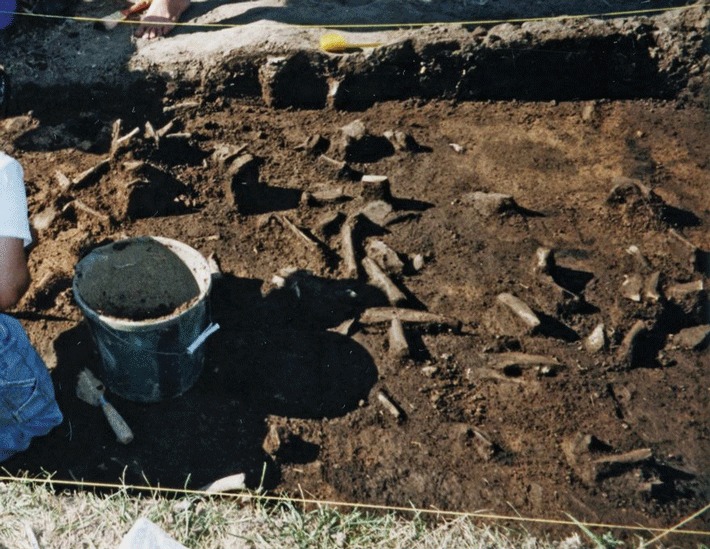 Archaeologists found chopped dog and wolf bones scattered at the small Bronze Age settlement of Krasnosamarskoe.
Archaeologists found chopped dog and wolf bones scattered at the small Bronze Age settlement of Krasnosamarskoe.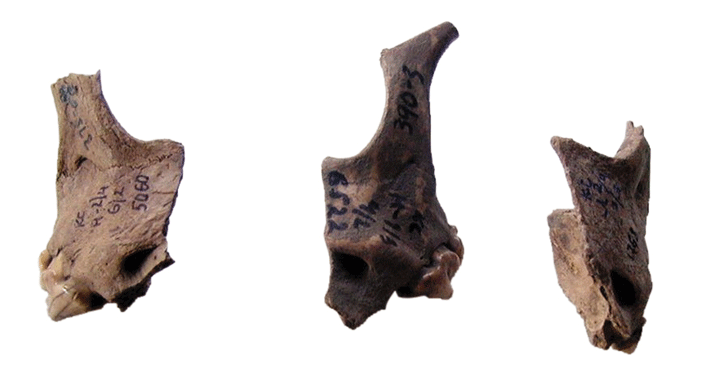
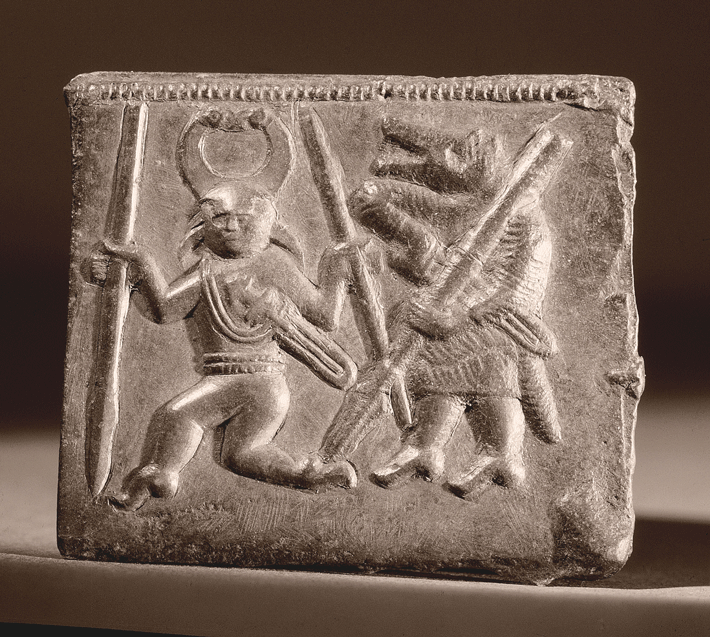
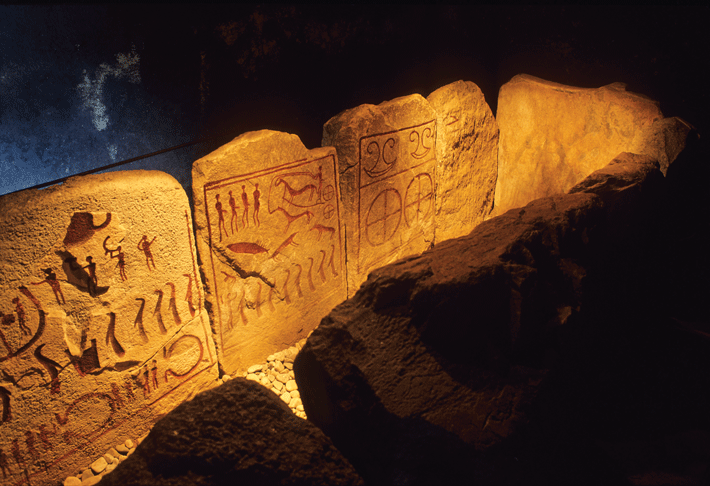
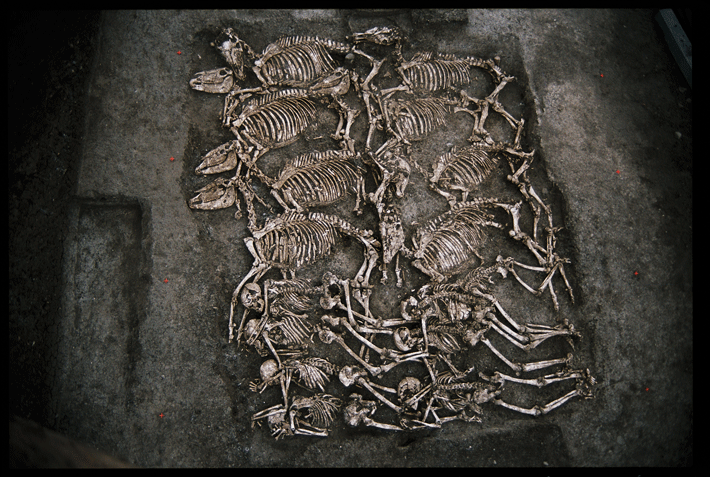







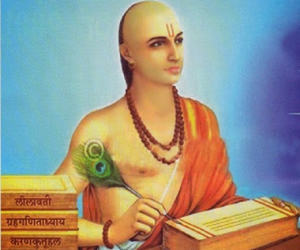















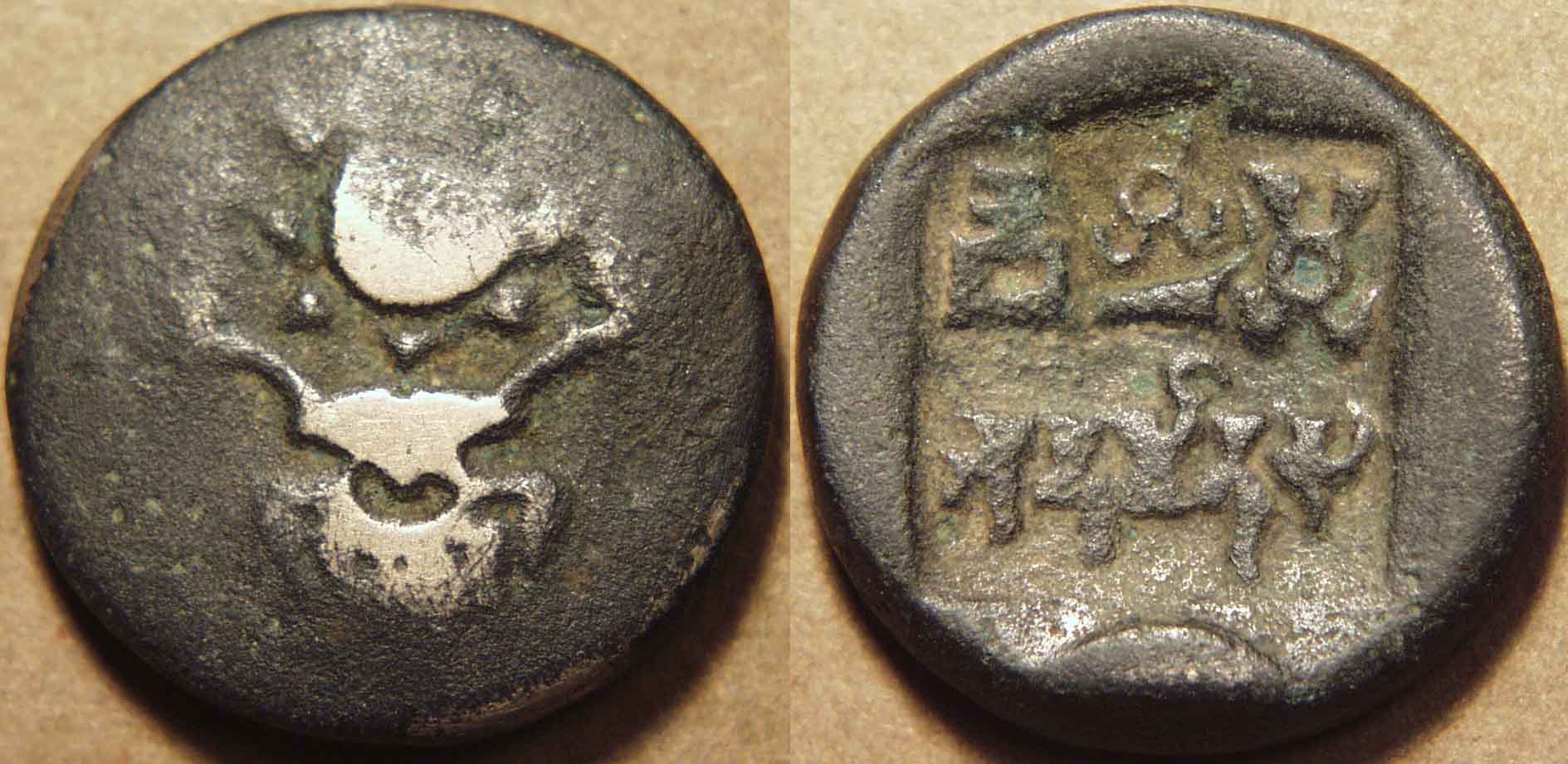

 A plan has been activated to ensure that the 45th President of the United States, Donald John Trump does not last more than a thousand days in office.
A plan has been activated to ensure that the 45th President of the United States, Donald John Trump does not last more than a thousand days in office.


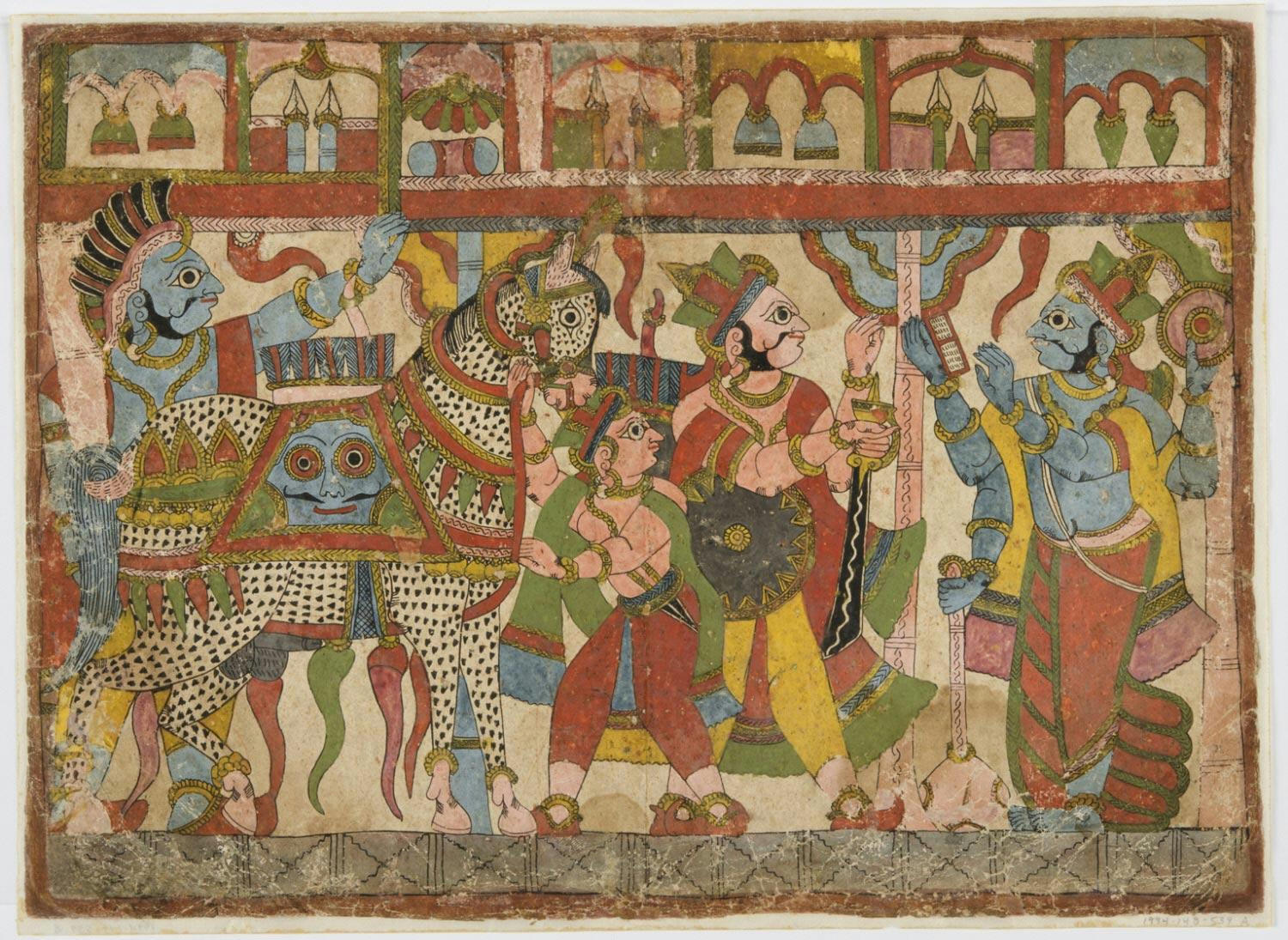





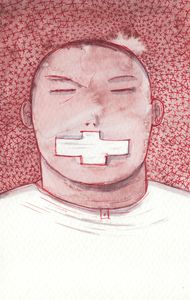
 |
| 










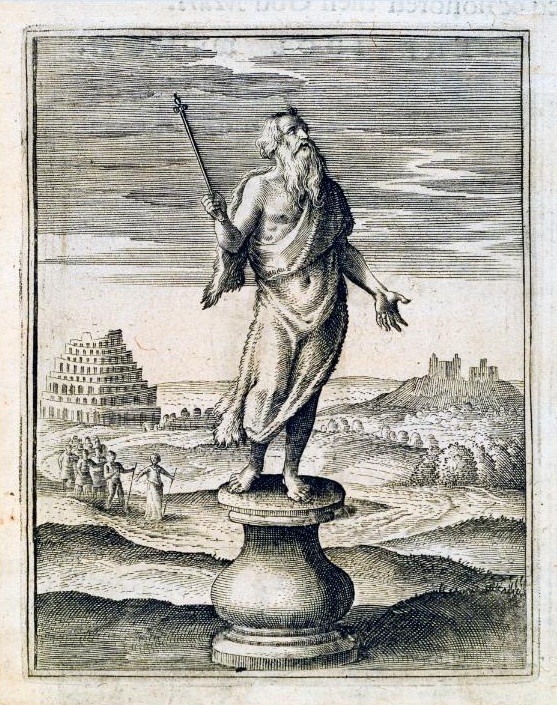


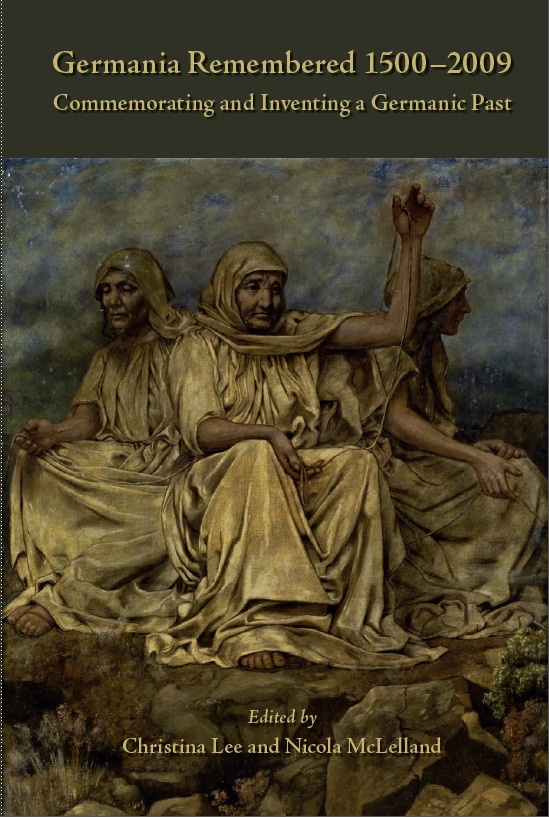







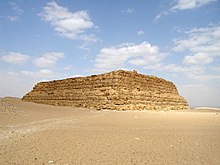


 Jassa Singh Ramgarhia
Jassa Singh Ramgarhia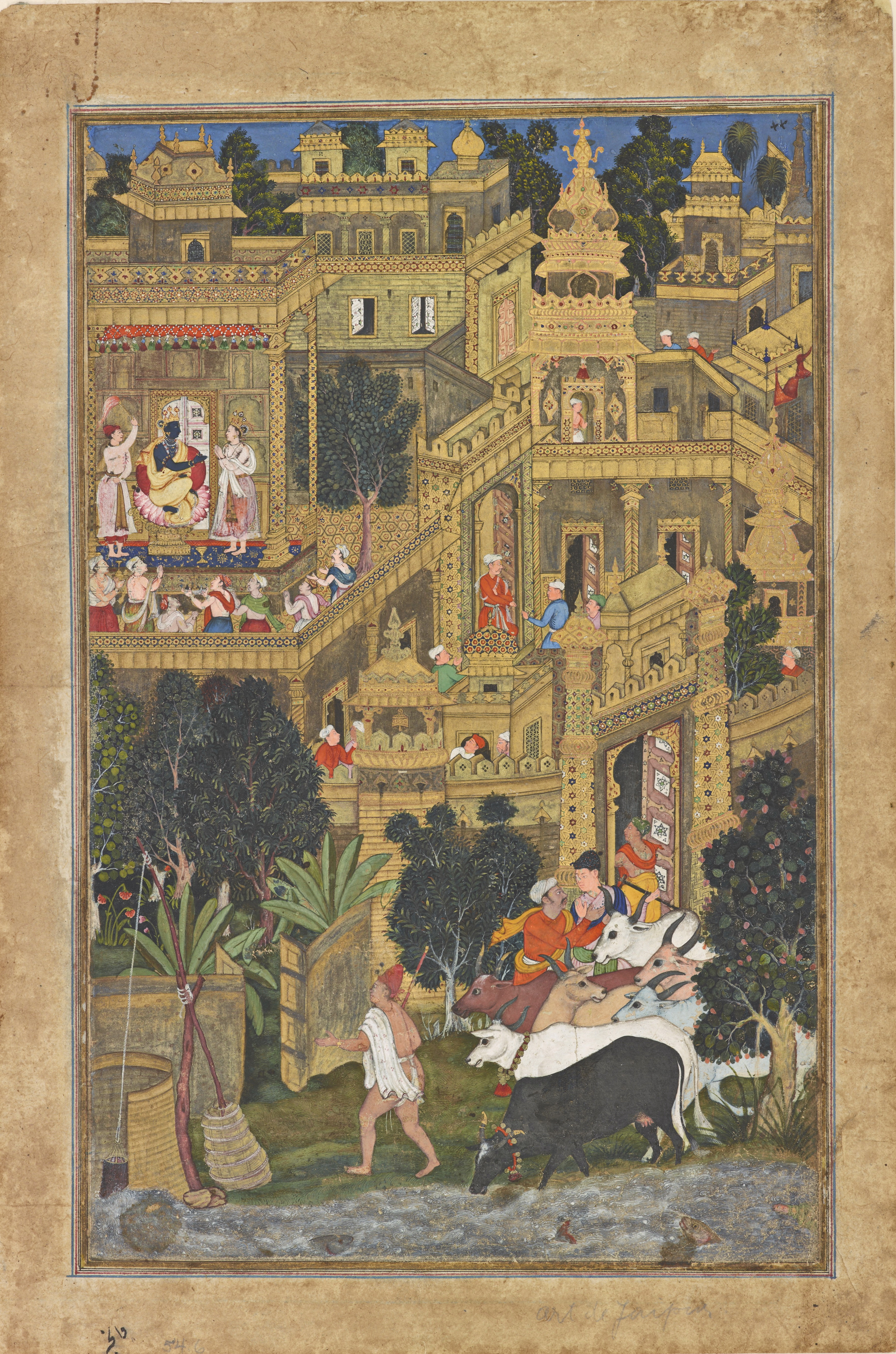

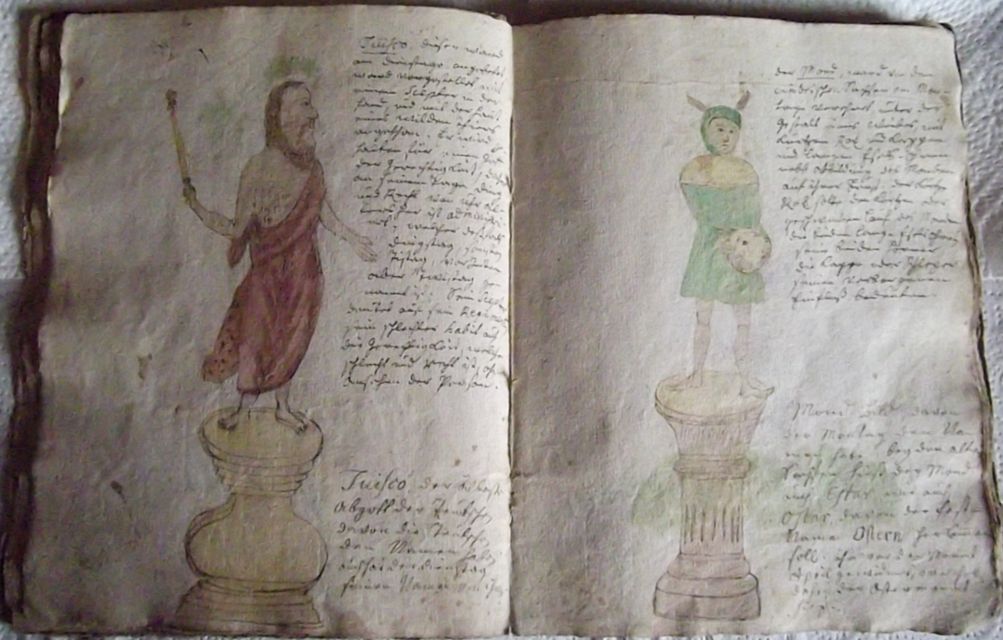
 Tuisco from
Tuisco from 

 Tuisco from
Tuisco from 






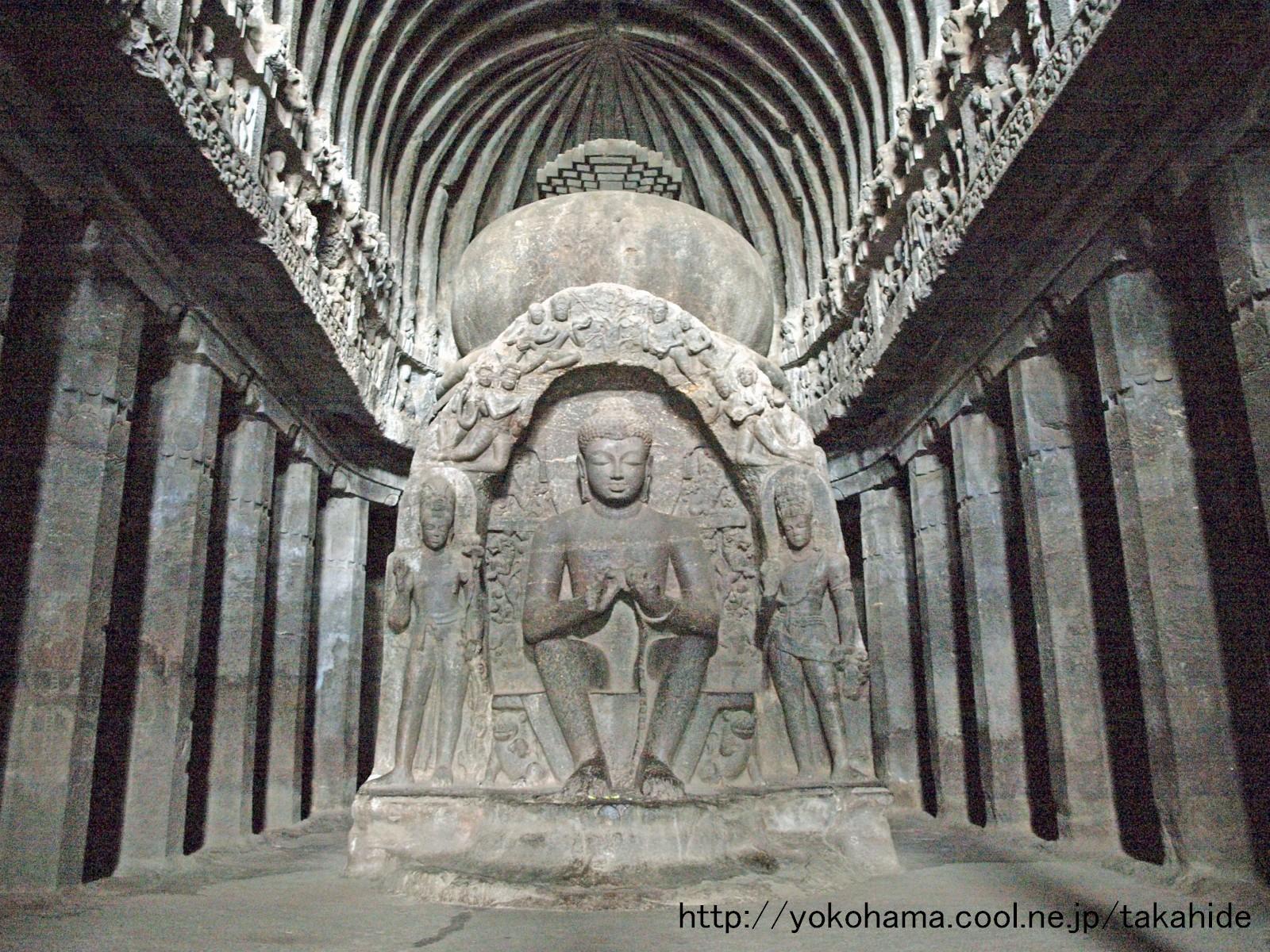


_(4558324543).jpg)
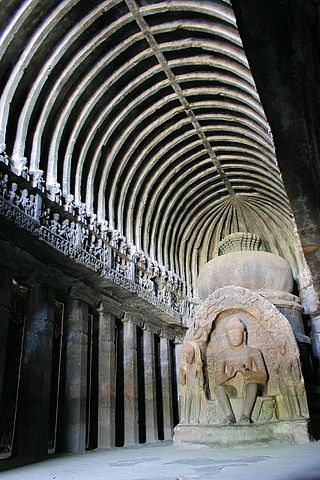 Cave 10 Visvakarma cave, Ellora
Cave 10 Visvakarma cave, Ellora

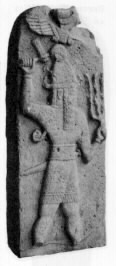





 Map of the Near East ca. 1400 BCE showing the Mitanni kingdom at its greatest extent
Map of the Near East ca. 1400 BCE showing the Mitanni kingdom at its greatest extent 























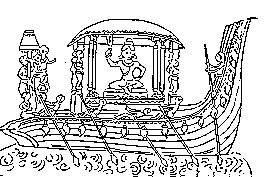
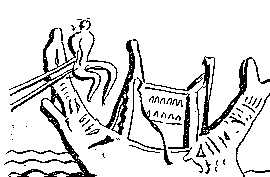
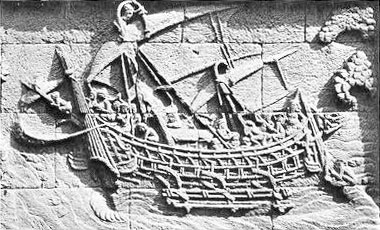
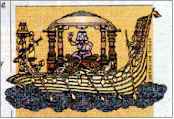 forth his monkey hosts in quest of Sita.
forth his monkey hosts in quest of Sita.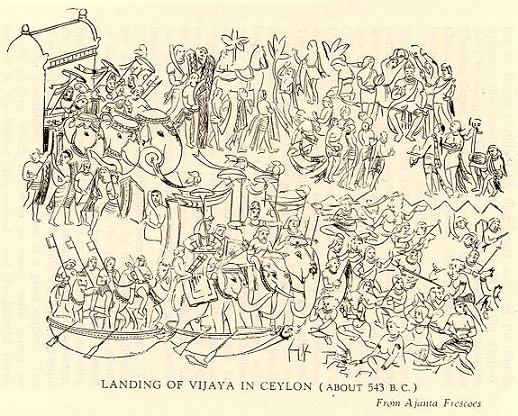
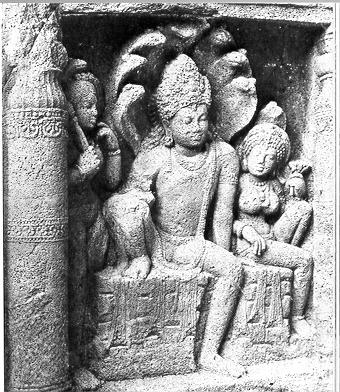
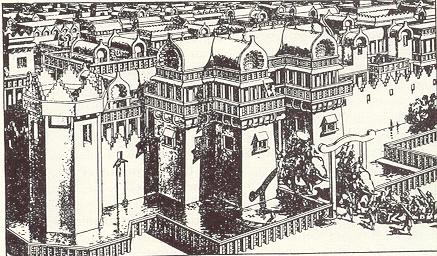

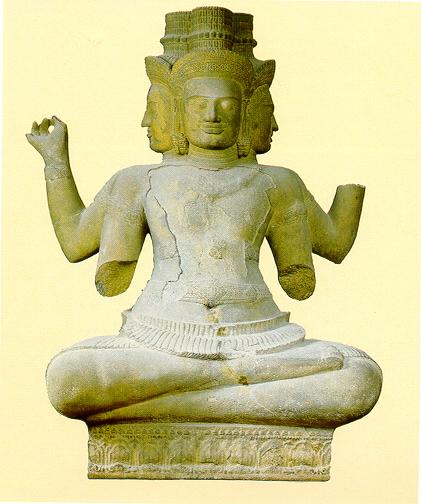
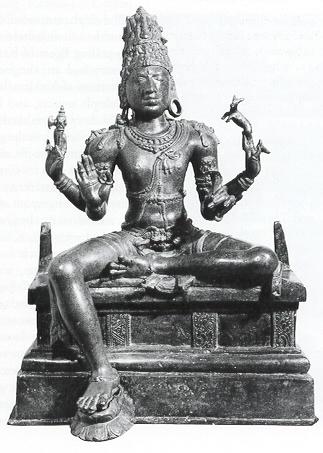
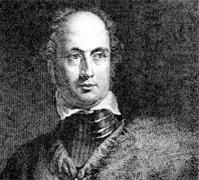
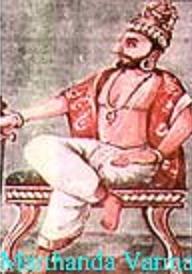
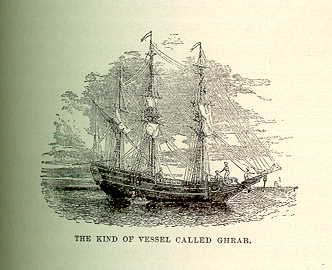
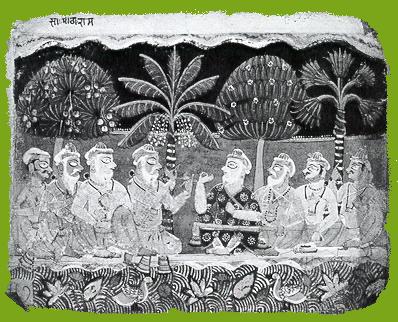
















 Sir Stamford Raffles (1781-1826) the British Governor of Java, in his book,
Sir Stamford Raffles (1781-1826) the British Governor of Java, in his book, 





.jpg)
 Ancient Greek tetradrachm coin from Akragas, 410 BCE, with a grasshopper on the right.
Ancient Greek tetradrachm coin from Akragas, 410 BCE, with a grasshopper on the right.

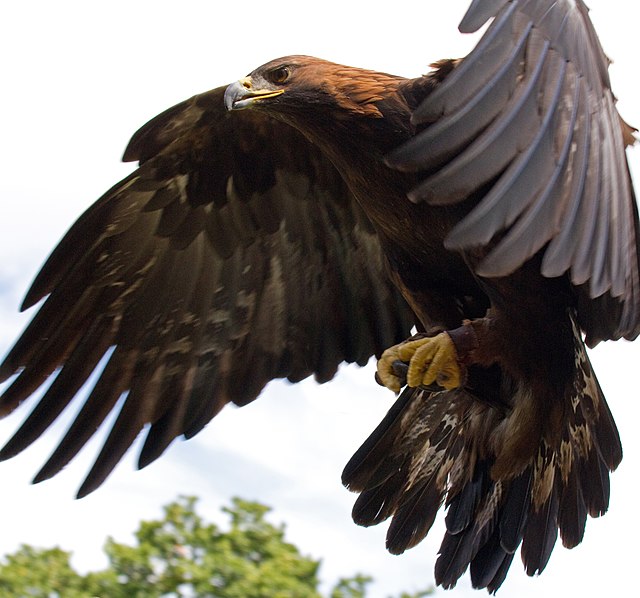

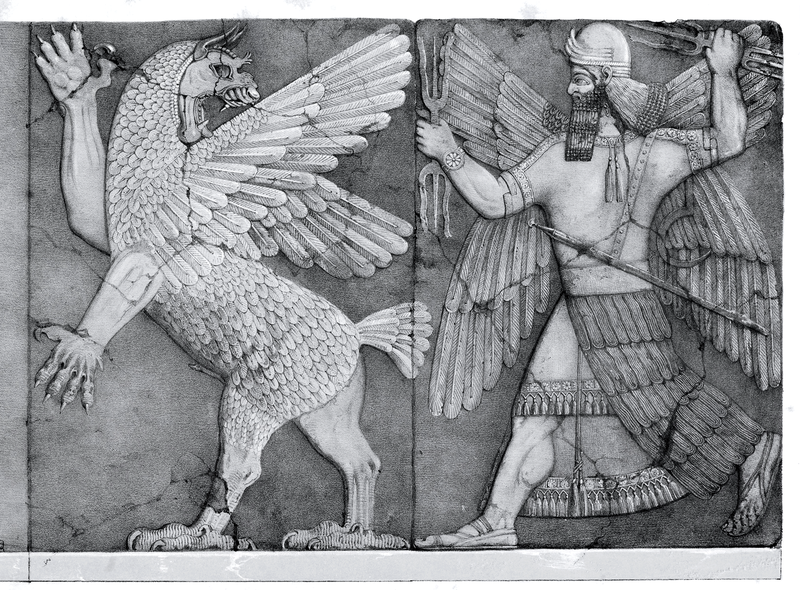





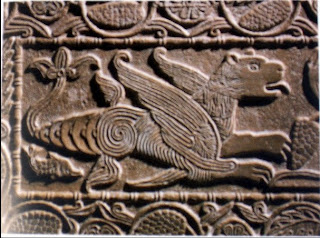

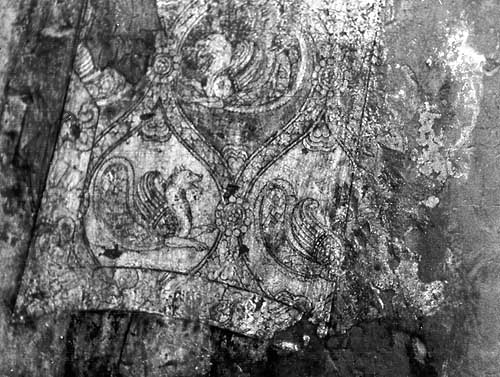
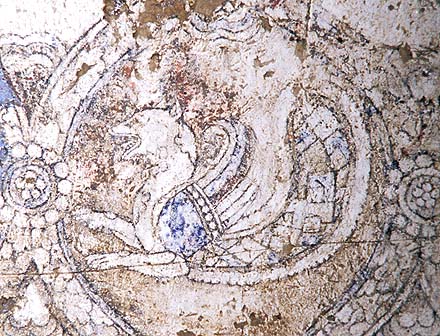
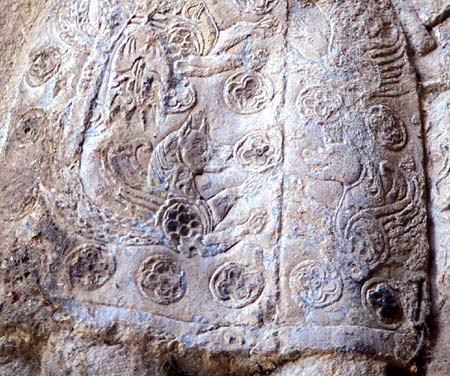
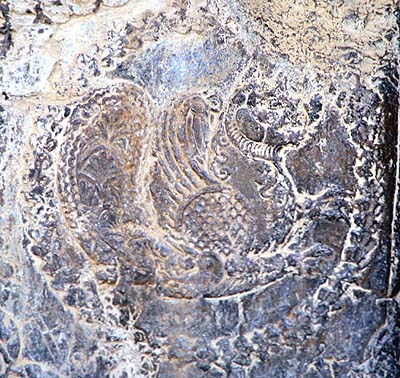
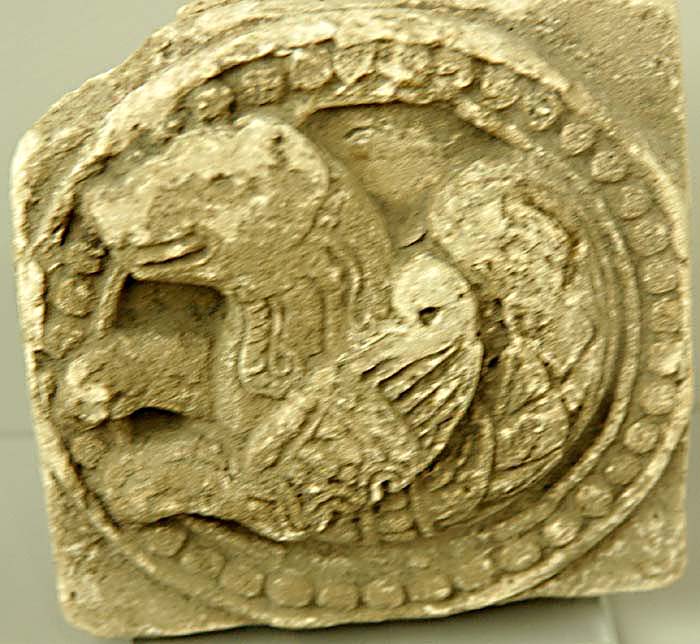
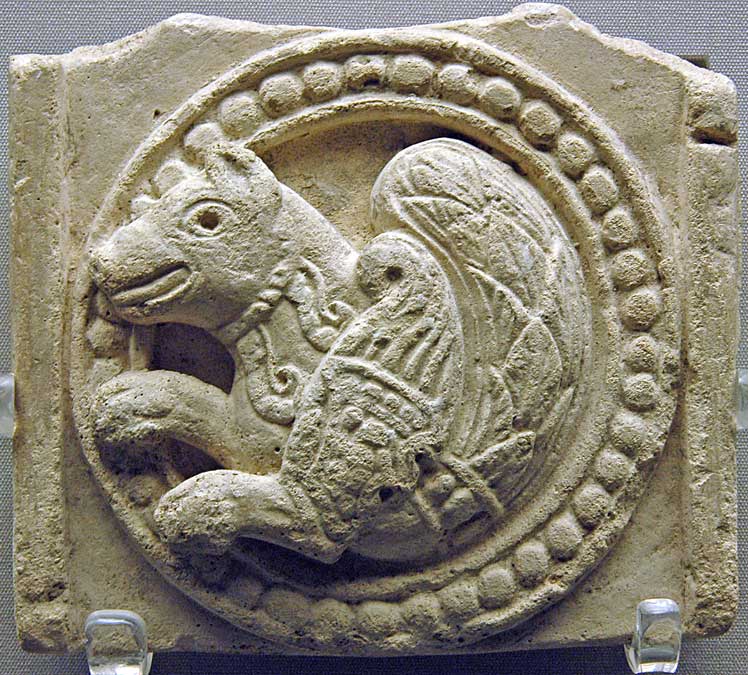




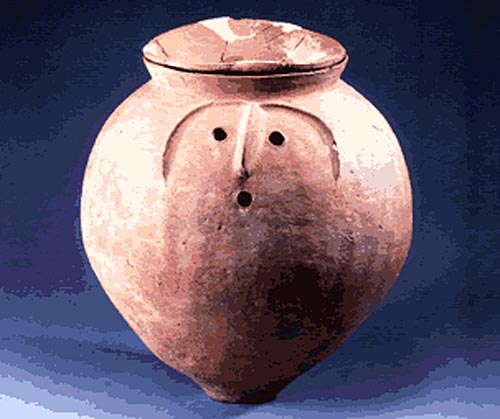 Gandhara Swat Grave culture
Gandhara Swat Grave culture

 Assuming that the Zarif Karuna (near Peshwar) pot is rebus-metonymy layer signifying muha~ 'iron ingot' (Santali), both the prominent 'nose' hieroglyph and the 'face' hieroglyph on the pot can be explained as cognate signifiers,
Assuming that the Zarif Karuna (near Peshwar) pot is rebus-metonymy layer signifying muha~ 'iron ingot' (Santali), both the prominent 'nose' hieroglyph and the 'face' hieroglyph on the pot can be explained as cognate signifiers, 
